This article was last updated on: October 2018
For an Aeroplane to be put into service and marketed, it must first pass through an arduous certification process. (Picture of a static test of a wing of an Airbus A380, in IABG, Dresden, Germany, photo taken by them).
One simply does not walk into Mordor.
And one simply does not draw an Aeroplane on a napkin, and tells the town’s brazier to make something that resembles that drawing.
And then begins to sell it in downtown, no sir.
The process, since an Aeroplane begins to be designed can easily take years. And for sure, it’s going to cost blood, sweat, and tears, like everything in Aviation.
Ah, and of course, a huge load of money! Like everything in Aviation.
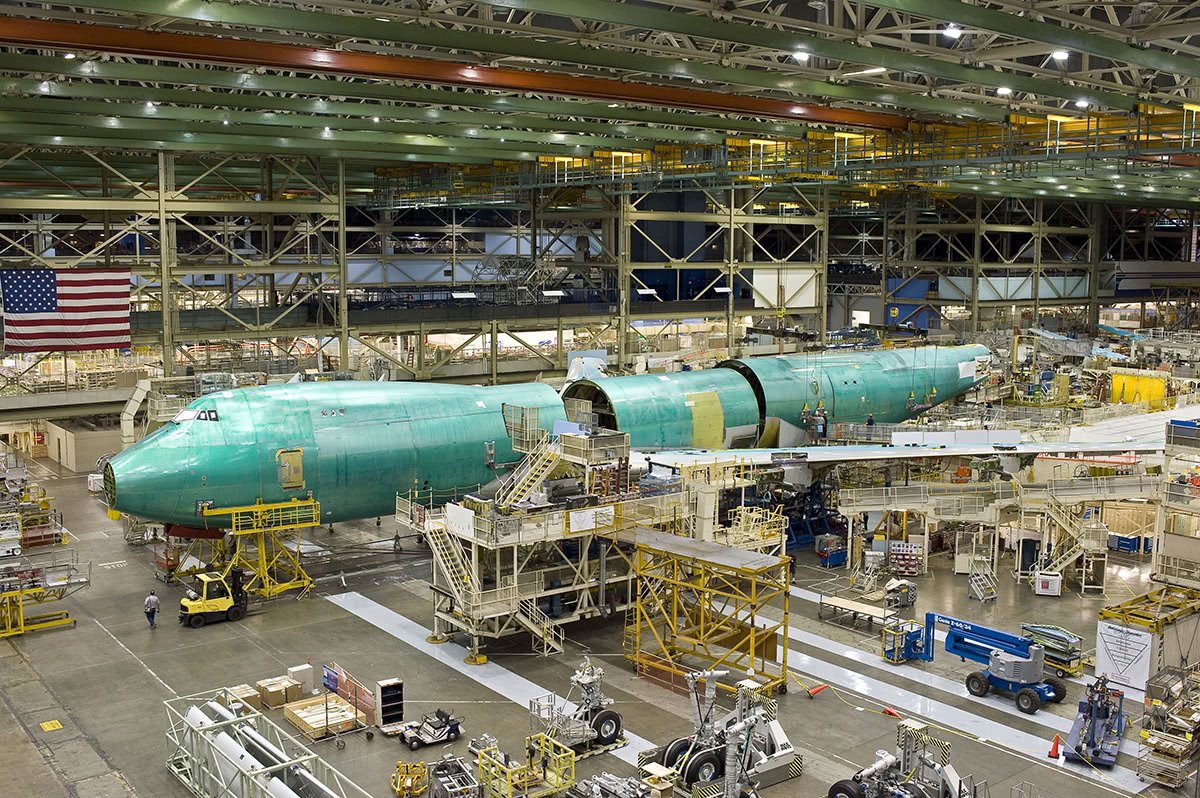
Boeing.
The certification process can vary depending on many factors. The initial place where the Aeroplane is made, the type of Aeroplane, and the use the Aeroplane is going to have, are among the most important.
To be accepted worldwide and be sold with ease, the most sought after certifications are those granted by FAA (United States), and EASA (Europe).
There are other important aeronautical authorities, such as:
–Transport Canada (Canada).
–CAAC (China).
–RosAviatsiya (Russia).
–JCAB (Japan).
They also have certification processes. Most authorities, including the Colombian Aerocivil, have processes.
But the two basic ones that Aeroplane makers that want to sell worldwide always search for, are the aforementioned two.
It’s frequent that once they are in place, there’s a process for other authorities (such as the Colombian Aerocivil, and others) to accept them. Rather than starting a whole new certification process.
Without pretending to be a detailed, or technical document. Also, subject to errors, things work more or less this way:
The Aeroplane maker decides they want to make an Aeroplane with some given characteristics. It makes some marketing research to see how well accepted would such an Aeroplane be.
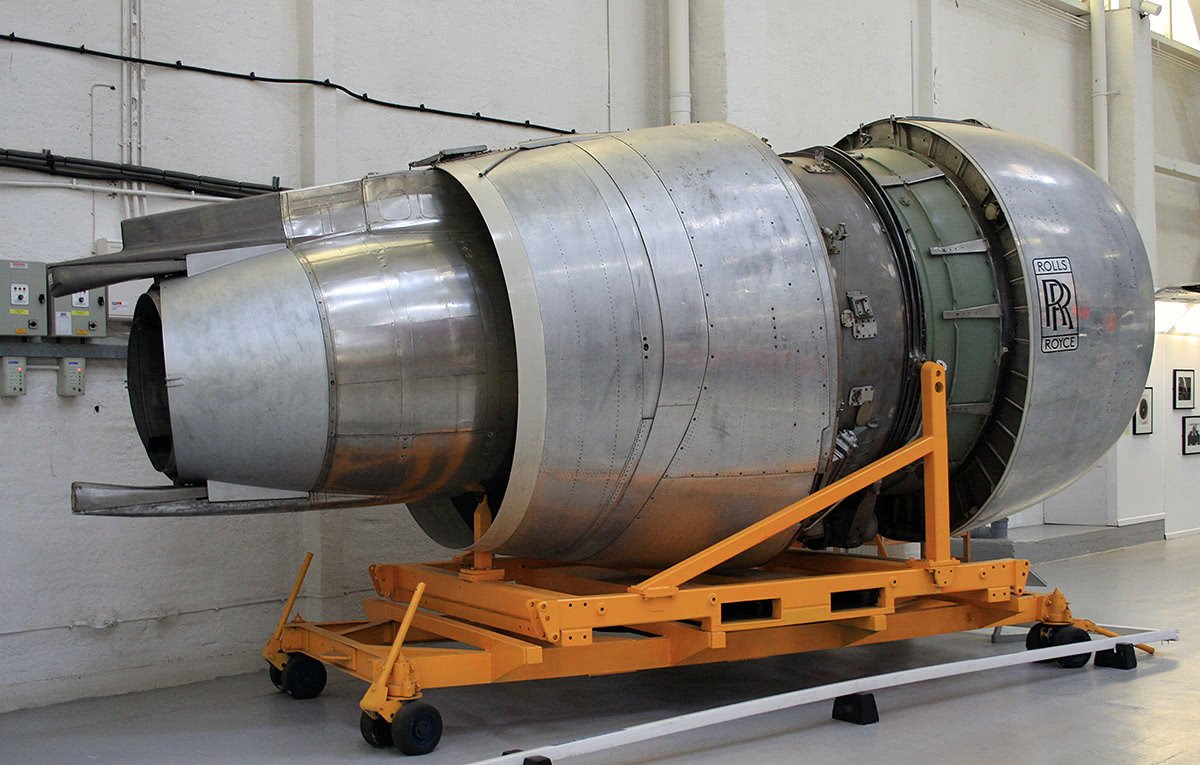
Andrew Thomas.
They choose engines that could work for their design. They choose from whatever is available in the market, or is being developed. They can also approach engine makers, and ask them to design a bespoke engine for their intended new Aeroplane.
Sometimes, they develop both things simultaneously. For instance, while Lockheed was designing the L-1011 Tristar, Rolls-Royce was developing the RB-211 engine.

Eduard Marmet.
They designed it for that Aeroplane. This development almost bankrupted Rolls-Royce, by the way. The RB-211 was later used on the Boeing 757, and other Aeroplanes.
So, they decide they are going to produce the Aeroplane. Then, “authority” is given from the highest executive levels of the company for development to start. When that happens, the approach with the aeronautical authorities for certification starts.
When this process ends and the Aeroplane has been certified, the maker receives a “Type Certificate”.
It’s the document the aeronautical authority issues, that says the Aeroplane was made according to an approved design. And that said design is in compliance with the applicable laws on safety and airworthiness of the moment.
So, the Type Certificate is the first thing that Aeroplane makers aim to obtain. Standards and laws exist about the technical tolerances an Aeroplane must have. Also, laws exist about what it must comply with to remain airworthy.
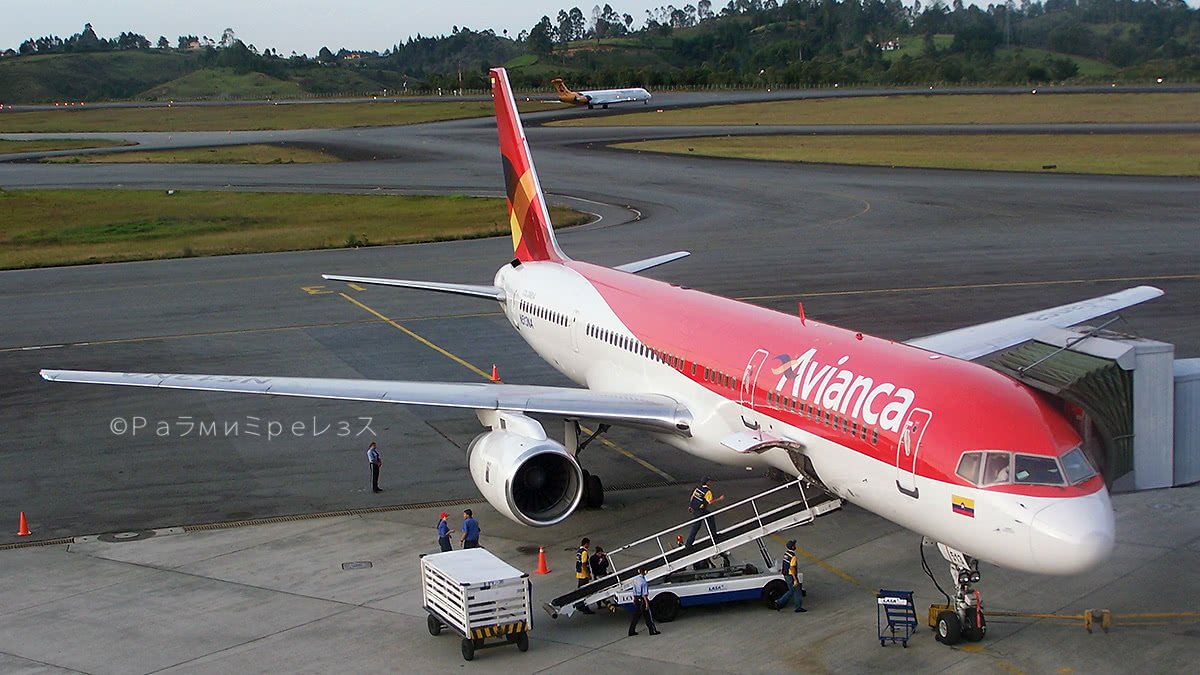
Ramírez.
The maker and the aeronautical authority officially meet, and the certification process starts.
Certification is based on the rules that are in place at that time, and makers usually have 5 years to finish the whole process from that moment onward. This applies, at least, when the base of the process is the FAA part 25, or the EASA rules.
This is called the “certification basis”.
This means, that if there were to be a change of rules in this 5 year period, the project could still continue to advance without taking that change into consideration. As it’s based on whatever was in place at the moment of the “certification basis”.
That is, the conditions of that moment are “frozen”.
There is the possibility of other changes indeed, depending on how serious the situation is. But in general, this is how it works.
For example, imagine a test they need to do at 150 knots minimum speed according to the law of the moment.
On the second year, there was a change of the law, and now that minimum is 160 knots. The 150 knots initial requirement is still in force for this project, as agreed when the conditions were “frozen”. And the same applies generally to materials, systems, processes, etcetera.
That’s why it’s of paramount importance to finish on time. If the process takes more than the 5 years, or whatever time is given, they would need to make a request for authorisation to extend the process. If this happens, the initial freezing of conditions could no longer be valid.
Here, the maker would have to do tests with the rules in place at the moment in which the extension was requested. These rules, probably, are different from the rules in place at the time of the initial request.
This can mean many things. From simply sitting a couple of tests again with new parameters, all the way to the full re-design of the fuel system. And other complex and expensive issues.
So, there comes a moment when there’s an understanding with the aeronautical authority about the fact that the process will begin.
They agree what the rules of the game are, and what every player expects from the other. The players here being the aeronautical authority, and the Aeroplane maker.
When this happens, things get real serious.
In these rules of the game, they establish how the maker is going to demonstrate that the Aeroplane complies with each one of the requisites established in the certification basis. Also, to what extent, and in what stages the aeronautical authority will be directly involved.
After they settle this, they build the testing prototypes. They subject these prototypes to various static tests in the beginning.
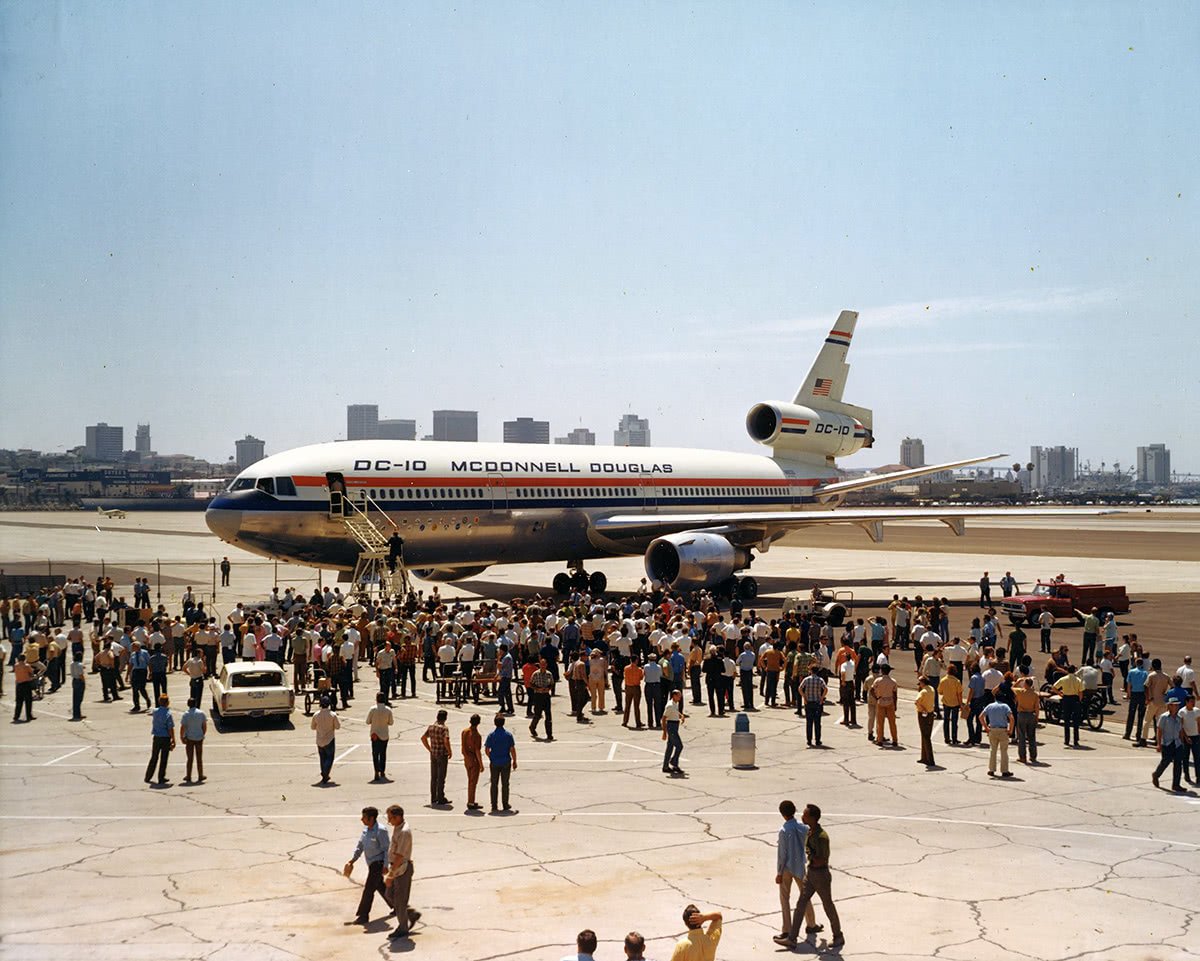
San Diego Air and Space Museum Archive.
They test all their systems. Including the electric, hydraulic, pneumatic, fuel, among others.
Each one has its own specific parameters. The systems are tested by experts from the Aeroplane maker, and also, the aeronautical authority.
They use one of the prototypes on destructive testing, that is, they use it like a chav to see how much can it take.
They stress it until it’s destroyed, the bend its wings until they break. They simulate an amount of cycles the Aeroplane will probably never have when it enters service, and things like that.
The data is used to get a certain concept about the structural strength the Aeroplane has, and to see if it complies with the rules in place about that.
There can be cases of no compliance, or of not fulfilling the performance expectations of the maker. When they arise, whatever fails needs to be re-designed to the extent it wasn’t up to par.
This can be costly, and significatively delay the process.
They make integration tests of all the systems after this. For instance, how does the electric system interact with the hydraulic?
They make ignition tests and taxi tests, low and high speed.
Once both players are satisfied with the ground tests, the flight tests begin. This is the most critical period.
In these tests, the Aeroplane flies commanded by test Pilots from the maker. Progressively, they test its systems.
First it’s made lightly. They don’t climb to the limit, they don’t reach the maximum speed, the landing gear is not retracted.
Once these “soft” tests are satisfactory, they begin to test the Aeroplane in more demanding situations.
They climb to the service ceiling, the Aeroplane is taken to its maximum allowed speed, the landing gear is retracted. They also test the high-lift devices, they determine its wake turbulence, etcetera.
They perform other risky tests. Such as determining the stall speed, and determining the maximum demonstrated crosswind and tailwind components.
They make aborted take-offs. This is, accelerating almost until taking off, and then stopping suddenly, to know the resistance and temperatures of the brakes.
They test the engines’ water ingestion limits. They do bird strike resistance, on purpose tail strikes while taking off, and things like that.
In the video below, you can see the severity of the tests I’m mentioning. They hit a McDonnell-Douglas MD-80 so hard while they testing it on its certification process, that it literally broke.
There are tests so risky, that the test Pilots use helmets, parachutes, and an orange coloured uniform. This last item, to aid the identification efforts in case the worst happens.
When they finish all these tests, they compare the results with what they expected. They deem Aeroplane’s performance as satisfactory, or not, and plan whatever re-designs may be required.
Once the data is consolidated, the flight envelope is obtained. This is, the conditions in which the Aeroplane may safely operate.
Maximum and minimum speeds, maximum and minimum weights. Maximum descent, climb, and turning angles, and other such parameters.
These are the data the Pilots will use when the Aeroplane is in service, and that will be available in the manuals.
It’s forbidden to fly the Aeroplane beyond, or below these specifications. Whoever does it, is doing something that is not technical and is illegal. He or she is also becoming an unwilling test Pilot, not mentioning the fact that it can be his or her last flight.
With the flight envelope almost ready, the flight program proceeds in different conditions. Now, also with Pilots from the aeronautical authority.
The Pilots from the authority won’t fly that thing until it is proven to some extent, hihihi.
The authority will be involved, according to whatever they agreed when they ratified the certification basis. Everything varies according to the program’s particular conditions.
No two certification programs are the same. Even though there are elements shared by all, of course.
There comes a point when the systems are successfully integrated and working like they should. When this happens, they start to make flights simulating the operations they expect the Aeroplane to have, once it’s put to service.
Maximum range and maximum weight flights, airline-like flights. Flights from high and hot Airports (high elevation and temperature), intense cold and heat flights, and other scenarios.
As they make progress in the certification program, the maker produces the respective manuals. They also make the training program the Pilots and the mechanics of the Aeroplane are going to have.
On top of this, they create the maintenance program. The operators will need to service the Aeroplane according to this for it to continue to be airworthy.
Finally, the aeronautical authority issues the desired Type Certificate. This happens when the agreed flight hours are reached, in the agreed scenarios, and the results are satisfactory.
As you can see, several years can pass from the moment the maker begins to design the Aeroplane, until the certificate is issued.
Now, this is generally speaking about a commercial Aeroplane for transport of passengers or cargo. The processes vary somehow when the Aeroplanes will have other uses.
It can be a little different when it’s an Aeroplane destined for general Aviation, or acrobatic activities. Military Aeroplanes and helicopters also have their own parameters, and so on.
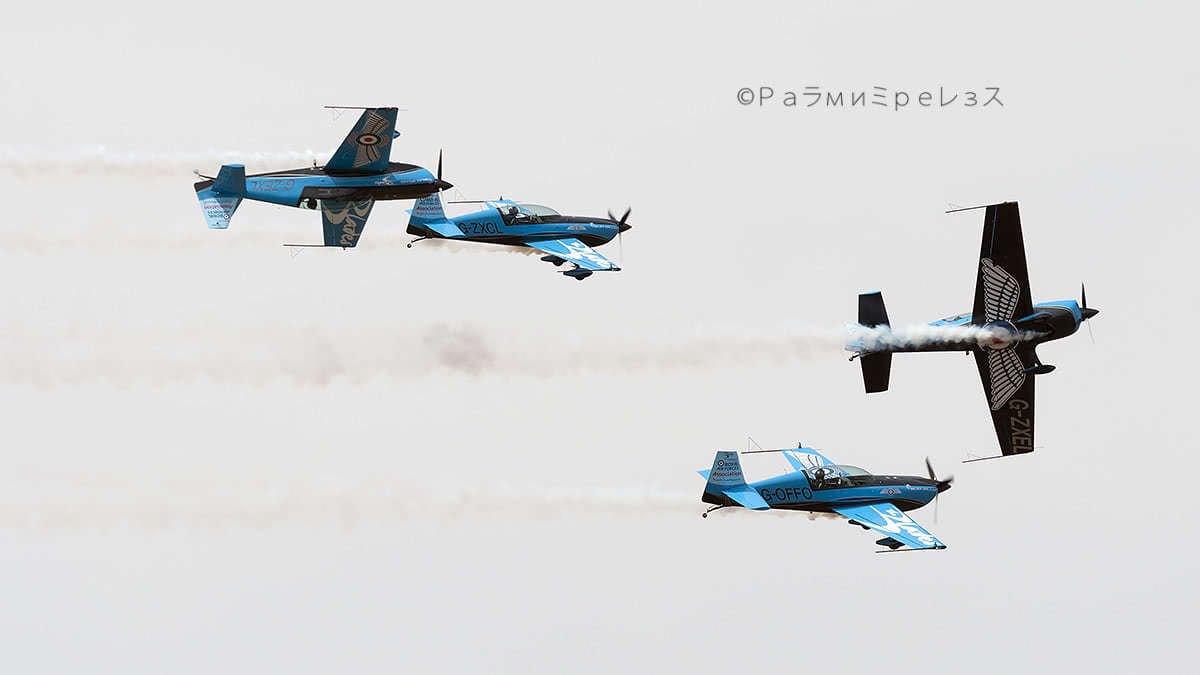
Ramírez.
There are also experimental Aeroplanes. For their part, the engines, and the propellers have their own certification processes. These processes have their own nuances.
The Aeroplane maker must also obtain something called the Production Certificate. This can as complicated to get as the Type Certificate.
This Production Certificate is issued to a maker when the aeronautical authority is satisfied that they are able to mass produce the Aeroplane that has the Type Certificate. They have to do it keeping the same technical characteristics, with high reliability.
I am not sure now what is required to get the Production Certificate. But I do know that it’s an arduous and long process, like everything in Aviation.
It involves industrial processes, supply chain, quality control assurance, and other things.
A maker that has an Aeroplane with a Type Certificate, and whose operations have a Production Certificate, is qualified to mass produce this Aeroplane.
It is also qualified for every unit to have an Airworthiness Certificate. The certificate is the Aeroplane’s MOT test, it’s mandatory for it to be located on a visible place.
It’s illegal for an Aeroplane to fly without it, except by a waiver from the aeronautical authority.
The maker that has all this can of course sell the Aeroplane.
If a maker doesn’t have a Production Certificate for a particular model, but has a Type Certificate, it will be able to produce the Aeroplane.
But each individual unit that leaves the production plant will need to undergo a thorough revision by officials from the aeronautical authority. Only after this, it will be issued an Airworthiness Certificate.
And this, as you may imagine, would be a slow, wasteful and costly process. It wouldn’t allow the mass scale economies needed for such a project to be profitable.
There have been a few such cases. And it’s been a pain in the ass for the maker, until they have been able to solve the situation.
So, in normal conditions, this process ends with an Aeroplane that has a Type Certificate. The Aeroplane can be mass-produced by the maker because it’s allowed to, due to having a Production Certificate. And, each individual unit has an Airworthiness Certificate, allowing it to operate.
When the yearned for objective is finally achieved, it is usually an important event. It has its respective press conference and celebration, as we can see in the photo below.
It’s from when the Sukhoi SSJ-100 obtained its certificate.

SuperJet International.
This Certificate of Airworthiness will continue to be valid. So long as the Aeroplane follows the maintenance program designed in this process, and other corresponding dispositions.
This program has to be carried out by licenced mechanics, according to the designed training program.
Last but not least, the Aeroplane has to be flown by Pilots trained according to the program designed for them. With the respective Type Rating on their Pilot’s licence.
Welcome to the world of Aviation! Like the guy that sold my first Colombian navigation charts kit told me back then.
This, after having left me almost 200 quid out-of-pocket, and it was just starting. And we’re not going o talk here about the STCs, the ADs, and other things.
Well, good.
The Airbus A380, one of the world’s biggest passenger Aeroplanes, and the only one to feature two full levels, was undergoing this process amid the last decade.
It was already in the flight tests phase. And now, they had to test its performance in high elevation Airports.
In Aviation, there are important distinctions between the terms “elevation”, “height”, and “altitude”. I will summarise here briefly, without getting too technical:
The elevation is the vertical distance between a point on the ground, like an Airport’s runway, and the mean sea level.
The height is the vertical distance between something that is flying, and whatever it has below on ground.
The altitude is the vertical distance between something that is flying, and the mean sea level.
Each term is used in different scenarios, for different purposes.
That is, points on the ground have an elevation. In Aviation, it’s usually given in feet, even though metres are used now and then.
This is important, because the higher you are with respect to the mean sea level, that is, the more elevation you have, the less dense the air is.
And the less dense the air is, the less air the engines (regardless of their type) have to produce a jet backward that will move the Aeroplane forward, as per Newton’s laws.
We call this jet “thrust”, and is one of the four basic flight forces. So, the more elevation an Airport has, the more sluggish the engine of an Aeroplane taking off from there will be.
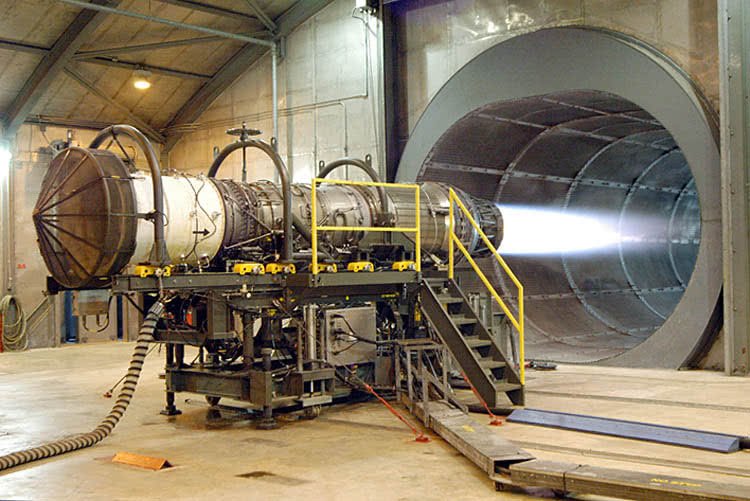
USAF.
The less dense the air is, the fewer particles will be flowing over the wing. Thus, the wing will need more speed to produce a force that will make the Aeroplane fly and support its weight.
We call this “lift”, and is another of the four basic flight forces. So, the more elevation an Airport has, the less the wings have to “grab onto” for the Aeroplane to keep climbing, or even start flying at all.
The other factor affecting this density is the temperature. The hotter the air, the less dense it is, with all the effects that has.
If you’re a frequent traveller, compare the normal take off of an Airbus A320 from Bogota for example, to one from Cartagena.
The Bogota one will accelerate for a long time and take longer to take off, while the Cartagena one accelerates and takes off quicker. And we’re talking about the very same Aeroplane, with the same engines.
The worst combination for an Aeroplane’s performance is an Airport with high elevation, and high temperature.
So, Airbus needed to have the data on the behaviour of the Aeroplane in such conditions.
And as it happened, José María Córdova Airport (Medellín – Rionegro, Colombia) met the conditions they needed.
It’s a relatively high elevation Airport with approximately 7000 feet (Bogota has 8360, Cartagena has 7). It has a good runway, good apron space, and infrastructure for such a big Aeroplane.
By then, it didn’t have much traffic either.
There are other high elevation Airports around the world. Such as Addis Ababa in Ethiopia, La Paz in Bolivia, Eldorado itself in Bogotá, among others. But at that moment, they decided Rionegro fit the bill just nicely.
So, Airbus brought the Aeroplane all the way to Colombia to test it in those conditions. To see its behaviour and performance, and to put all that data in the manuals and the flight envelope.
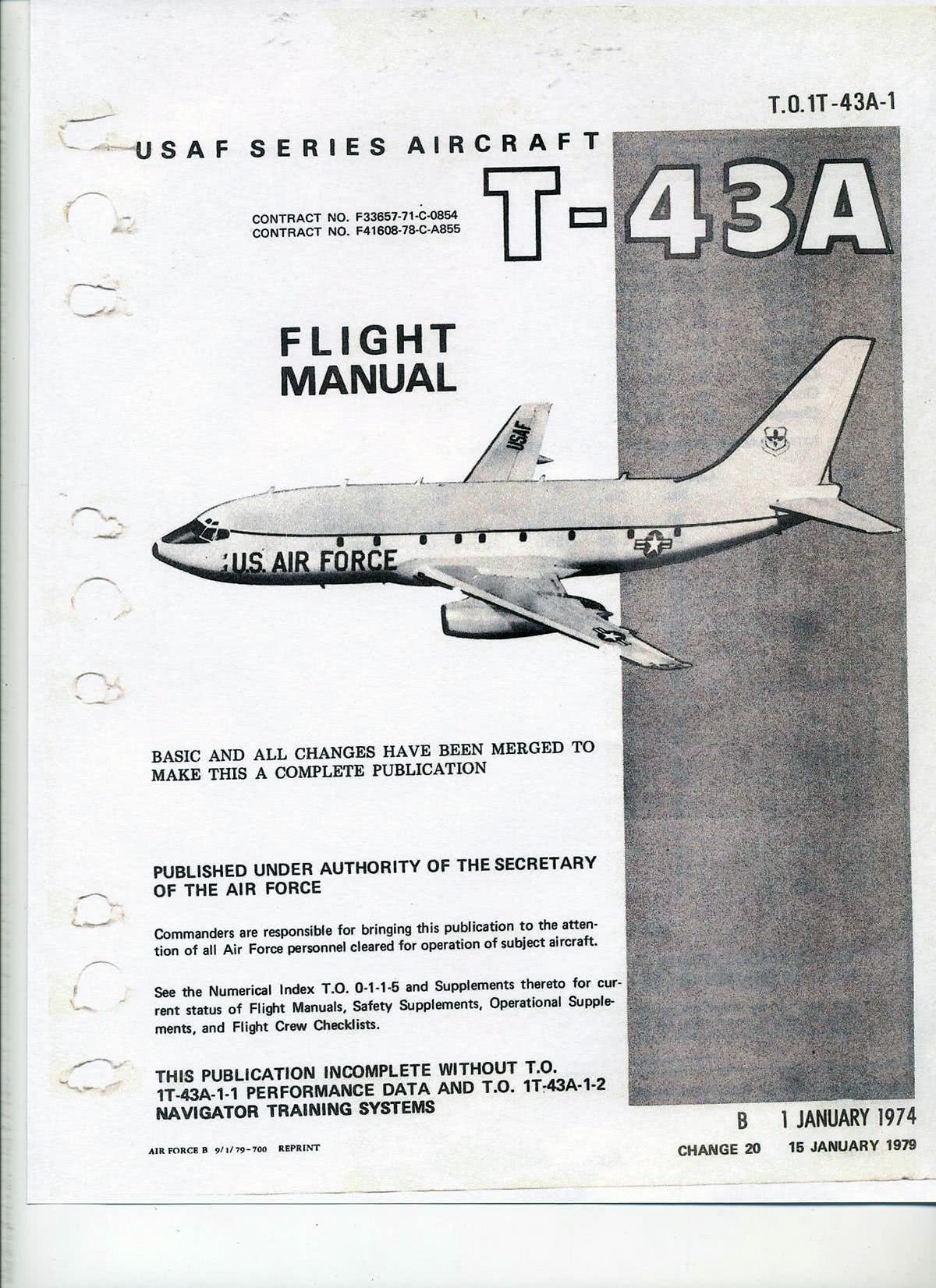
USAF.
Also, to see if the engines and the systems had any kind of unexpected problem operating in those conditions.
The novelty wasn’t only the fact that the Aeroplane was coming. It was the very first transatlantic flight of the Airbus A380’s history. The very first landing in America, it came to Rionegro before it ever went to the United States, or Canada.
The rumour spread, and lots of people went to the Airport to see the Aeroplane. I didn’t imagine that so many people would be interested on something like that in Medellín.
But yes, a private and technical matter, that in theory was of interest only to people in the industry, became the event of the moment.
I was one of those interested people, I had finished high school not too long ago. I was planning how to get my Pilot’s licence, in view of the obstacles I had, mostly because of money.
I had free time, and the Aeroplane was going to come right to my local Airport. How could I miss it?
The Aeroplane was supposed to arrive on January the 8th, 2006. But there were some issues in Toulouse, France, the place it was coming from, and it didn’t arrive that day.
The crowd had to go back home empty-handed.
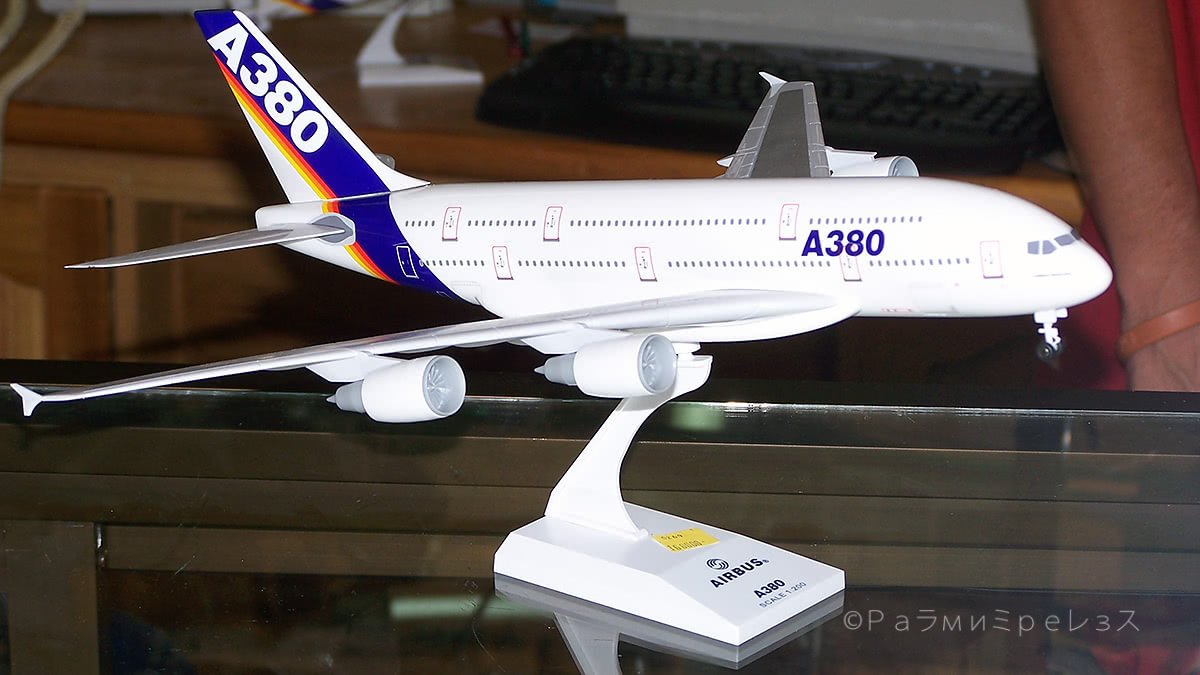
Ramírez.
That January the 8th there were only regular operations in the Airport. No giant Aeroplane being certified appeared.
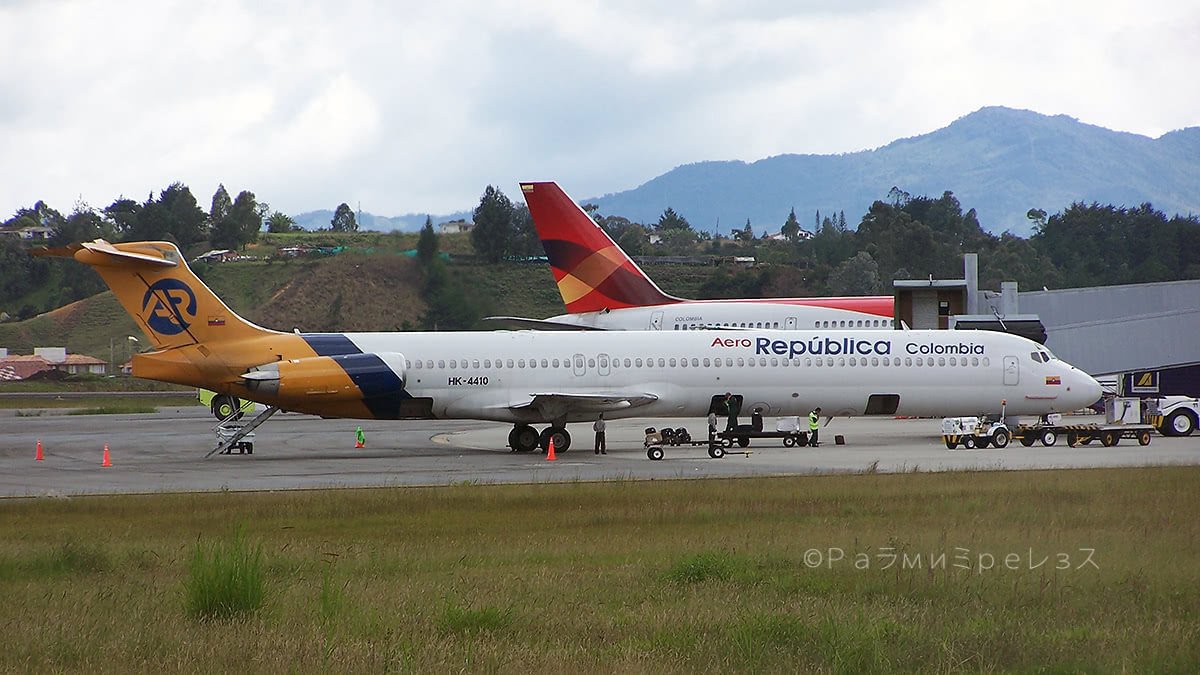
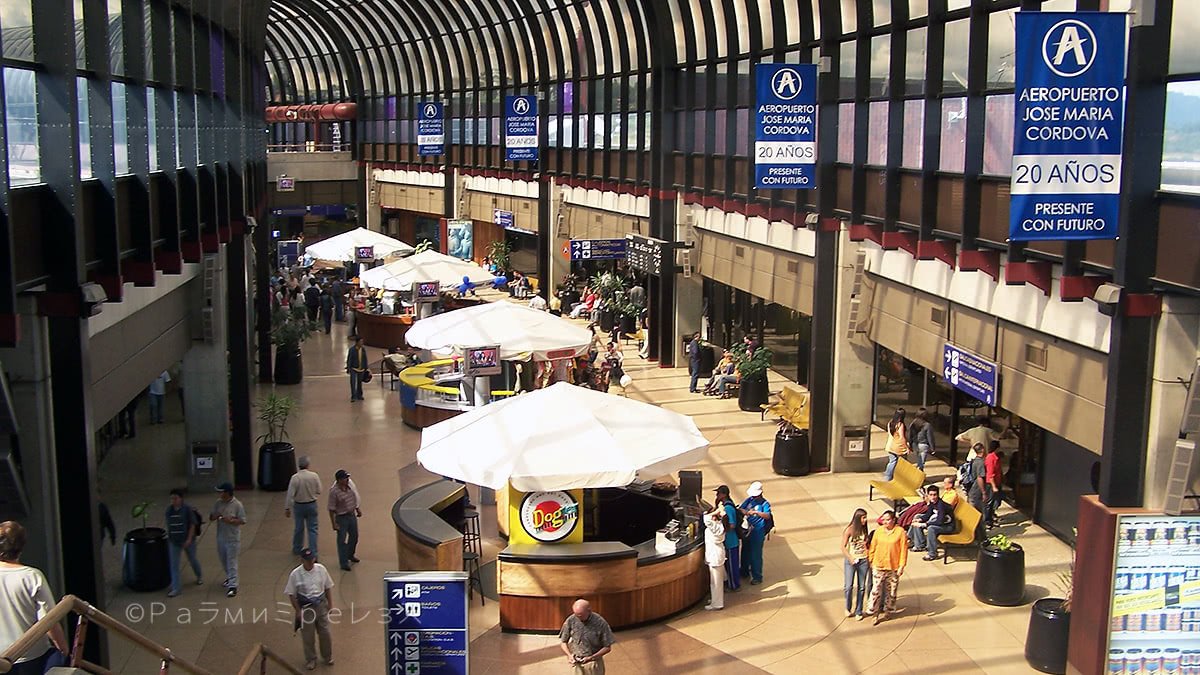
Ramírez.
On January the 9th the crowd was even bigger, but the Aeroplane didn’t come that day either. At about 15:00 local time, policemen began to walk and shout:
-“It will come tomorrow!”.
People said:
-“Again? Aaaaahhh noooo!”.
But yes, that day it didn’t come either. Bad luck like a scooter.
The only more or less certain thing I had on January the 10th, was that the Aeroplane was going to come unless something weird happened.
But I didn’t know the time, or anything else for that matter. Back then, we didn’t have services such as Planefinder or Flightradar24. Neither did I have a smartphone with a data plan, or something like that.
I had the typical Nokia, whose battery would last 3 weeks, and its most advanced function was SMS, or snake.
I didn’t have a car either. And I foresaw difficulty to reach the Airport, and have a good vantage point if I waited too long. So, I chose to be there from 08:00 local time just “in case it arrived”.
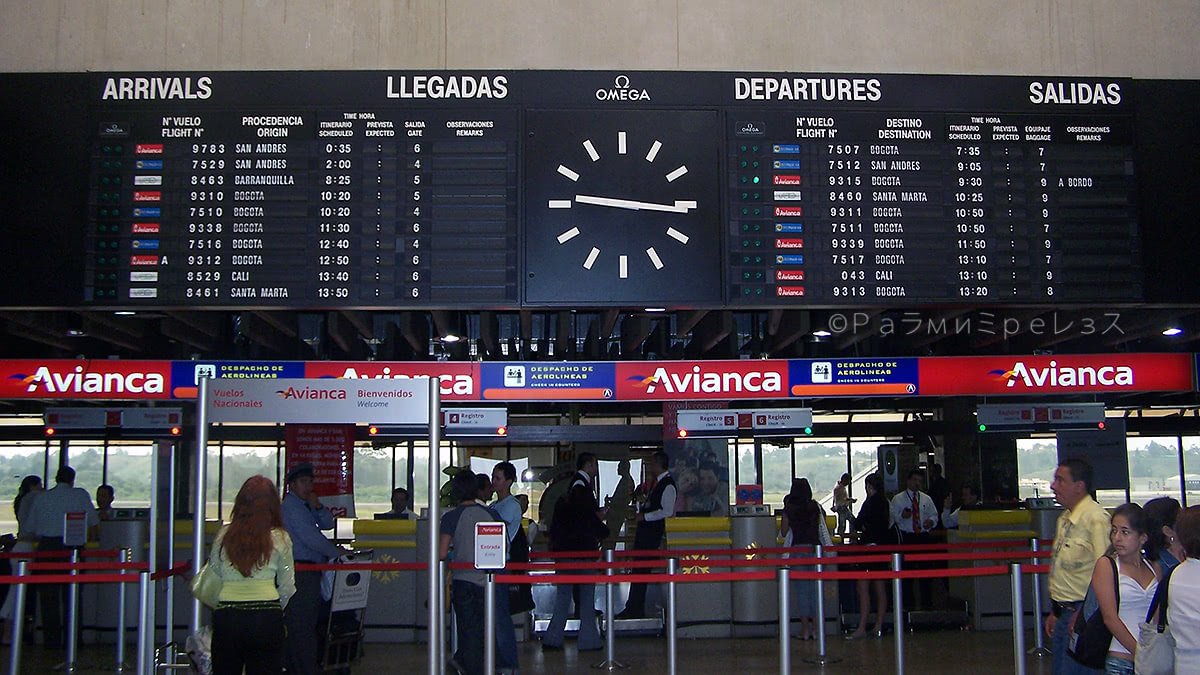
Ramírez.
Friends from other places had come, including my friends Willem from The Hague. He was in Colombia, and came to Medellin only to see the Airbus A380.
With him, I took the public bus to the Airport early, and I was there in the morning according to the plan.
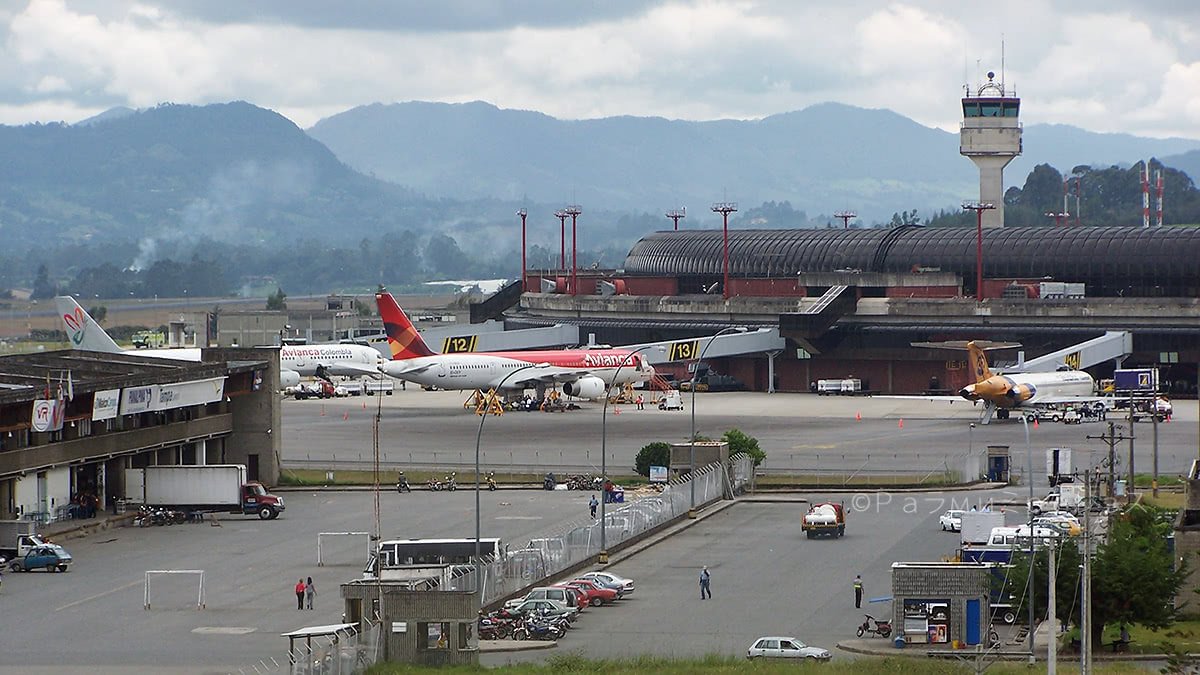
Ramírez.
The Aeroplane didn’t arrive in the morning, and more people kept coming to the Airport, it was getting packed.
Back then, I didn’t have a camera of my own. I had a Kodak DX7590 camera that Juakax had lent me, and that I couldn’t still properly use.
Meanwhile, I took photos of the other traffic that was there with Willem, and more people who joined us.
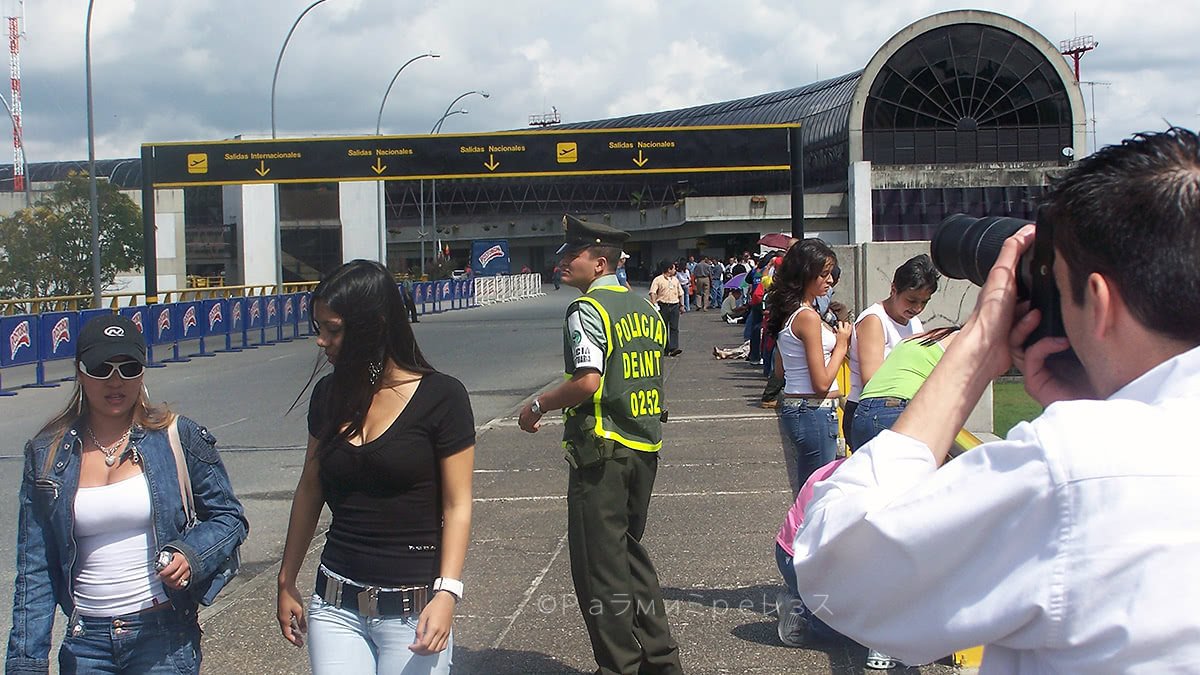
Ramírez.
We stayed put the moment we realised it was going to be hard to keep our place if we moved, and we remained there.
Suddenly, the firefighters began to test their machines for the reception. Meanwhile, the Airport was operating as usual.
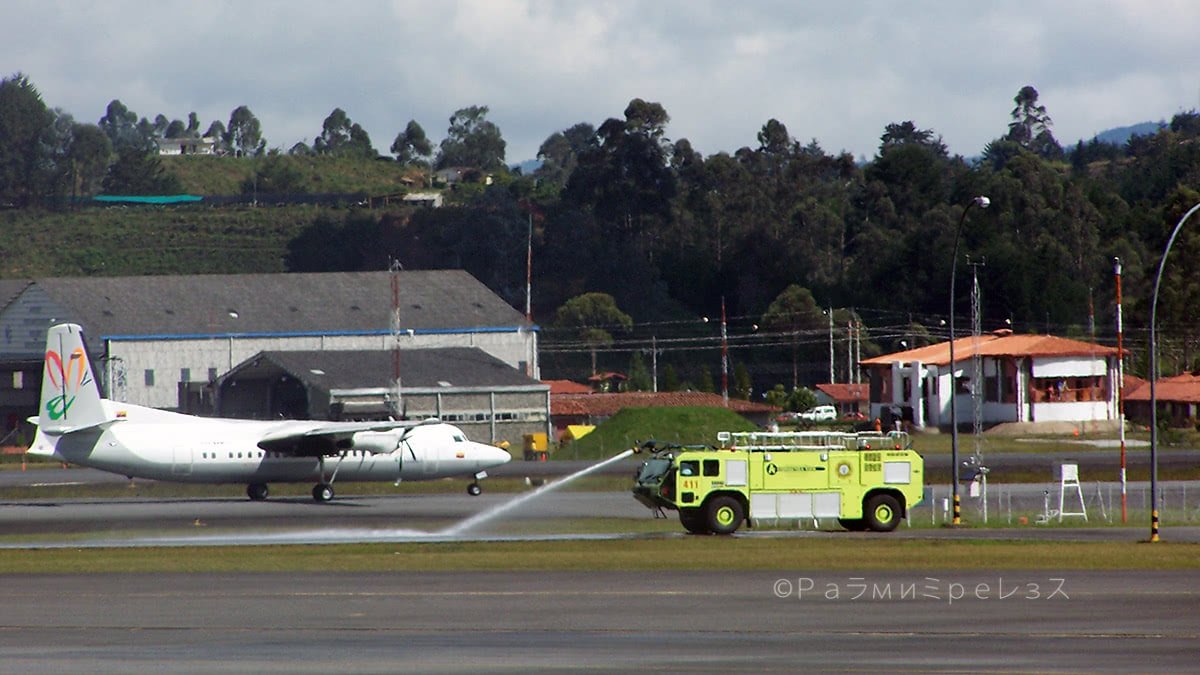
Likewise, there was movement in the regional platform. People started to take their positions. All they needed to receive the Airbus A380 was put in place.
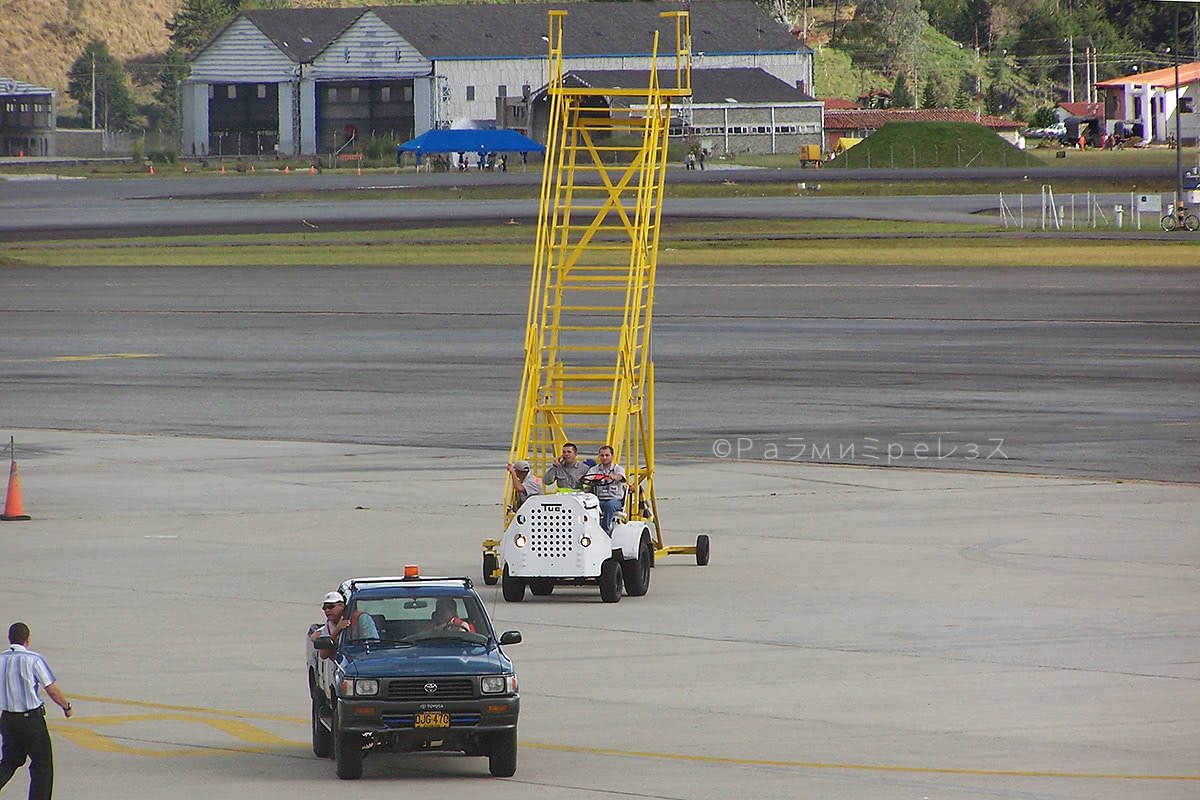
Ramírez.
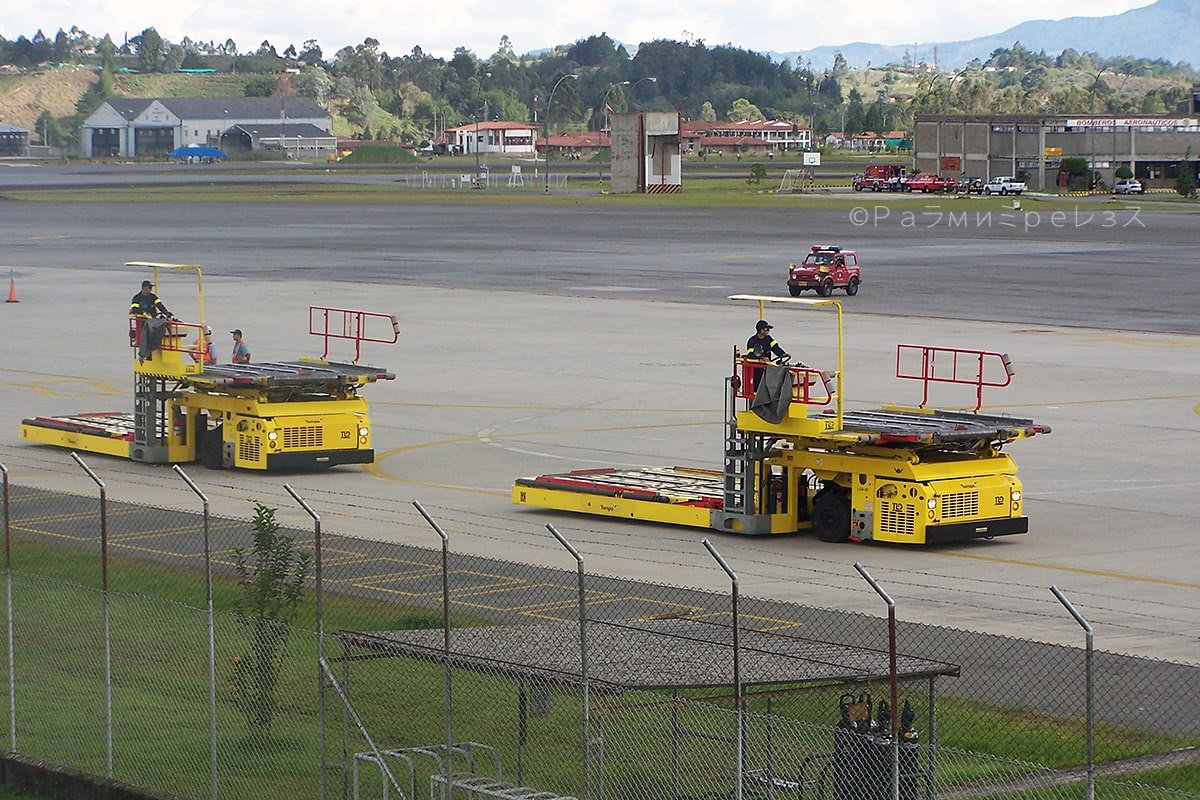
Ramírez.
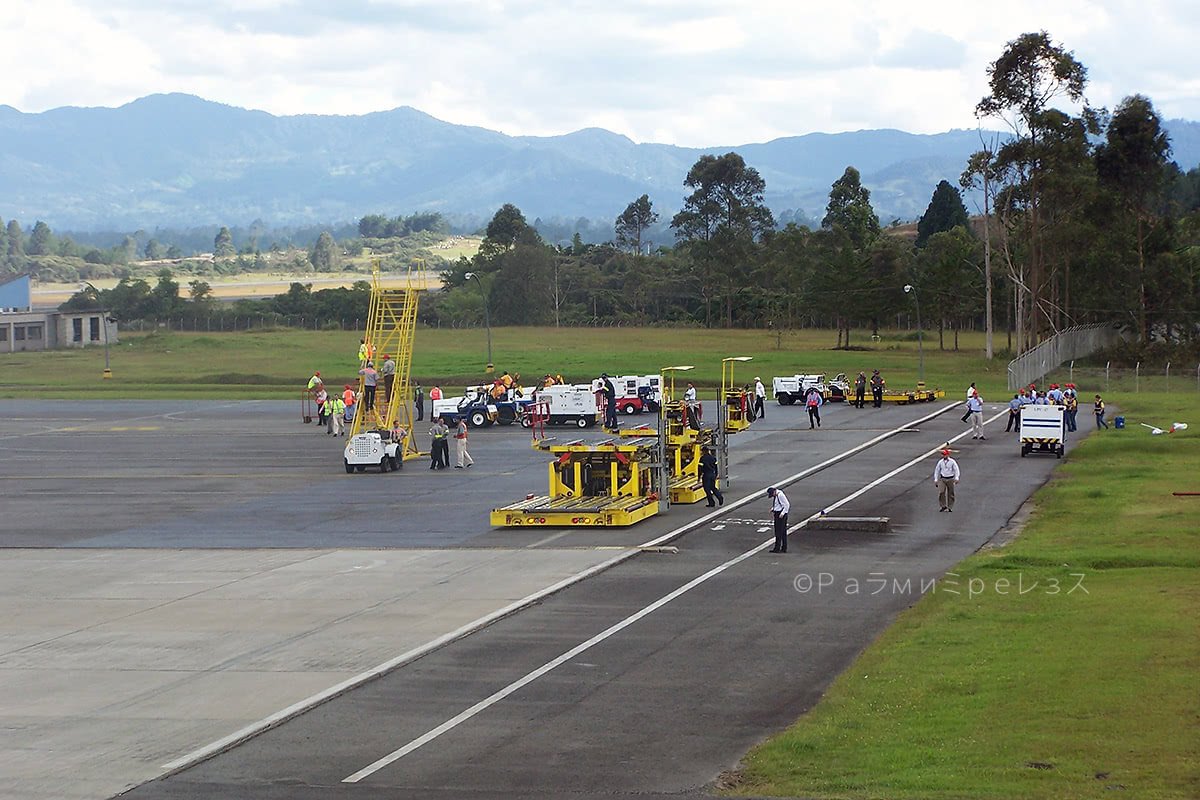
Ramírez.
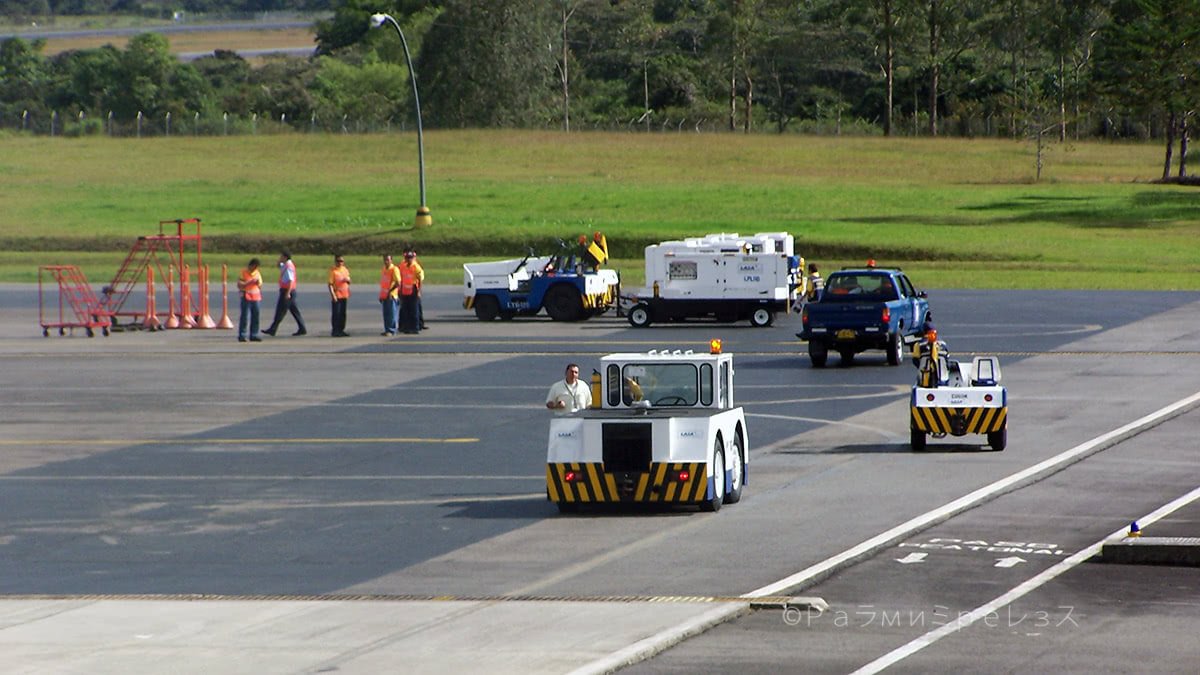
Ramírez.
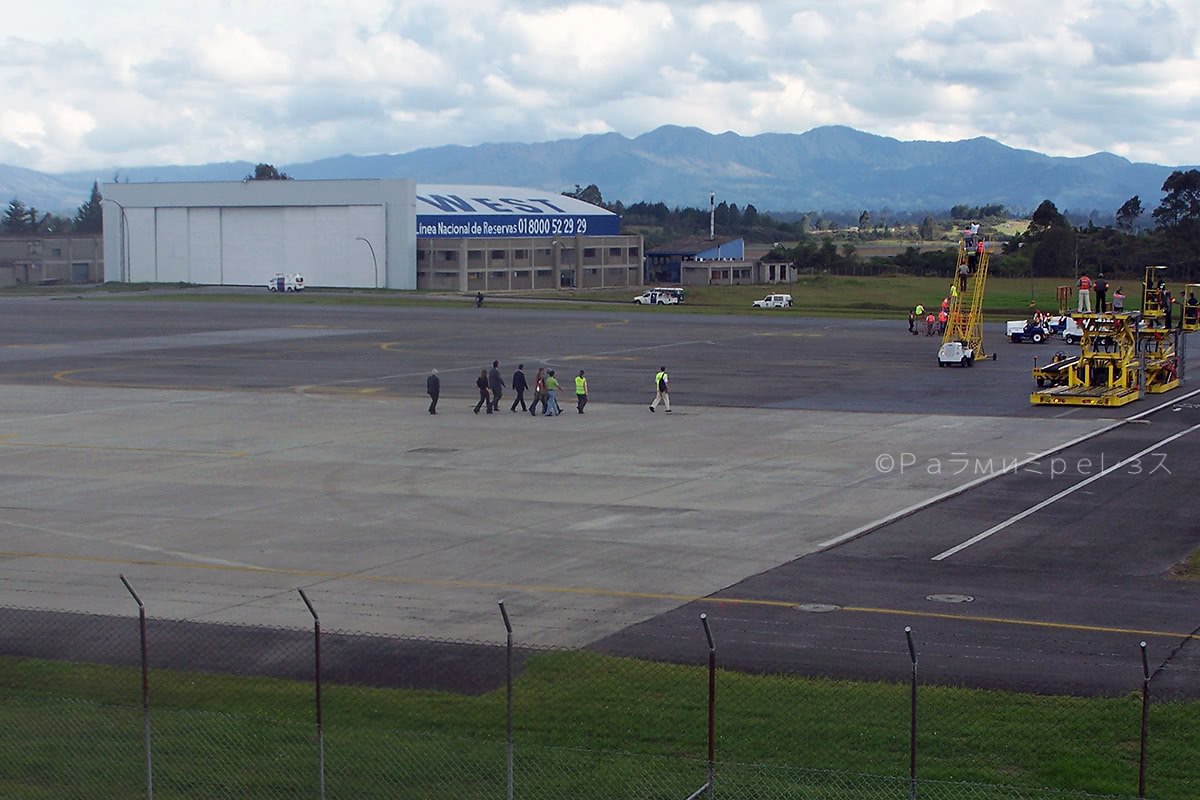
Ramírez.
It was coming! In the control tower they were expecting… and controlling.

The Airbus A380 arrived at 15:29 local time, direct and non-stop from Toulouse. I had been taking photos all the day, and just loitering around.
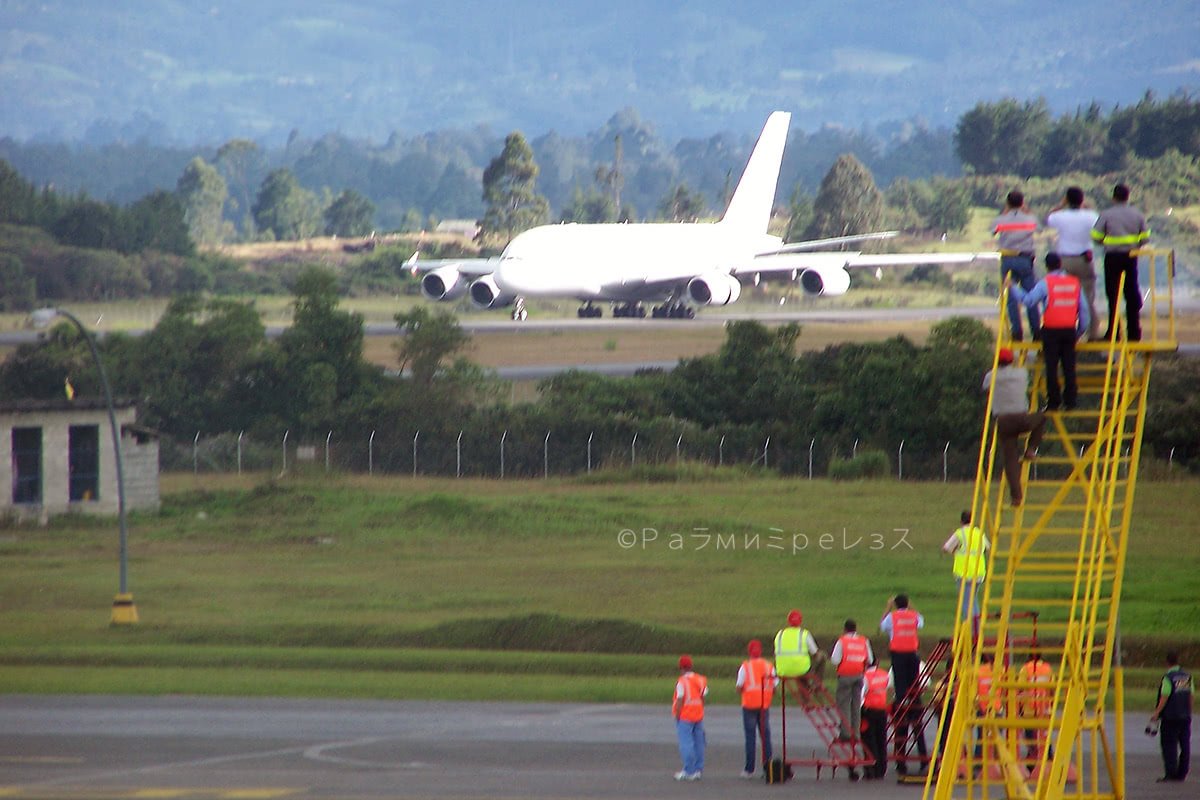
The chosen one was the number 4 prototype, registered as F-WWDD. It had been the second to fly of the whole program.
Below, you can see the Aeroplane arriving from another point in the Airport. A video from my friend Eduardo.
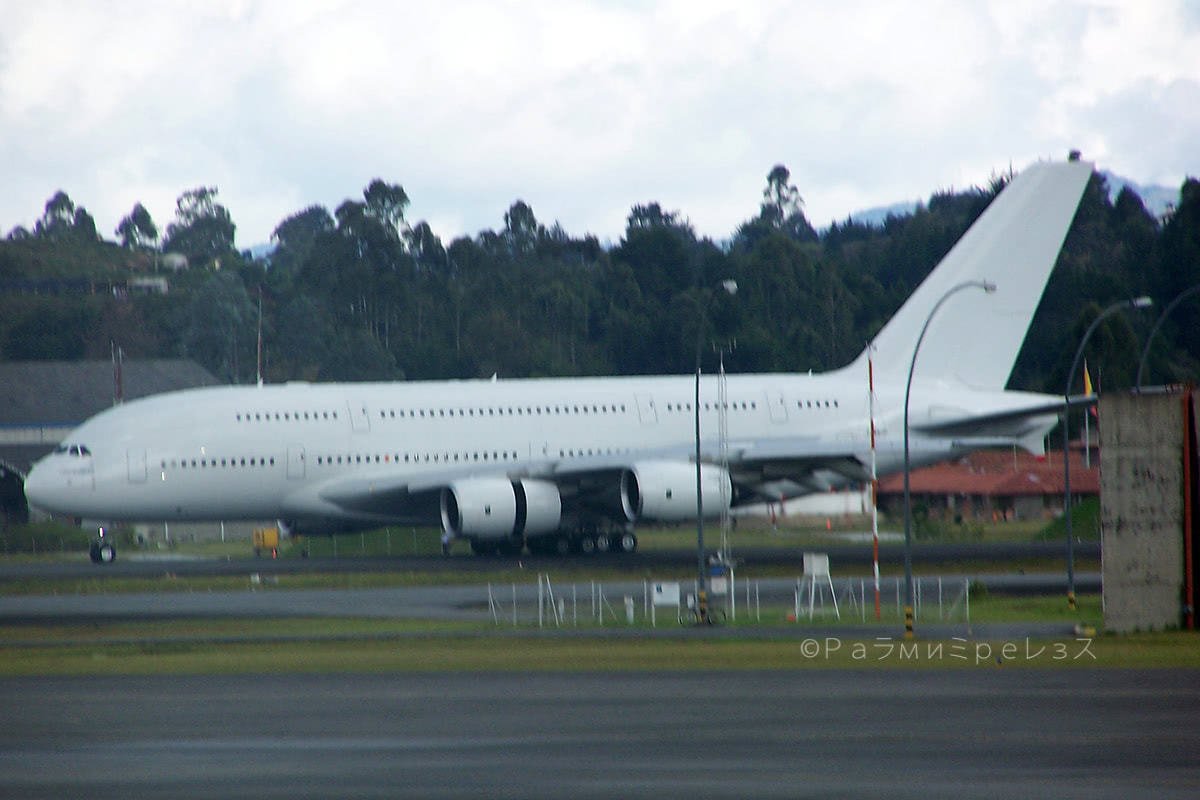
Ramírez.
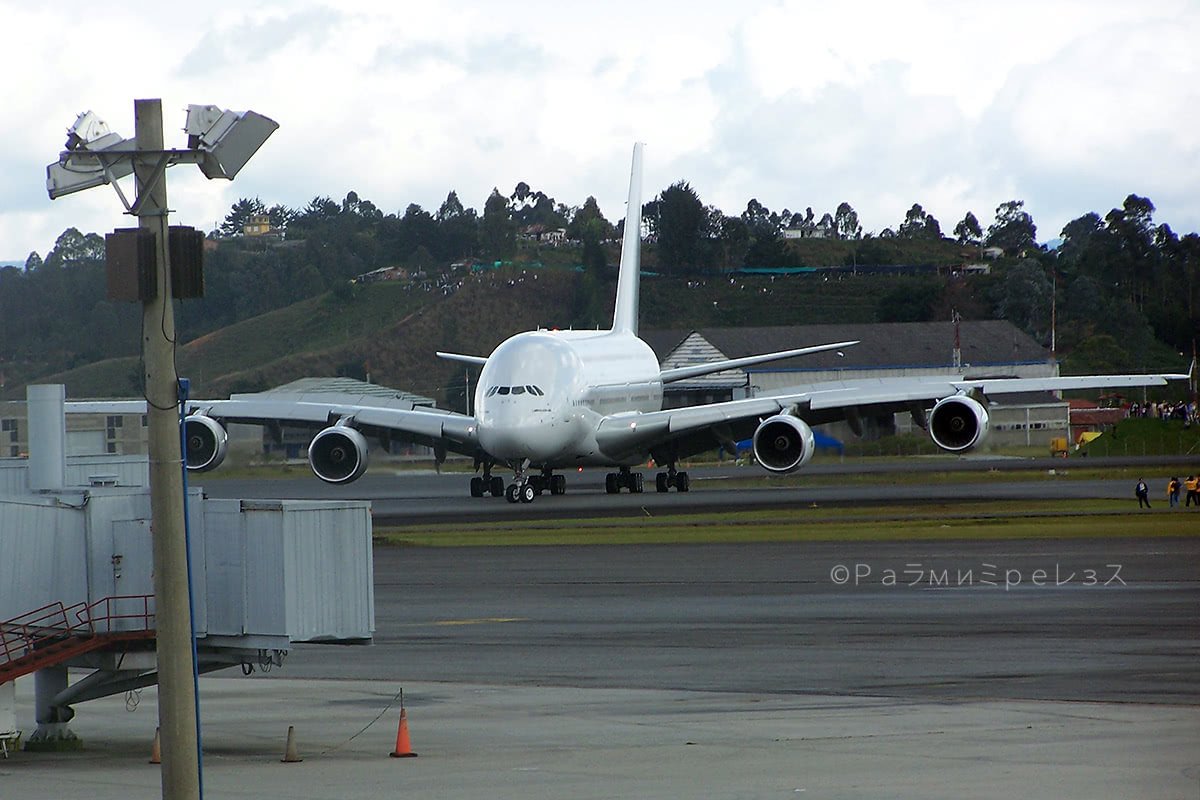
As I write this, almost 12 years after it came to Colombia to be tested, F-WWDD is preserved in a museum in Le Bourget, France.
In the video below, you can see it landing there before delivery to the museum. On February 14th, 2017.
Years after Rionegro, I would find that very same Aeroplane. On a demonstration in Farnborough, United Kingdom.
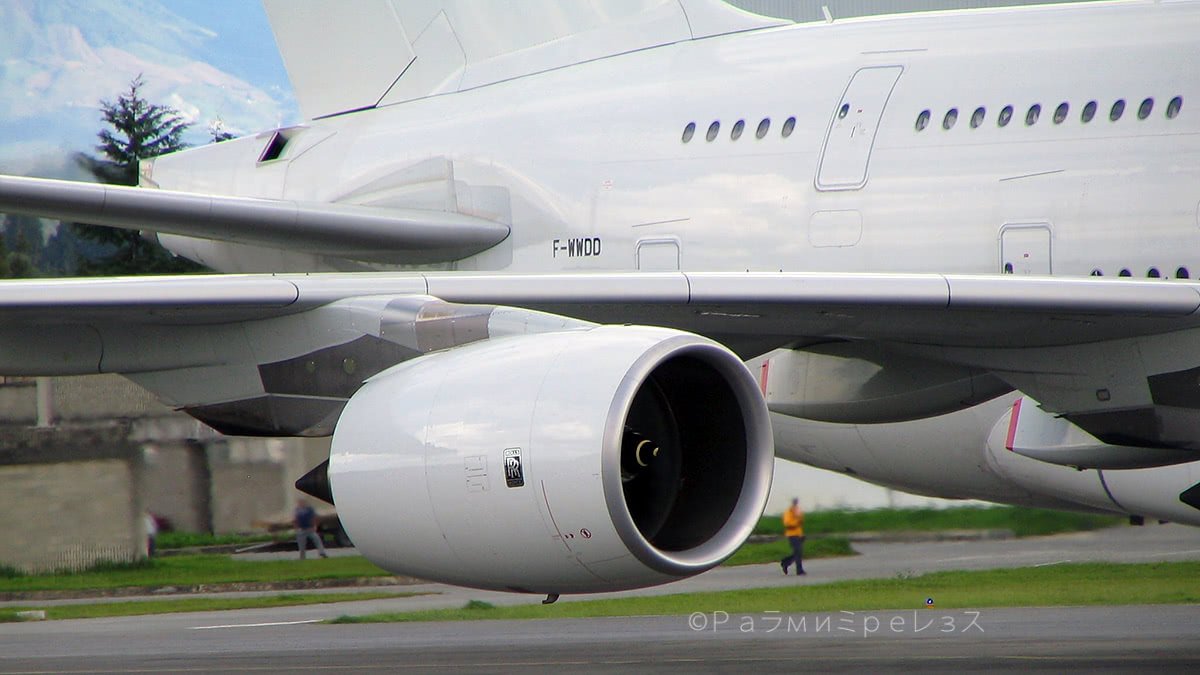
Ramírez.
I was very tired but it didn’t matter much, it was happening!
As soon as the Aeroplane landed, I managed to take about 5 photos and… THE FUCKING CAMERA RAN OUT OF BATTERY!
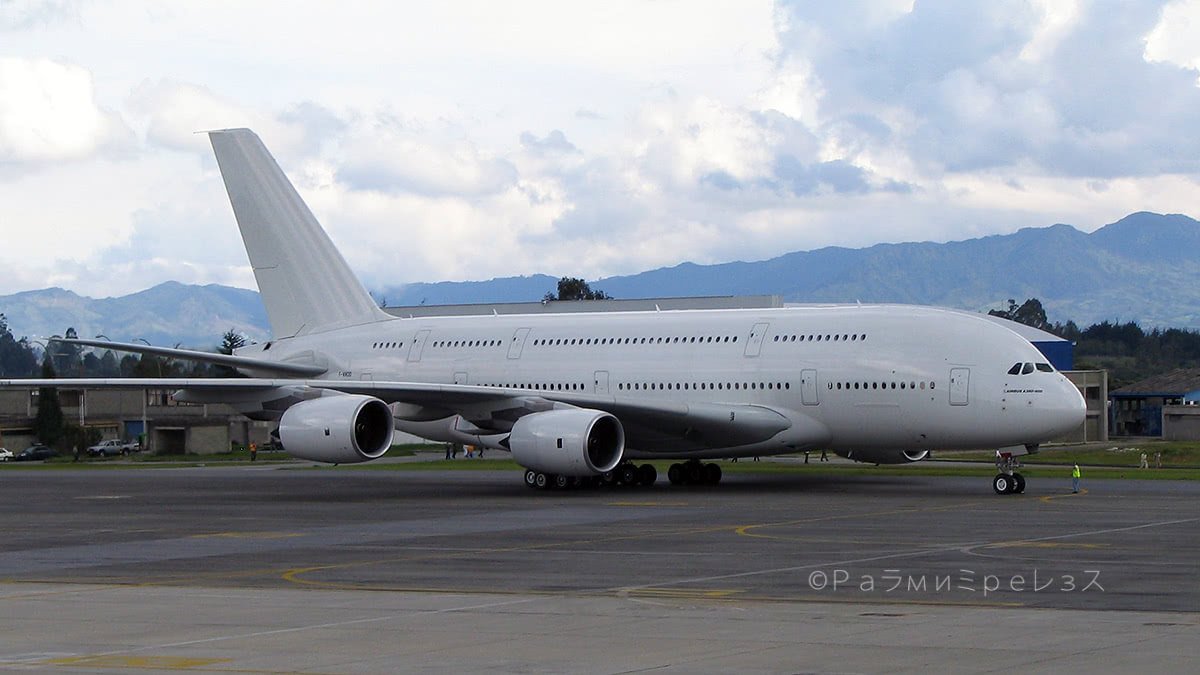
Ramírez.
I didn’t have spare batteries, nor a way to acquire some there, nor anyone to lend me some. And history was happening right in my face!
The good thing is that it didn’t run out of battery before it did. I managed to save those 5 photos of the moment. But nothing else that day.
It was truly impressive to see that Aeroplane then, right in Rionegro. Since I didn’t have a functioning camera anymore, I just watched everything while talking with my friends.
I already had photos for posterity anyway, however few as they were. The moment was history in the making, and we were its witnesses.
The day was over, but the Aeroplane was going to remain until January 14th in tests.
The Airport became a marketplace during that period, the crowd was always huge, and the traffic jam to get out was bad. Of course, I returned like the aeronautical quidnunc I am.
On January 11th, I went back again with several friends. Even people not related to Aviation.
We saw the Aeroplane and its operations that day, like in the photo below.
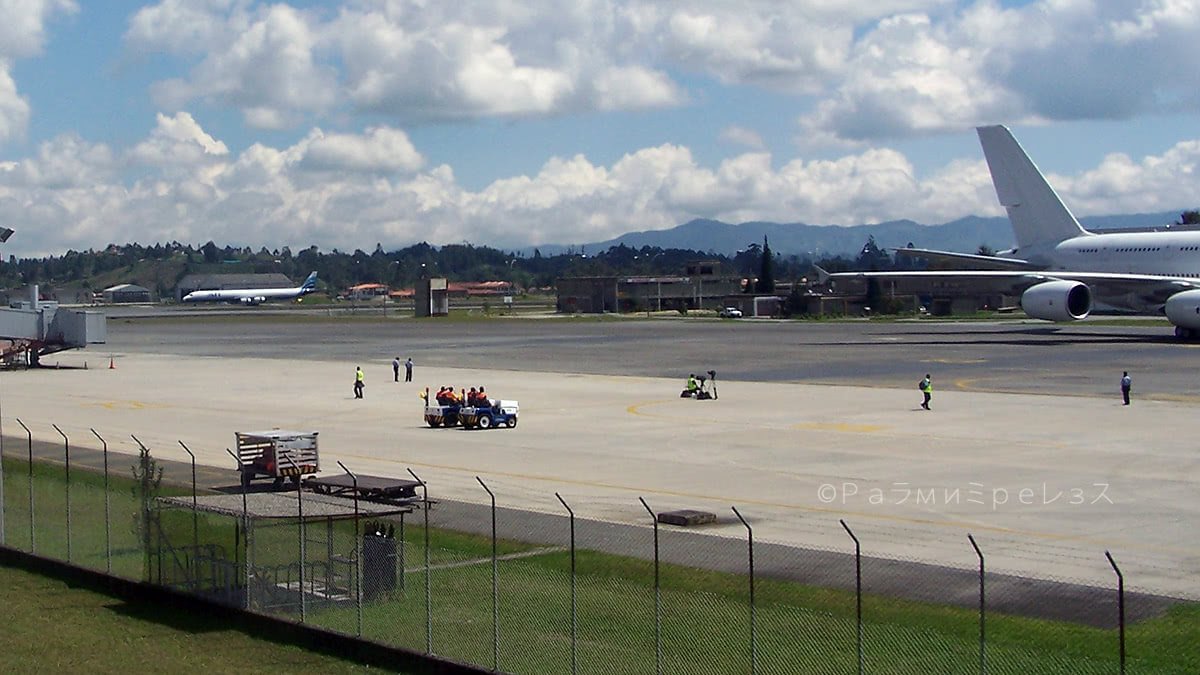
I don’t think a Douglas DC-8 and an Airbus A380 will be together in Rionegro ever again.
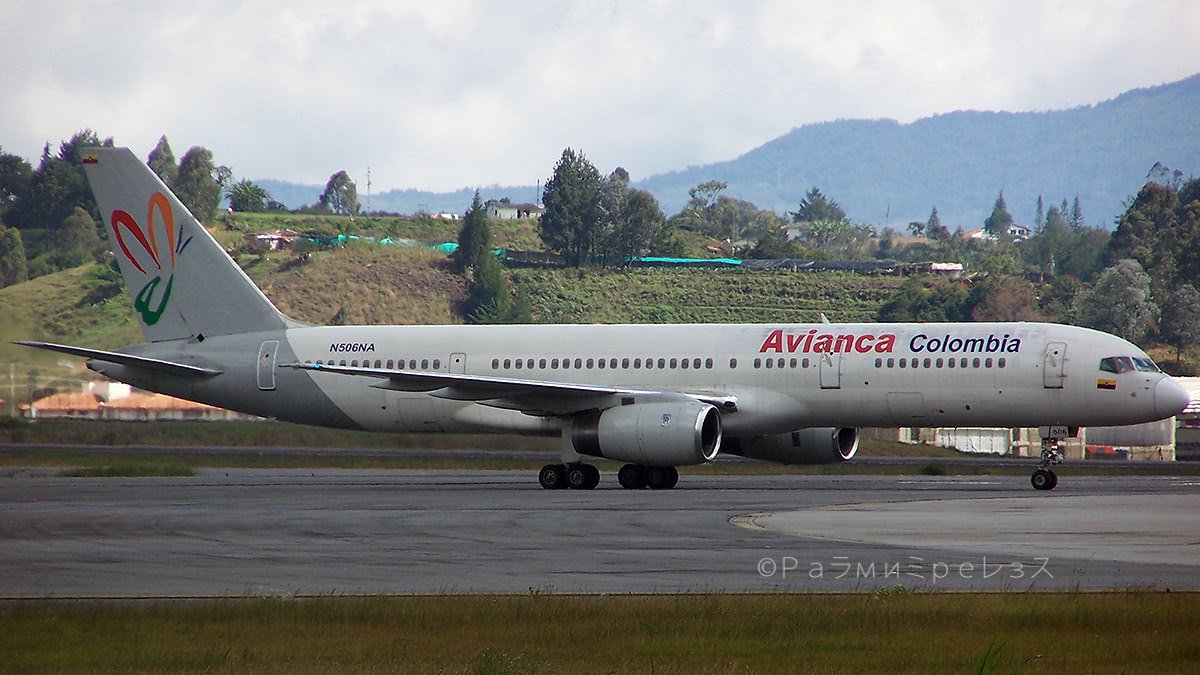
Normal operations January 11th, 2006.
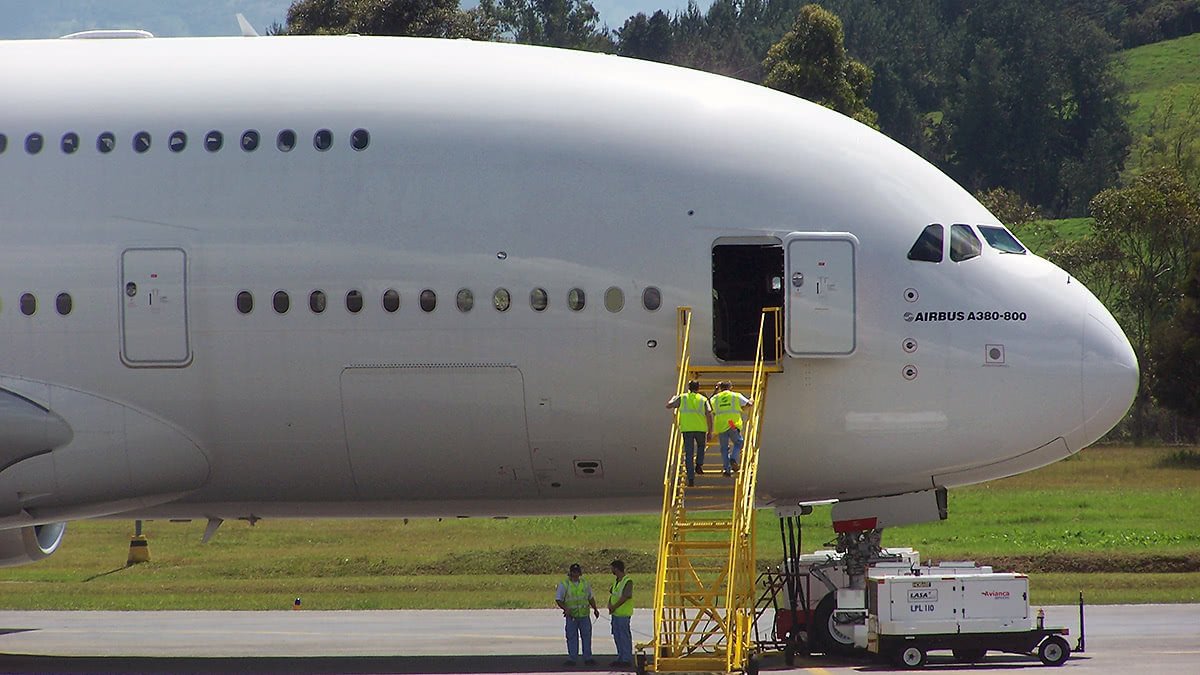
Getting ready for the day’s tests.
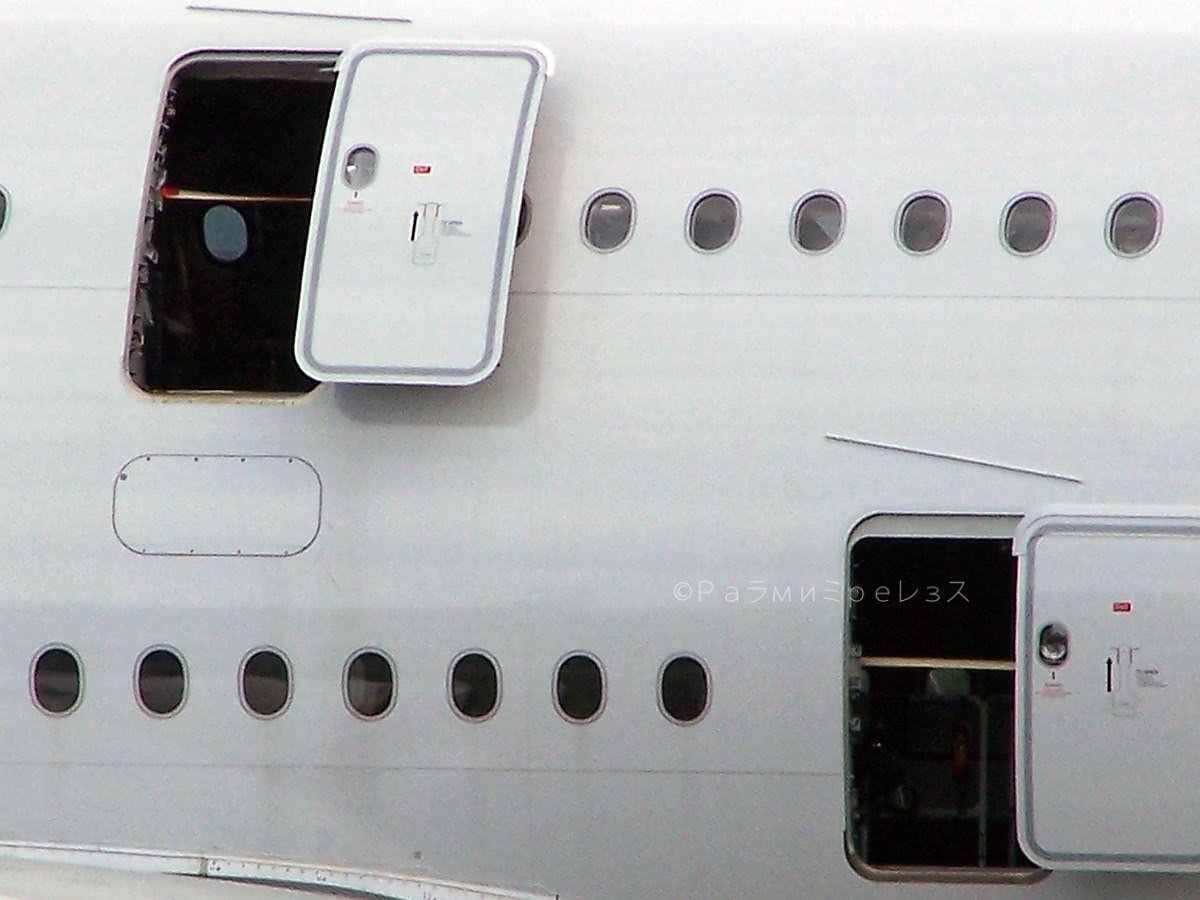
Two levels!
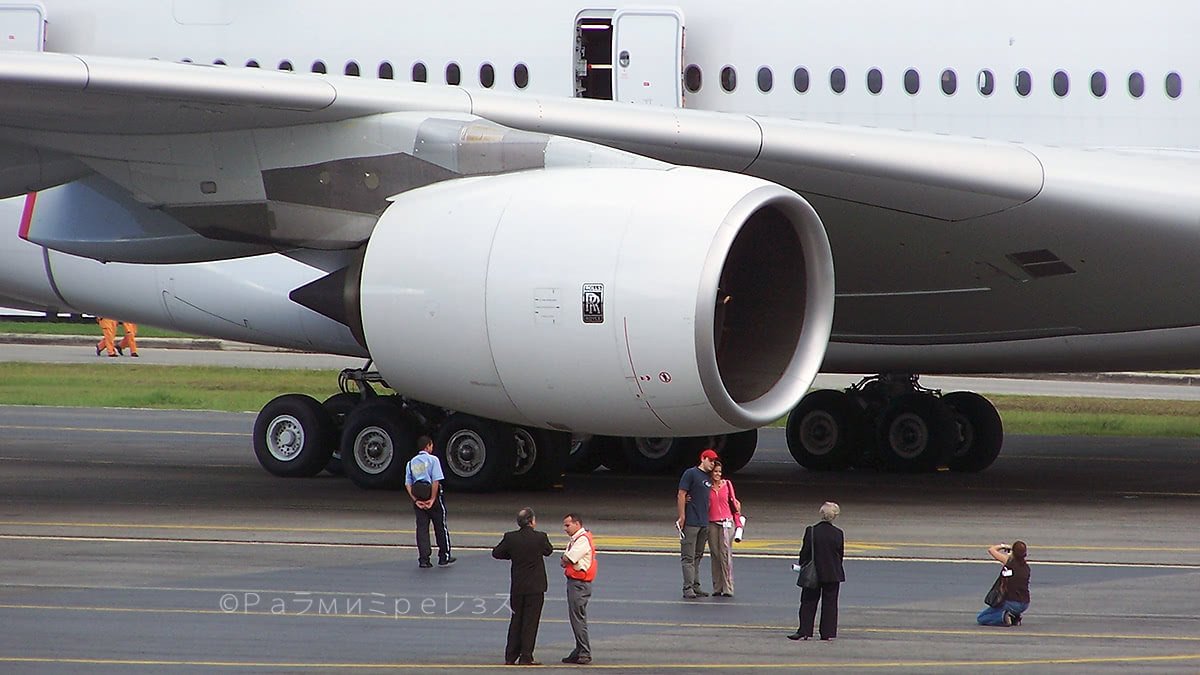
I WASN’T envious of the people who had ramp access and could take close photos with the Airplane in that moment. I WASN’T.
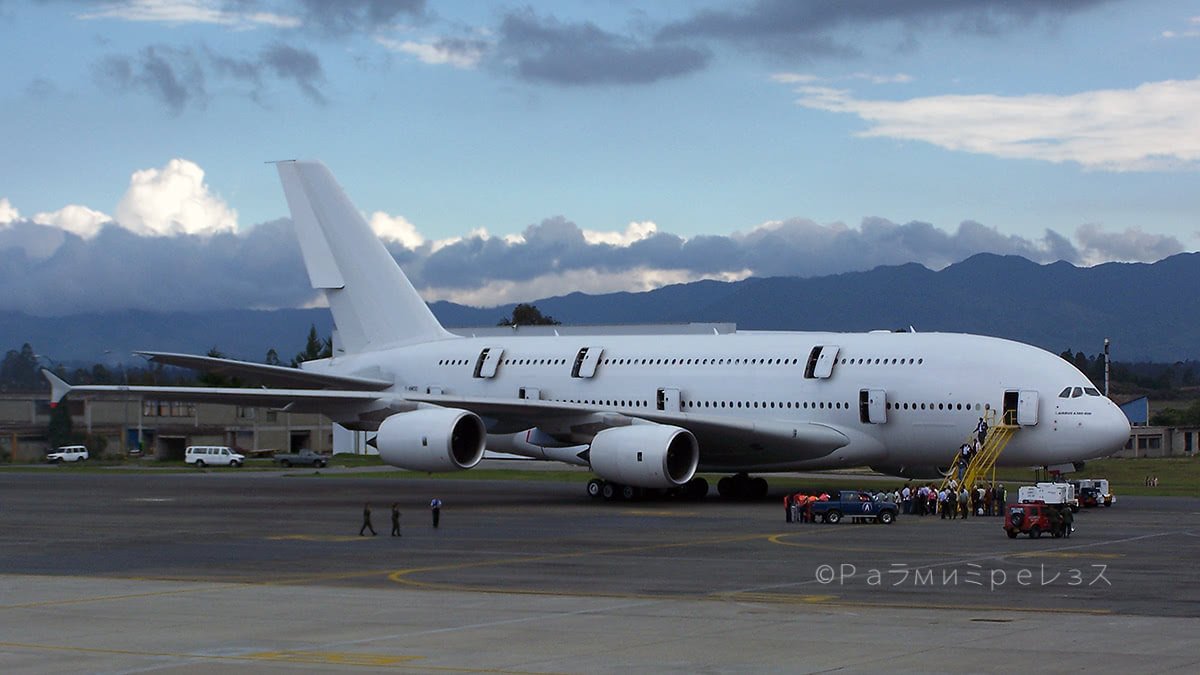
All the doors opened.
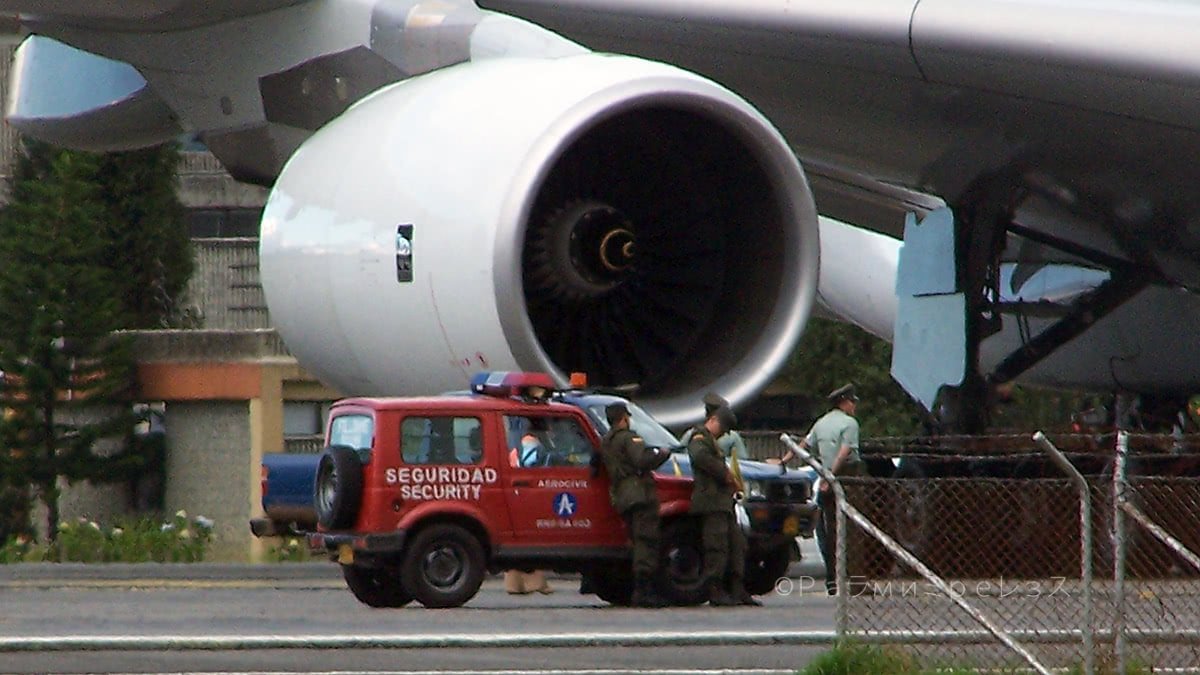
-“Good evening, I am from the government of Colombia and I’m here to help you”.
HAHAHA!

Fuel it…
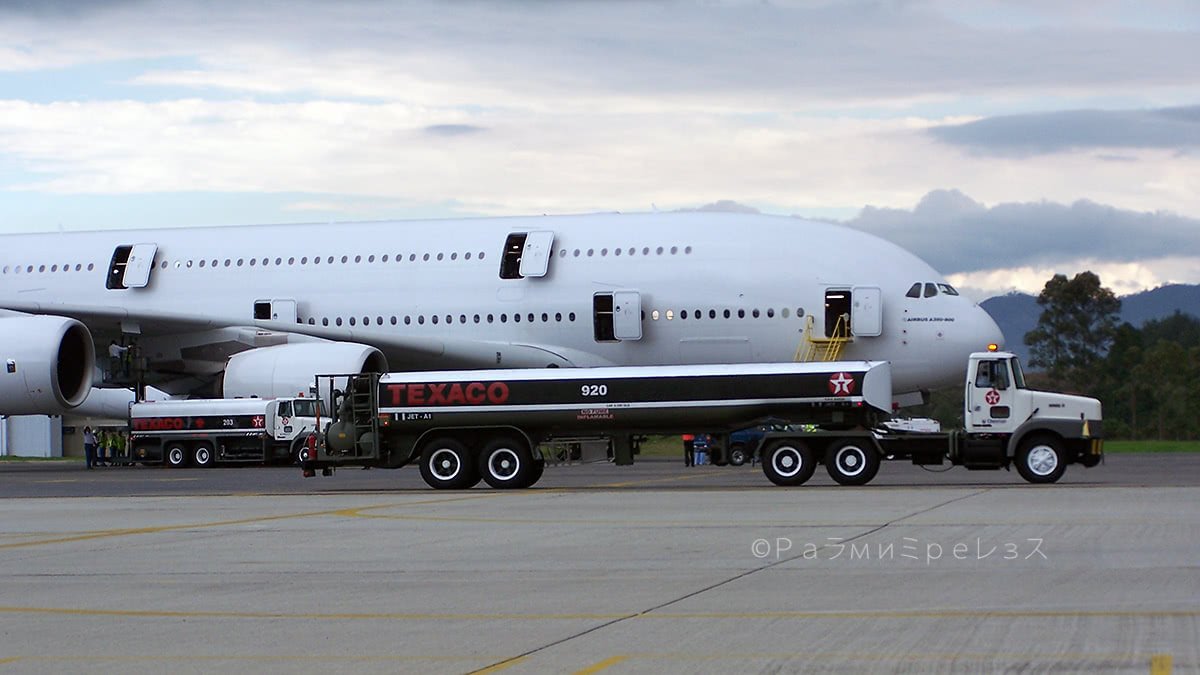
Give me fuel give me fire give me that which I desire!
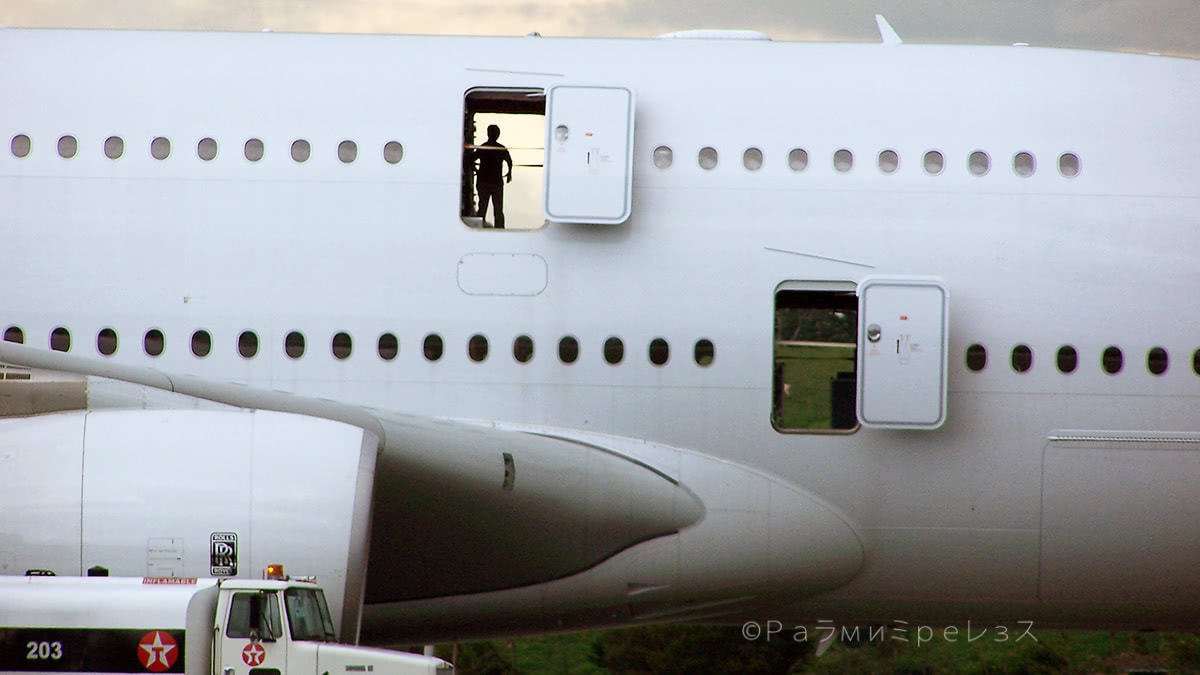
Who’s that man… that sees me and gets me naked…
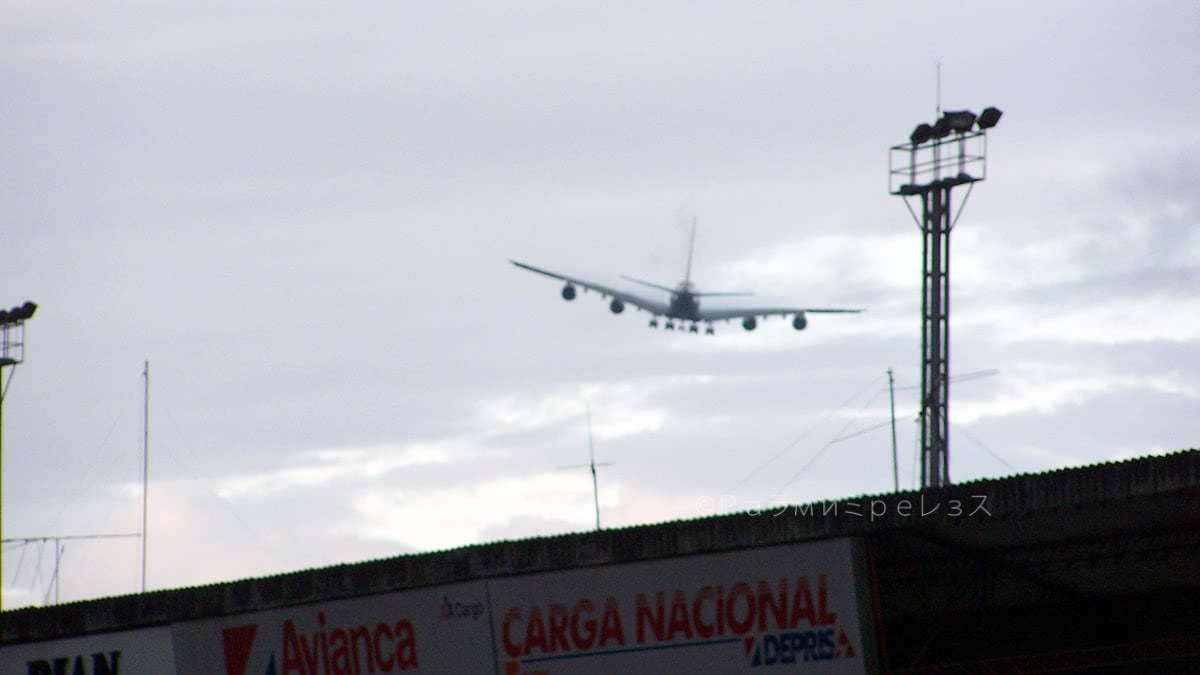
Let’s get to business.
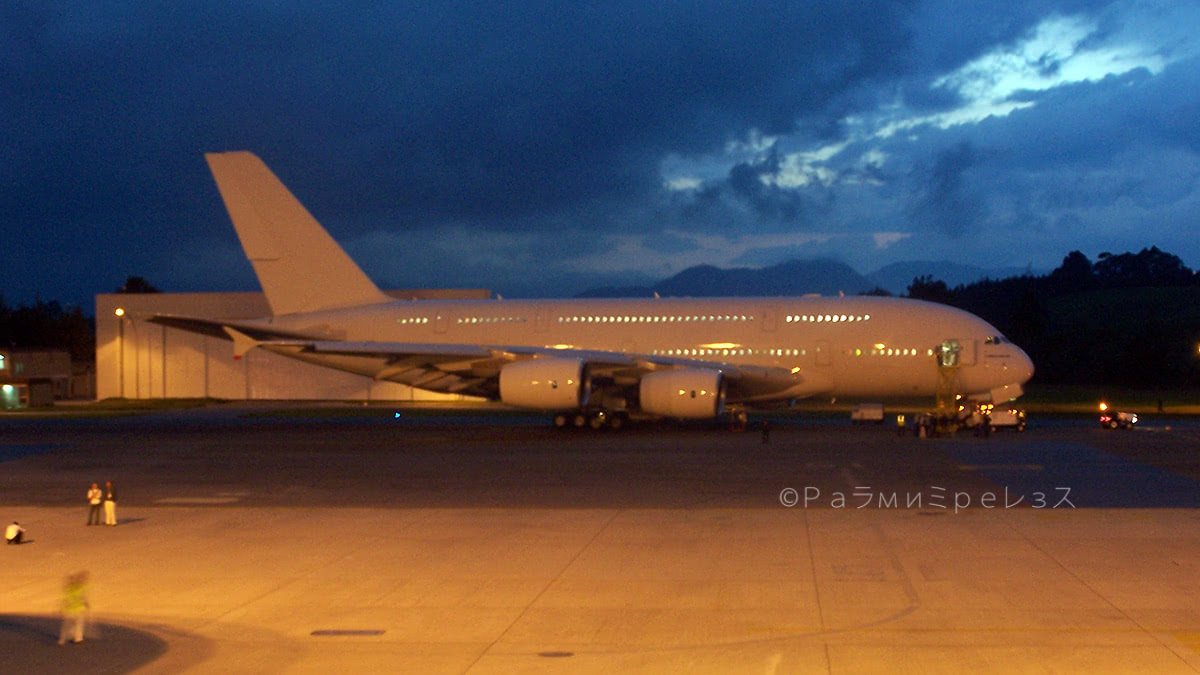
The night came, and with it my drunk aim. I had no idea of photography back then.
And well, on January 12th I also returned with my friends. So much so, that they took me by car and I didn’t have to deal with the Rionegro public bus that day.
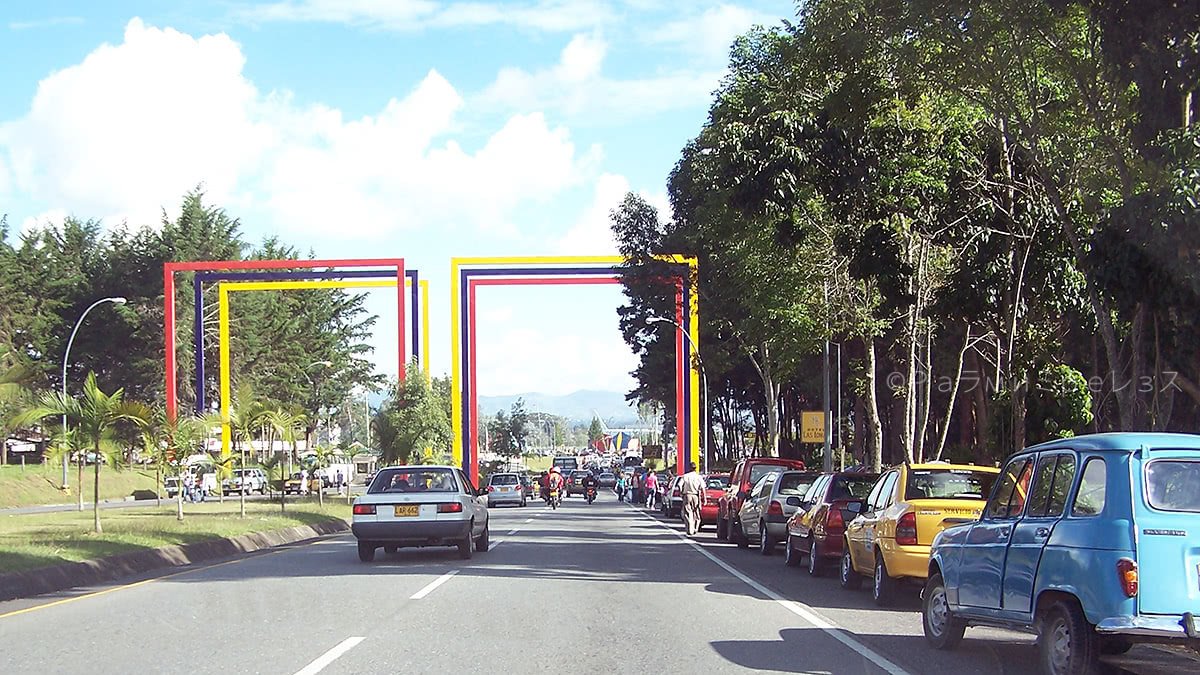
From the very entrance, not too late, the size of the crowd could be told.
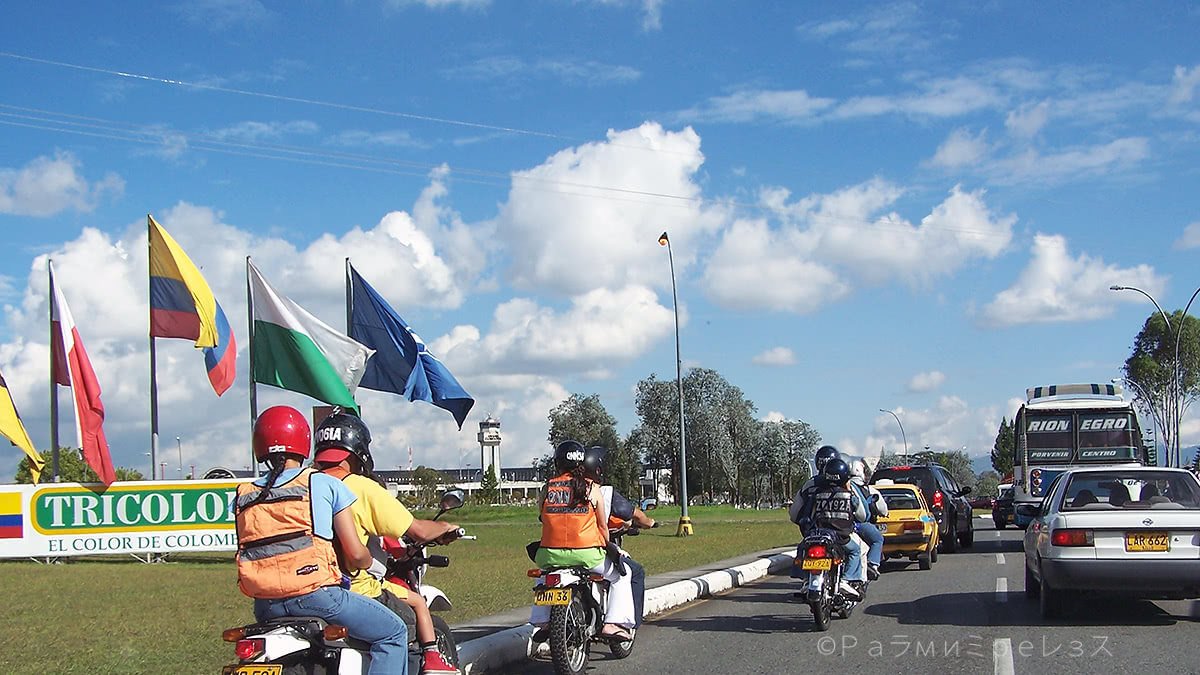
People arriving.
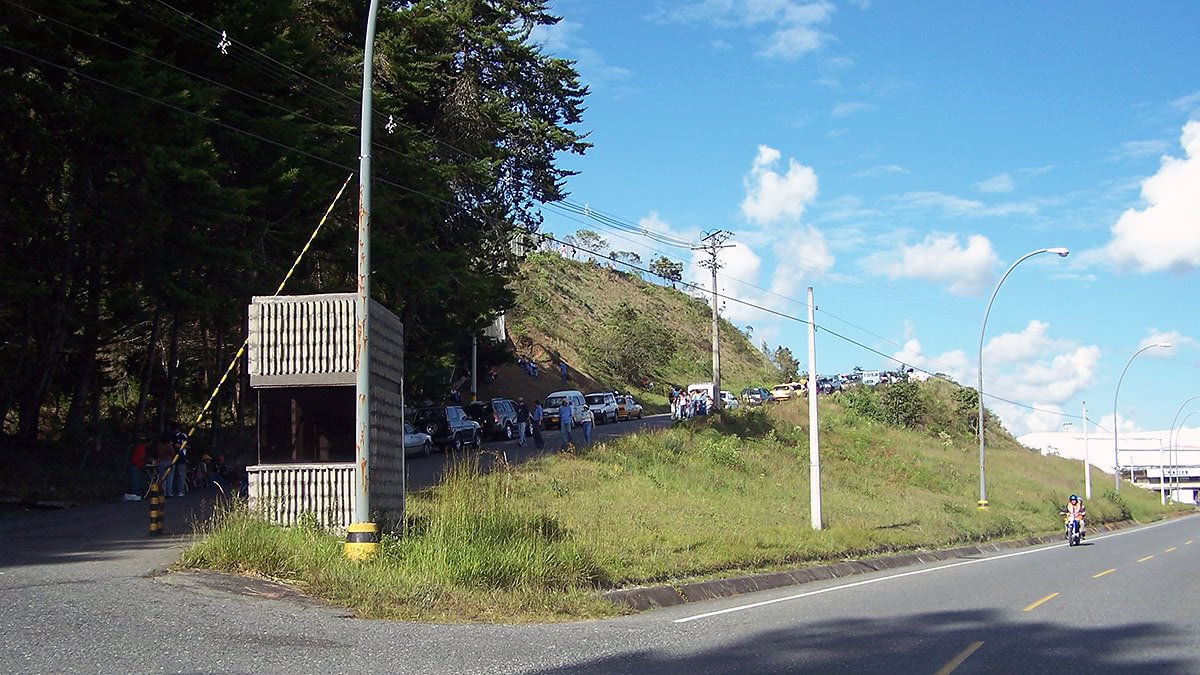
Getting fuller.
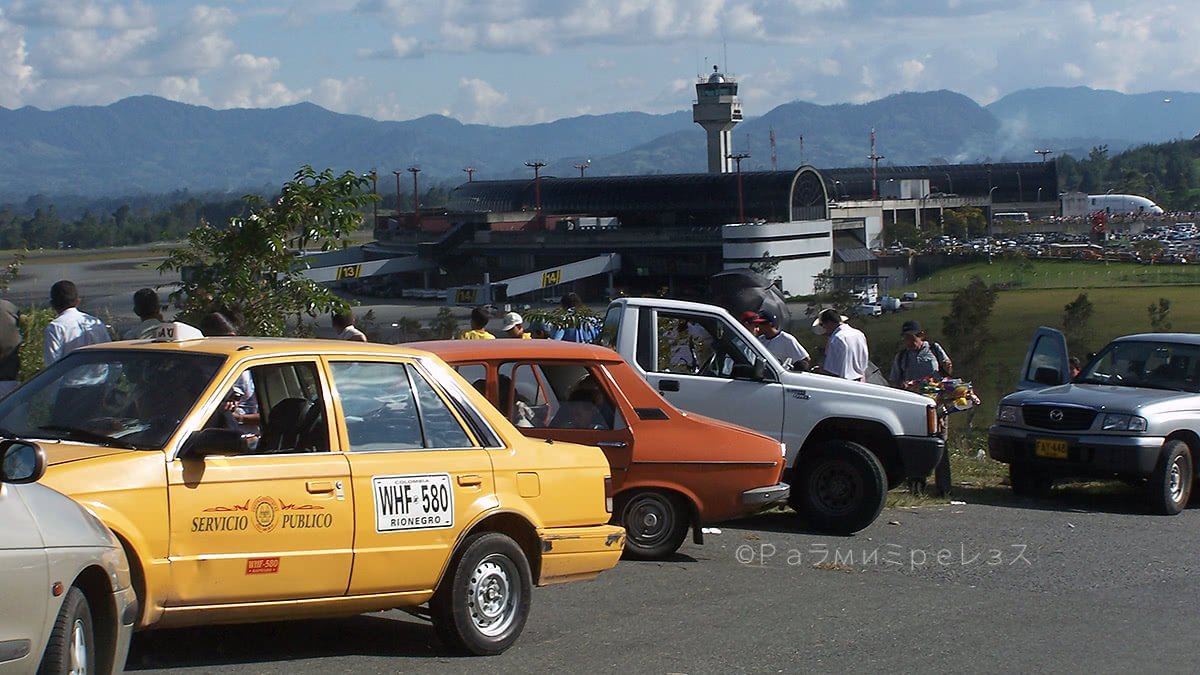
Little place to park…
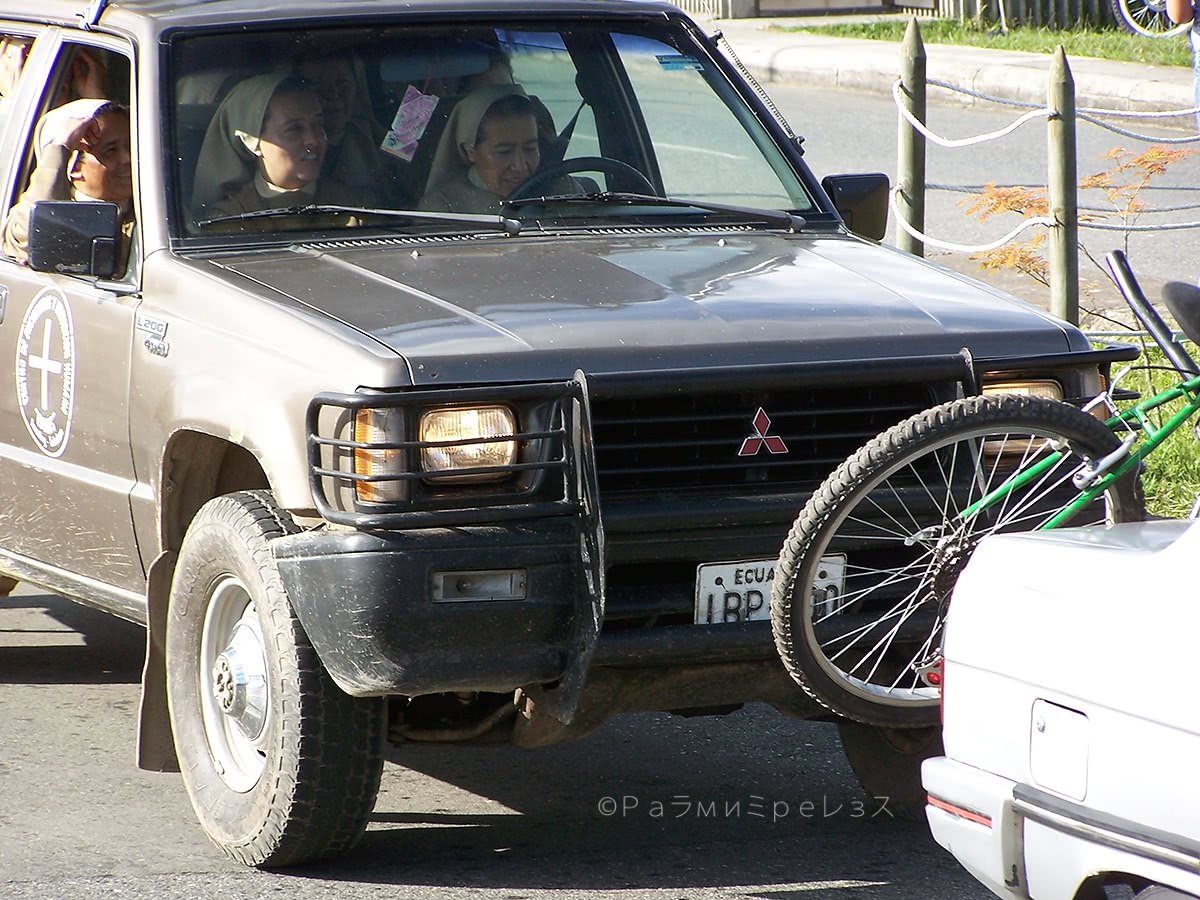
Even Ecuadorian nuns arrived (check the car’s plate).
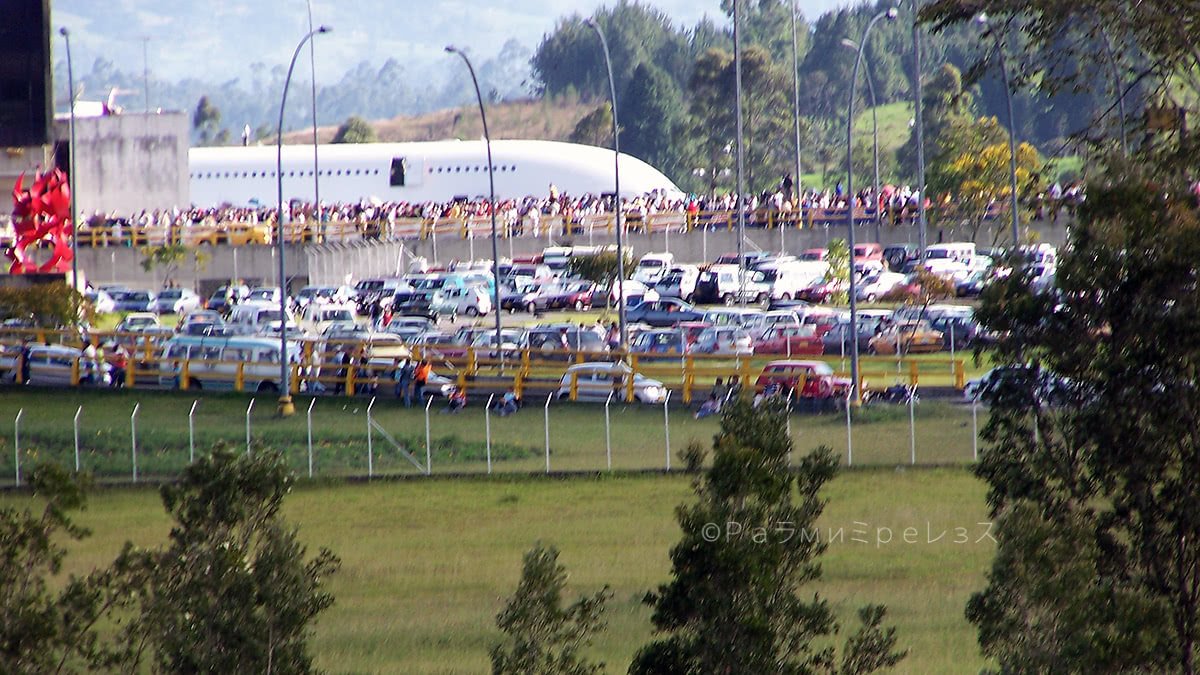
Now it’s really full…
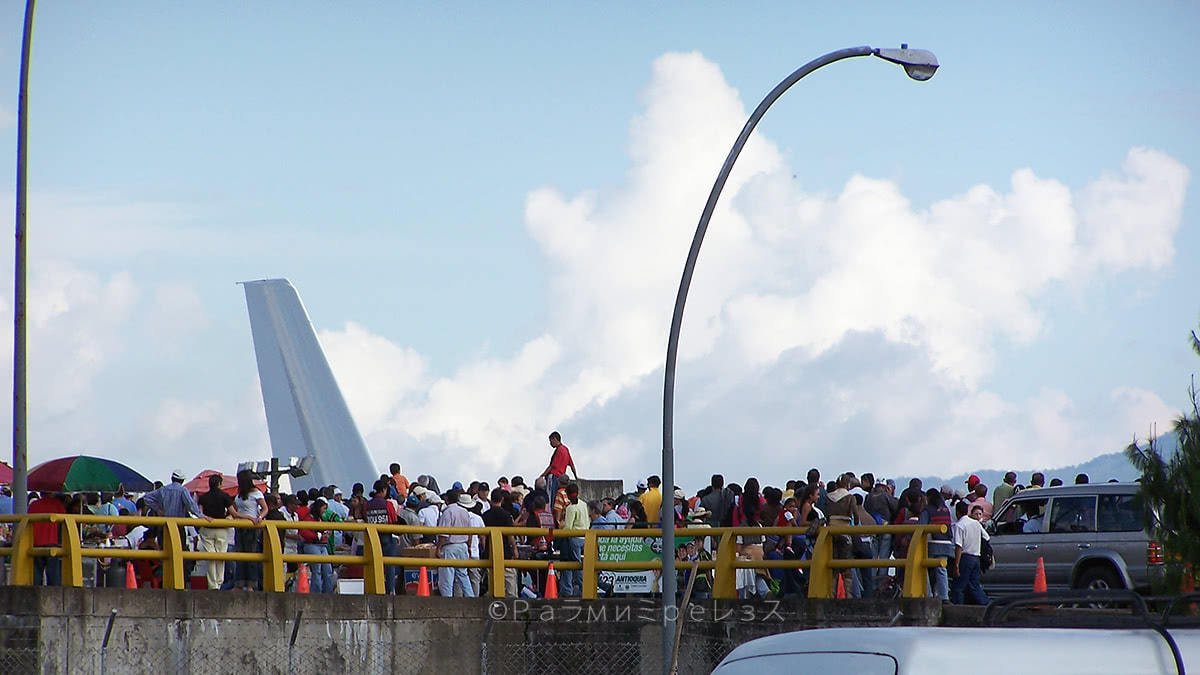
More.
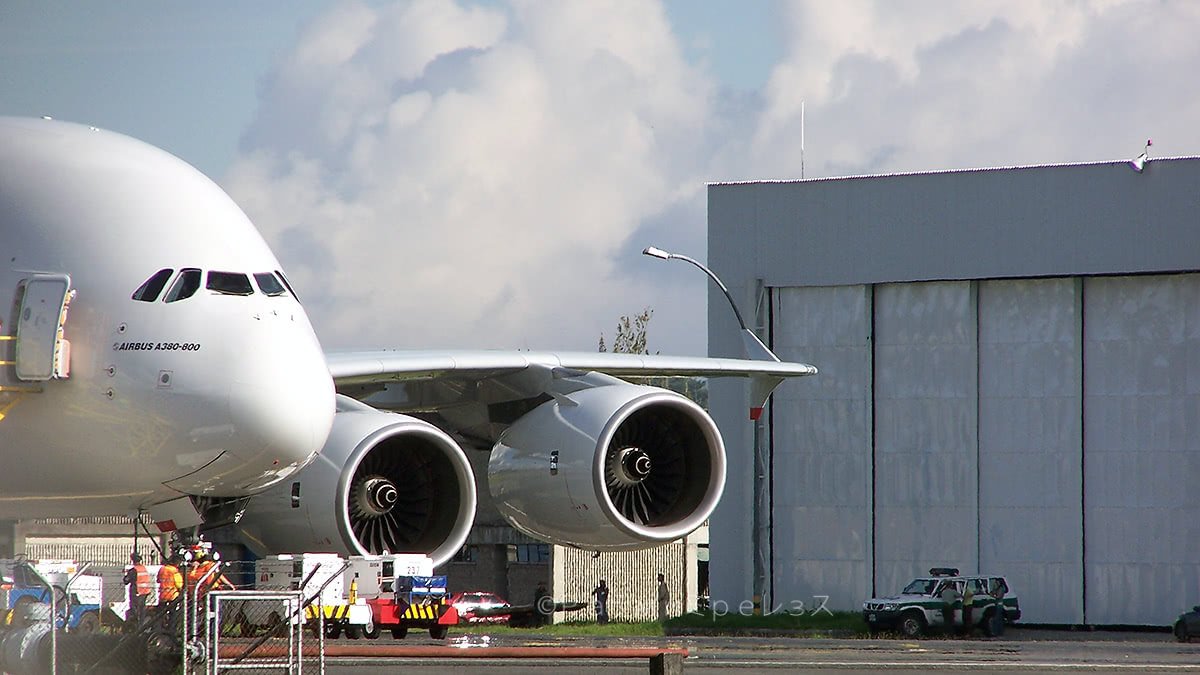
Beginning the day’s tests.
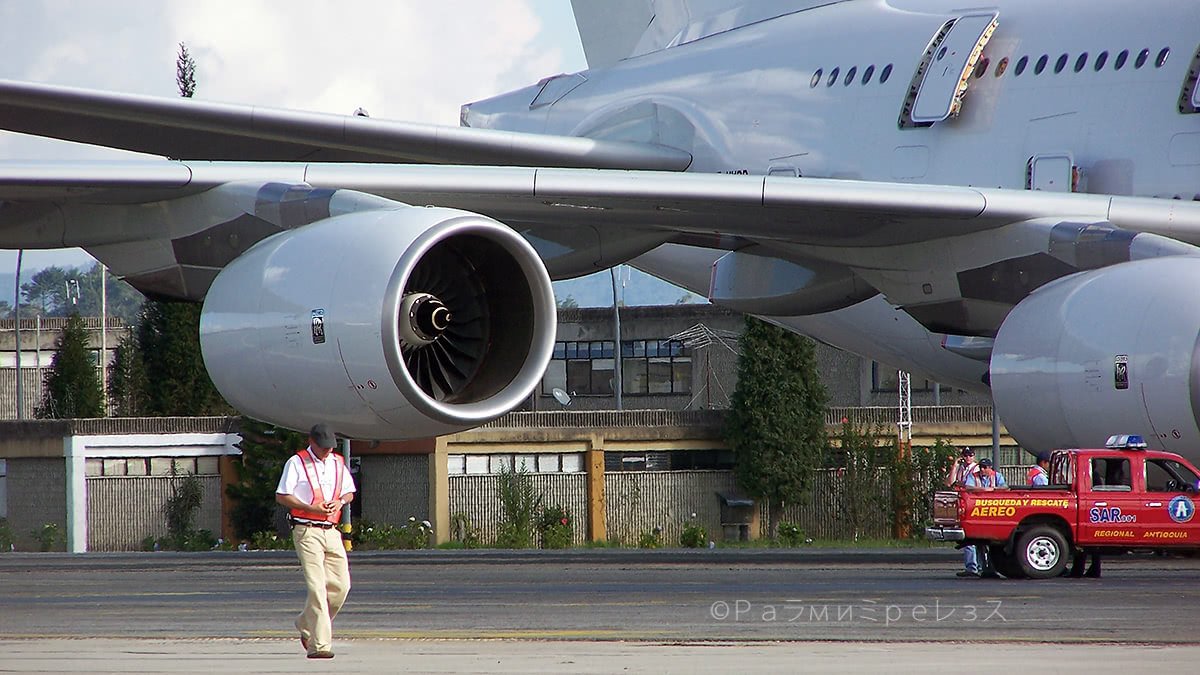
Almost ready…
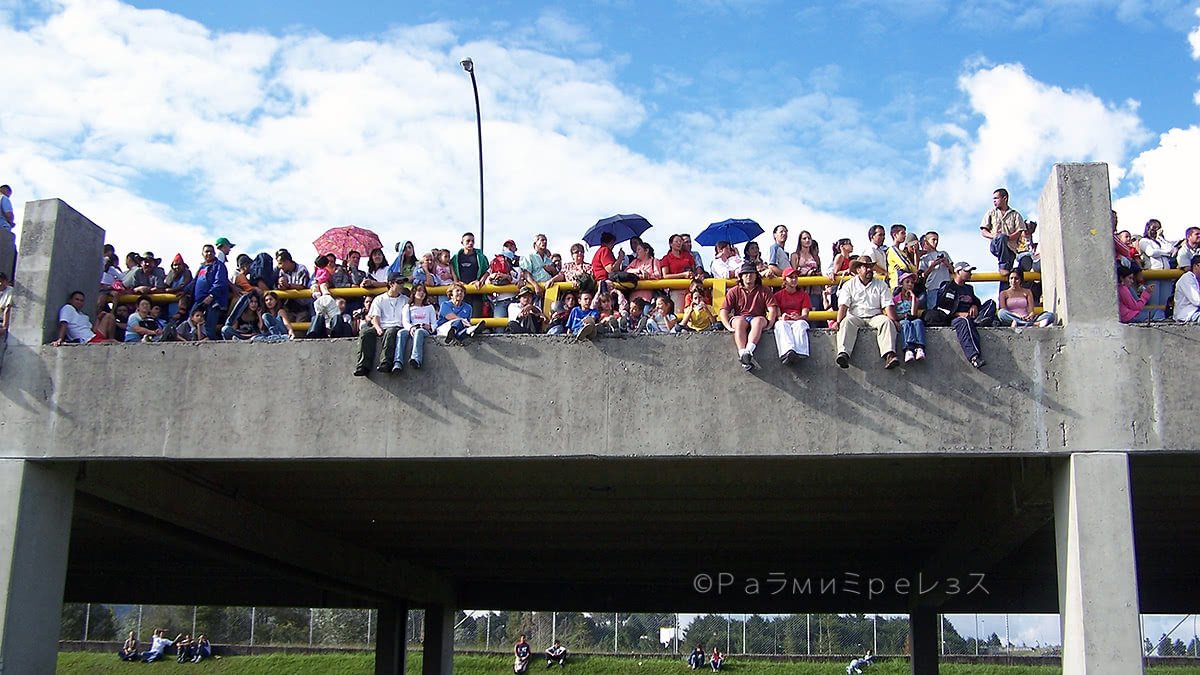
Everybody was waiting.
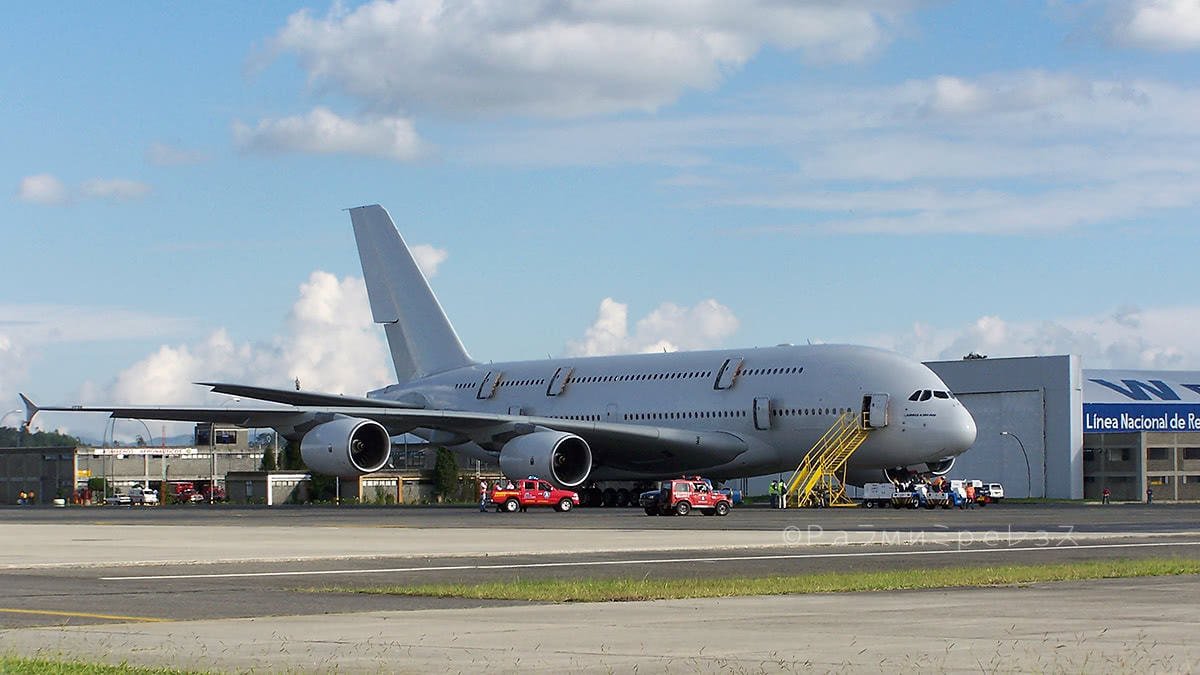
The giant.
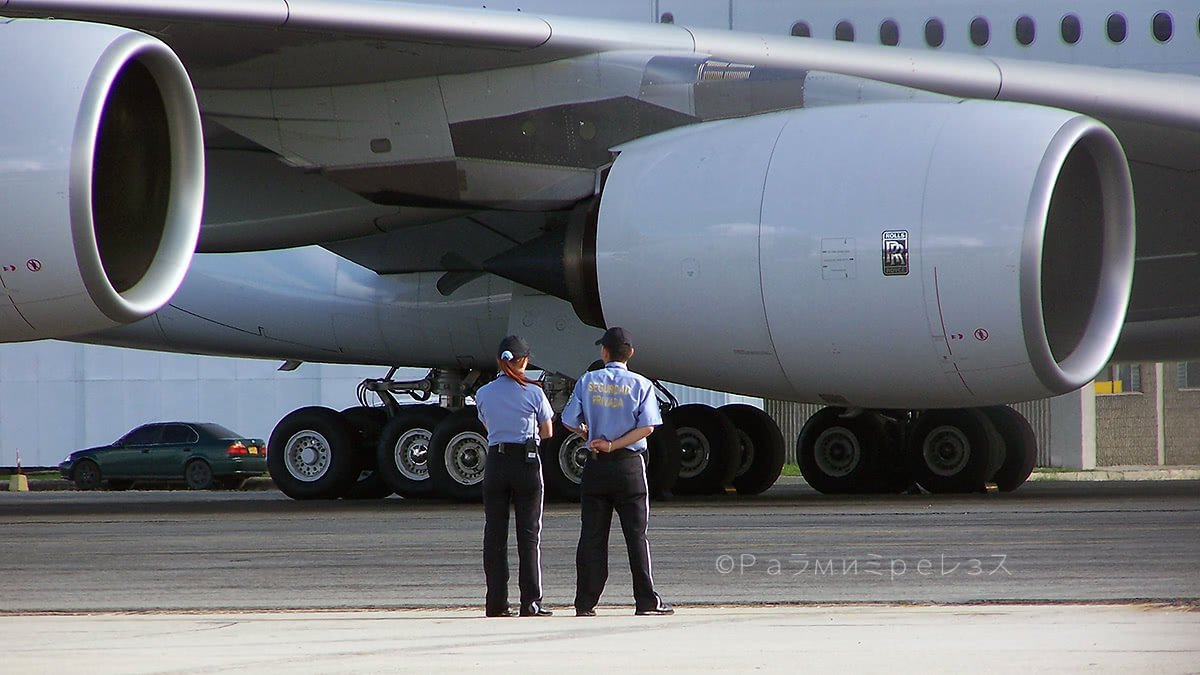
-“Listen to me Margaret, is that Aeroplane too big, or am I too short?”
-“Both!”.
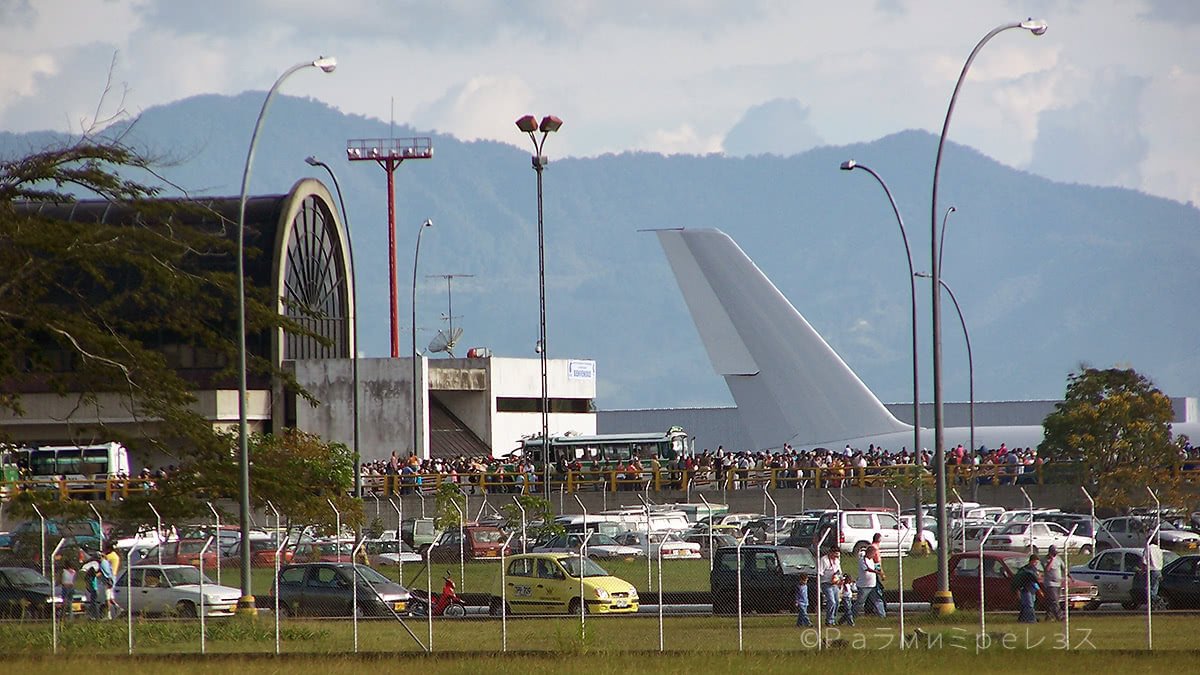
Little ants.
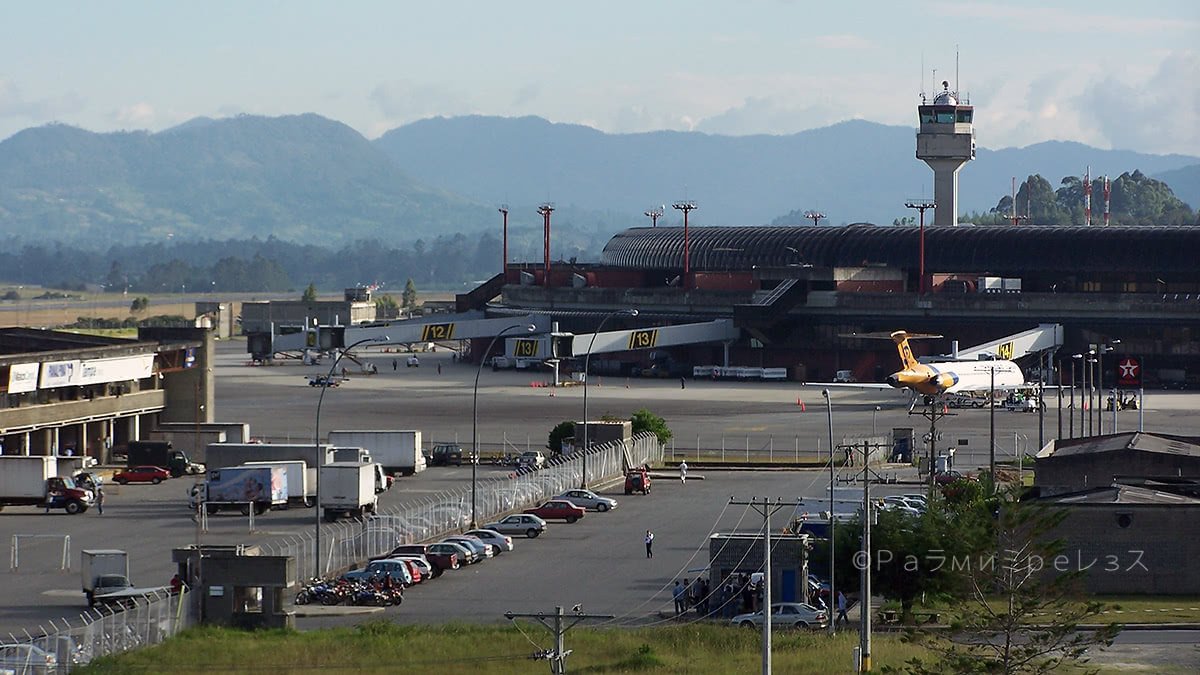
Normal operations continue…
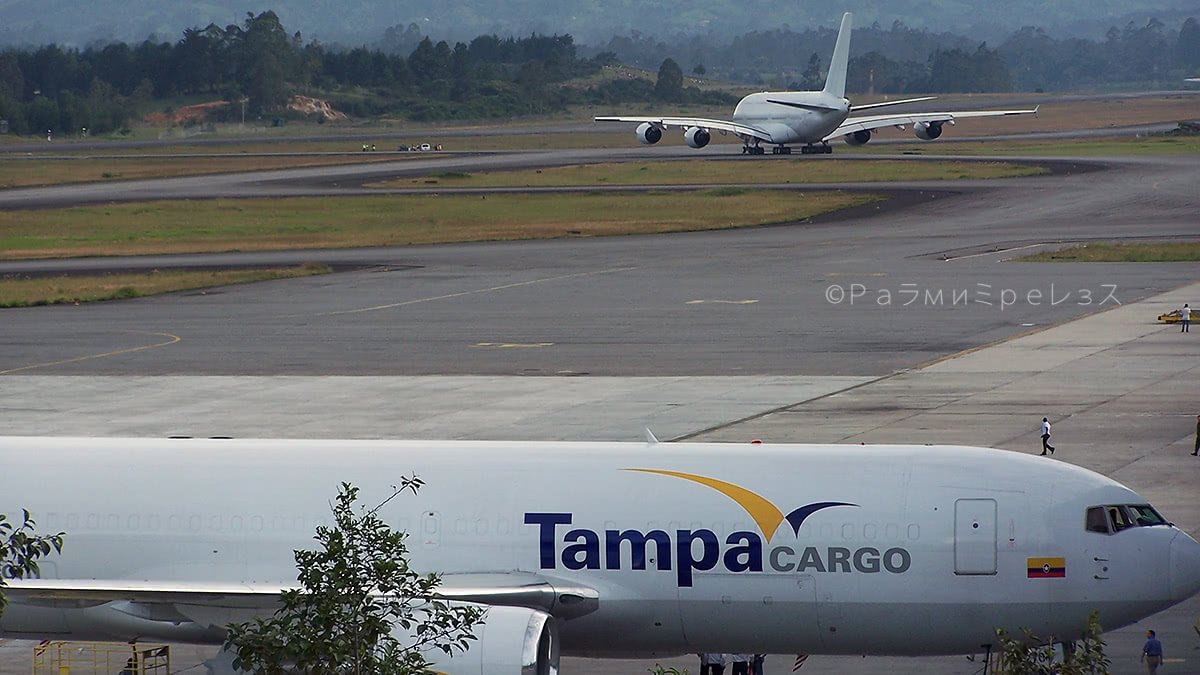
Alright, let’s get to business!
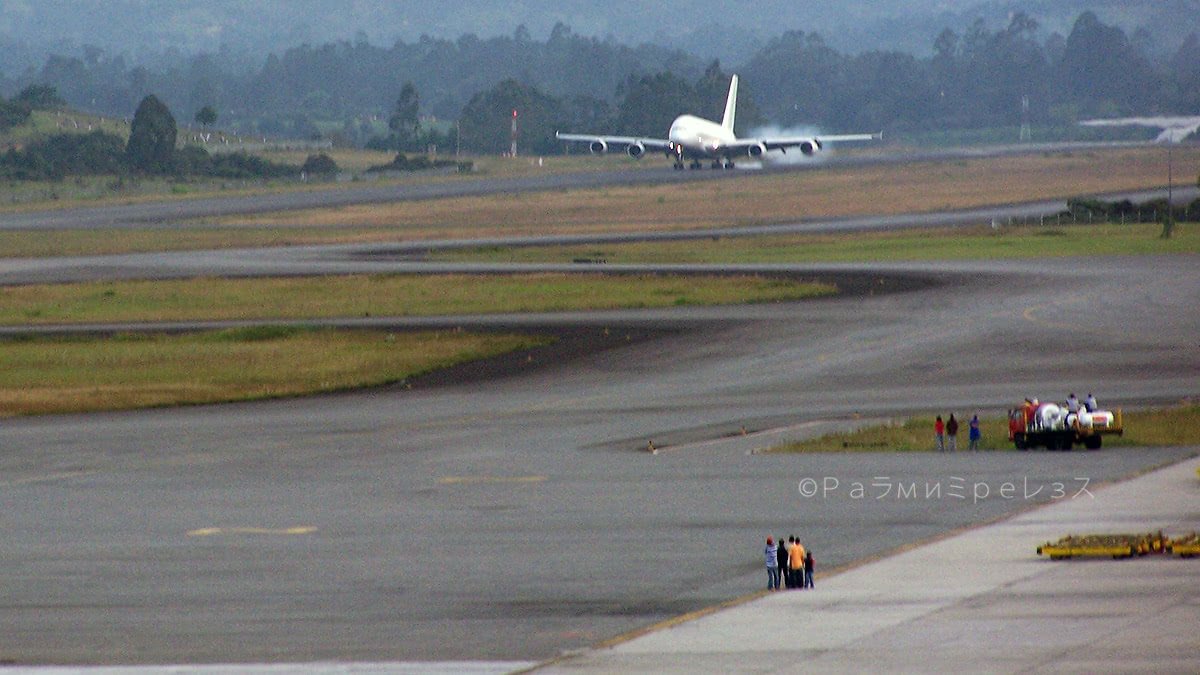
Returning…
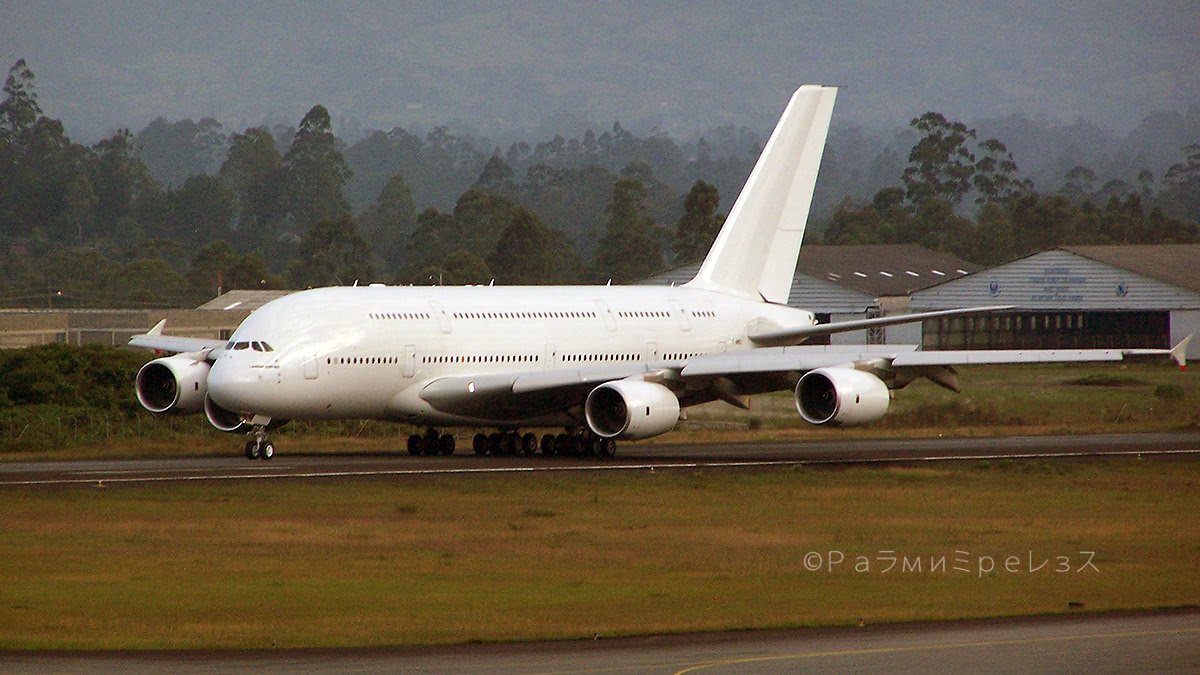
Braking…
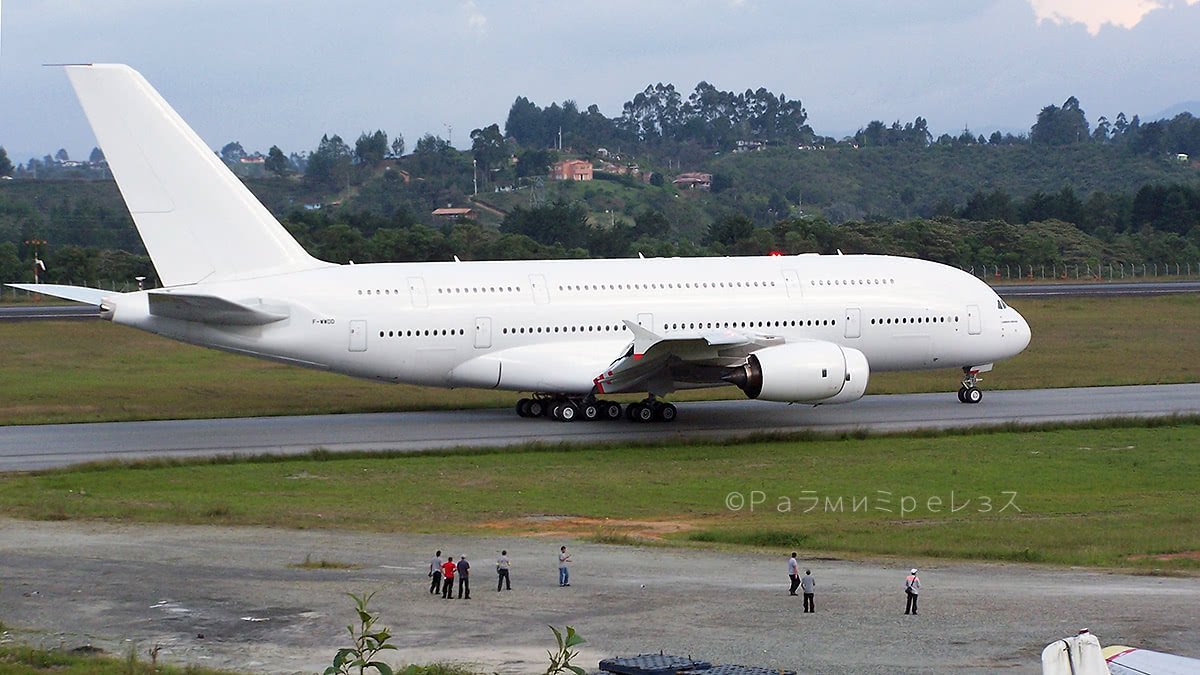
People in the Tampa Cargo hangar, and the cargo terminal, stopped their activities for a few minutes to watch the Airbus A380 taxi in front of them.
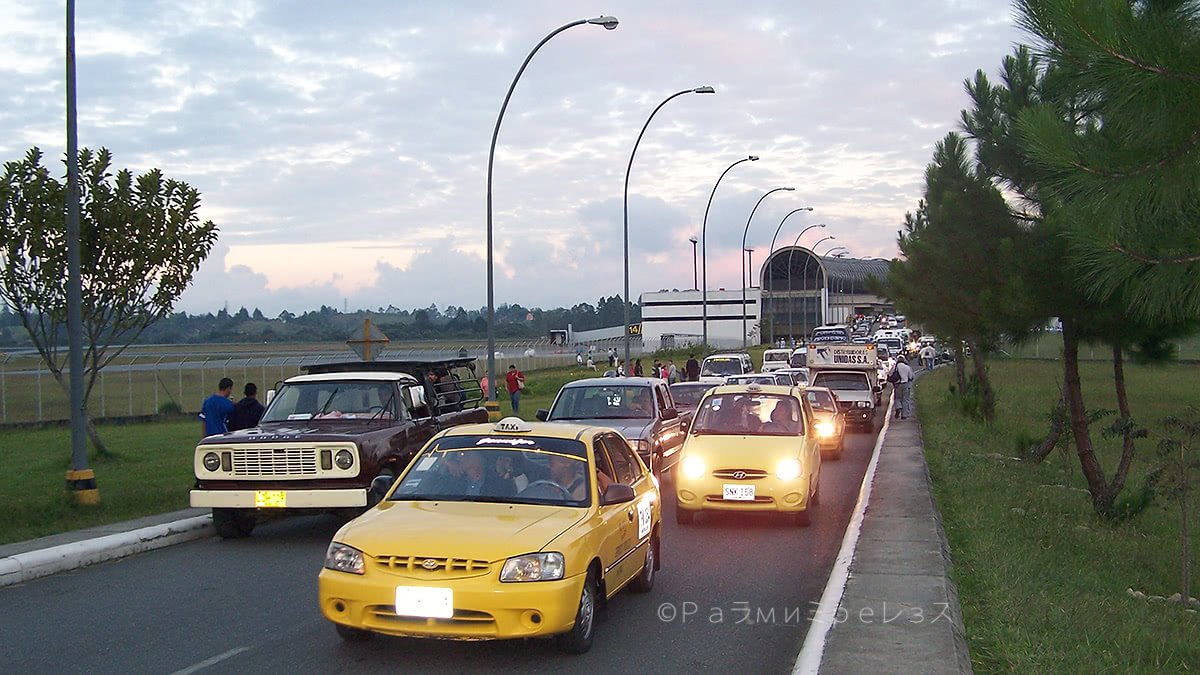
Done for the day, everybody going home! (And the traffic jam…)
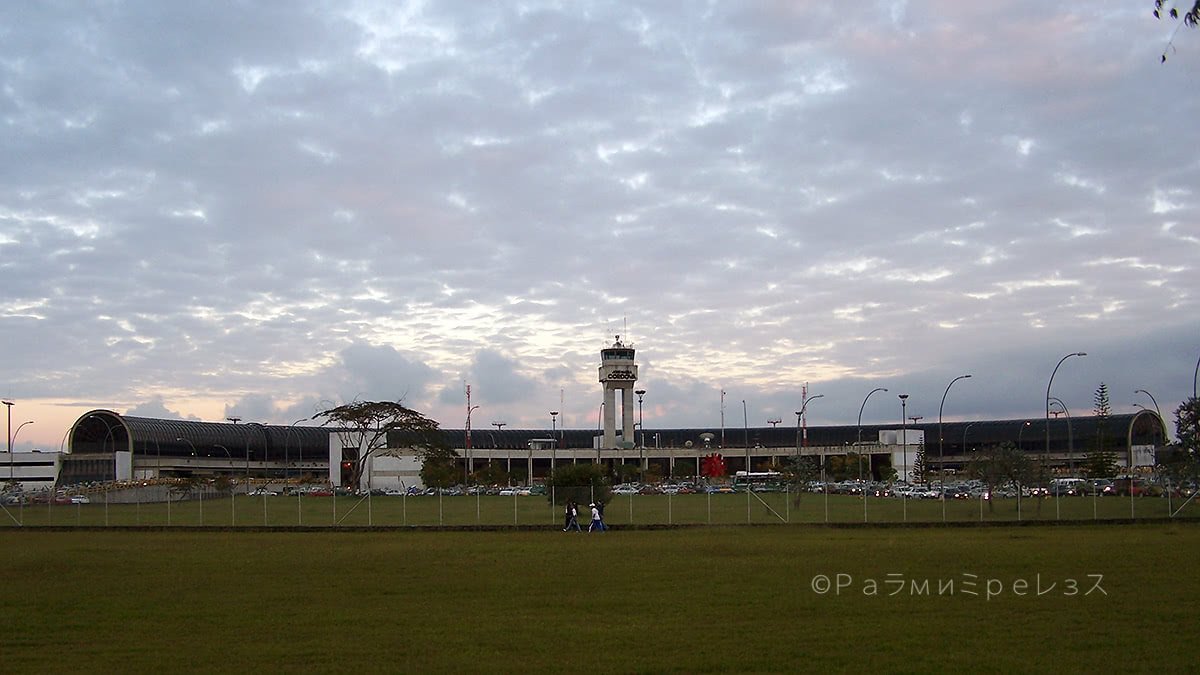
Placid traffic jam…
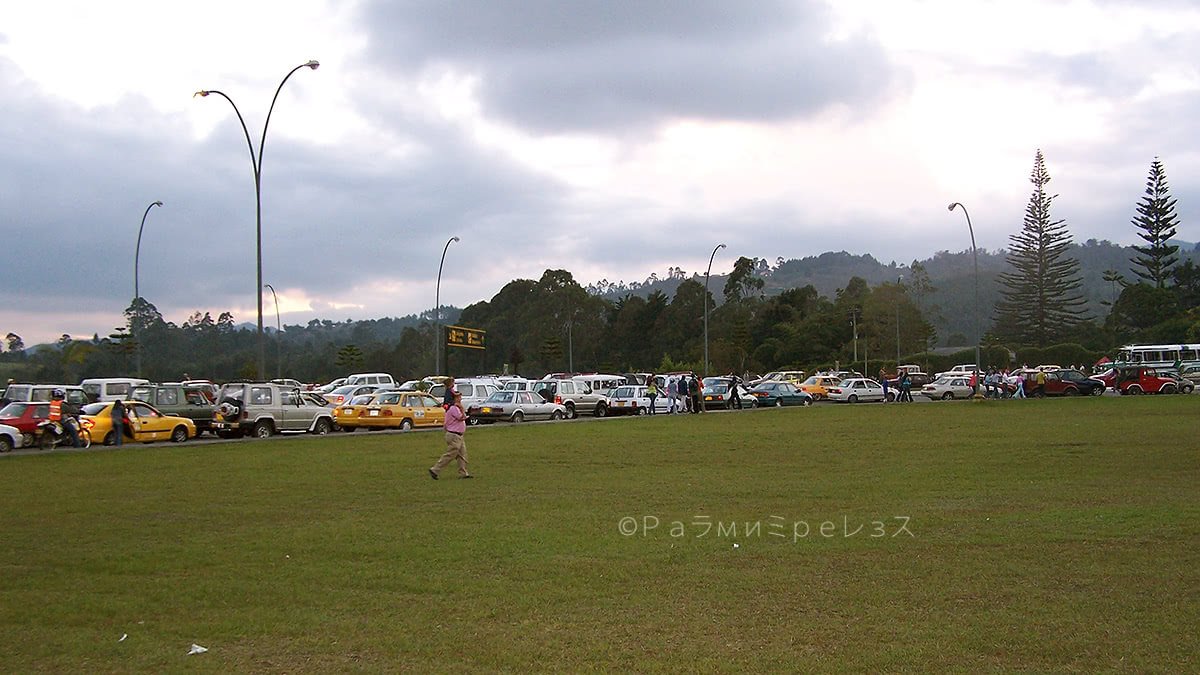
Traffic jam by day.
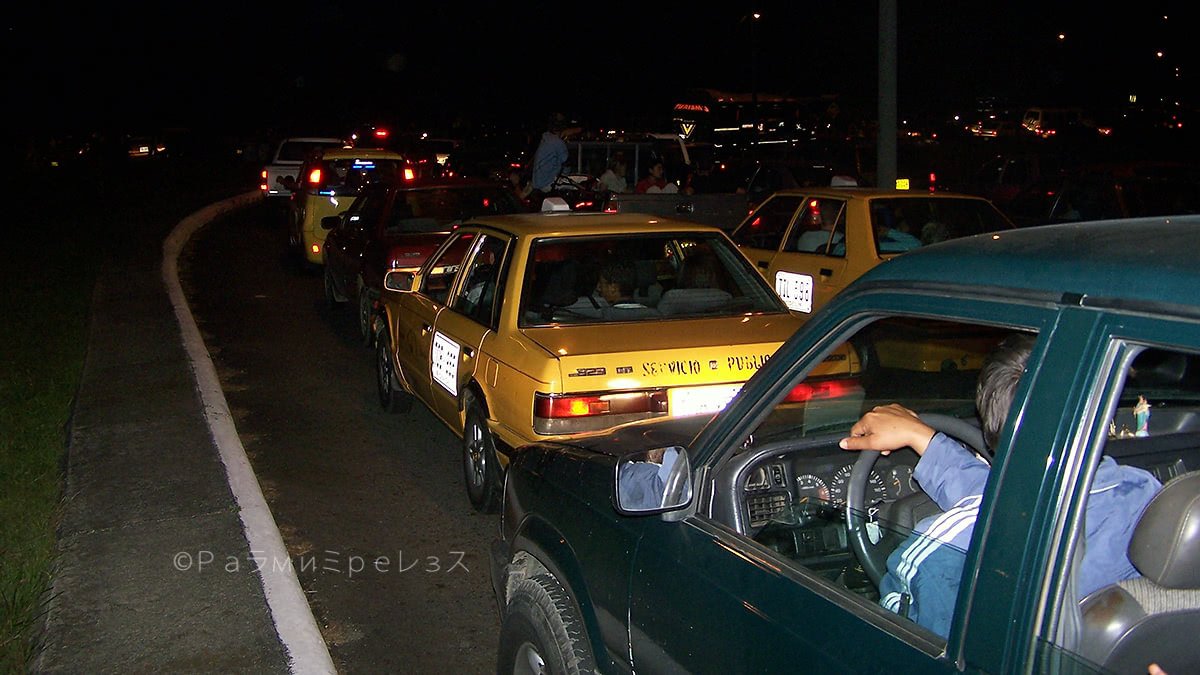
Traffic jam by night.
Evidently, the event became a chance for an outdoorsy outing. There were people selling food, and varied things.
There was even the low-level pickpocket that was caught trying to snatch something from someone’s pocket.
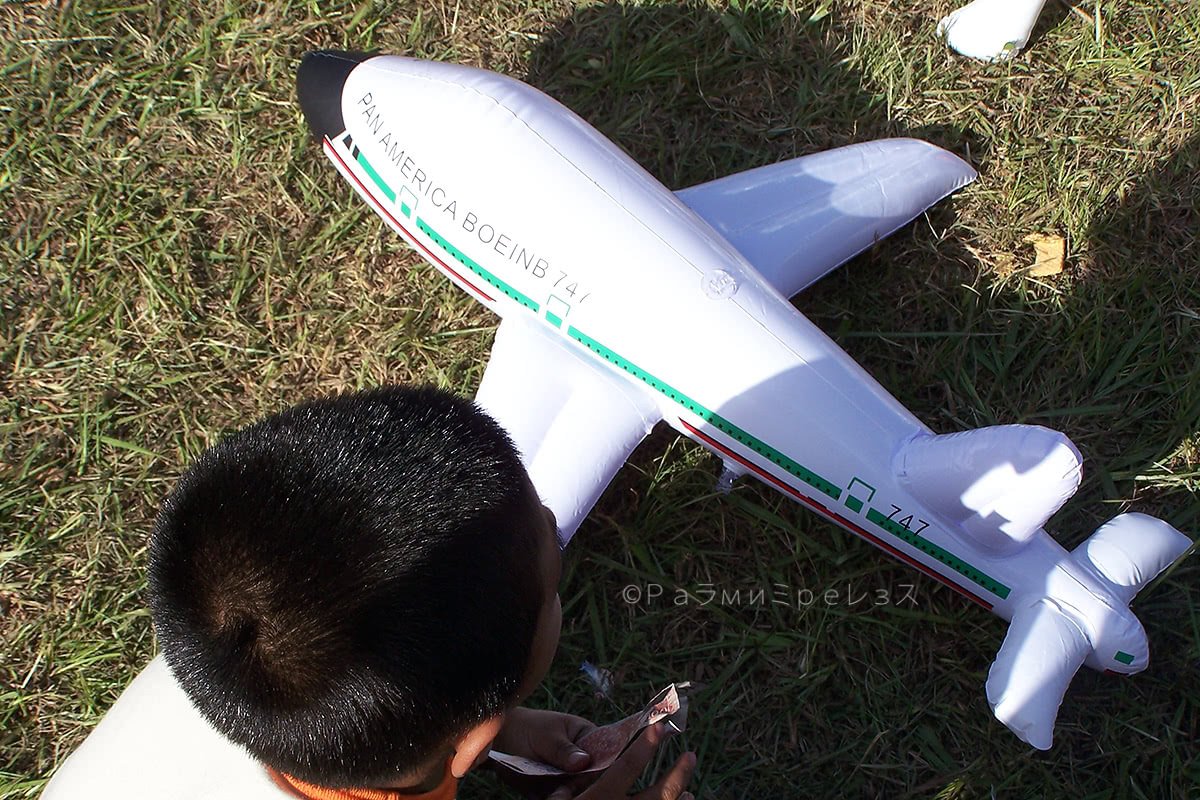
For instance, they were selling this Pan America BoeinB 747. It wasn’t Boeing, nor BoeinB, nor did it have Pan American’s colours. But anyway… it was there.

Romantic outdoorsy outing, of course.
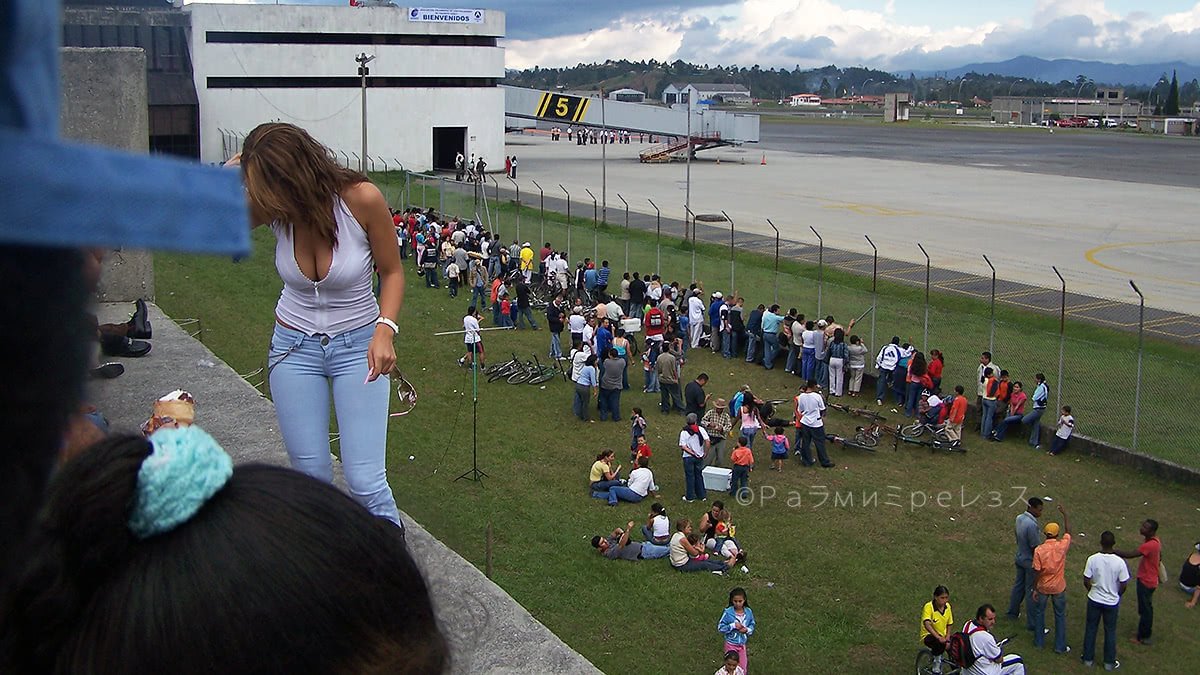
And while the traffic was calmed, and the Airbus A380 was out of sight, I had other ways to entertain myself.
The Aeroplane finished its tests, it was all satisfactory. It left to Pointe-a-Pitre, leaving forever its footprint in the José María Córdova, and the local people.
It returned to America a month afterwards, to be tested in the intense cold of Iqaluit, Canada.
Below is the last group of photos of what I could capture of the event. The following two days I had things to do (sadly), and I couldn’t go.
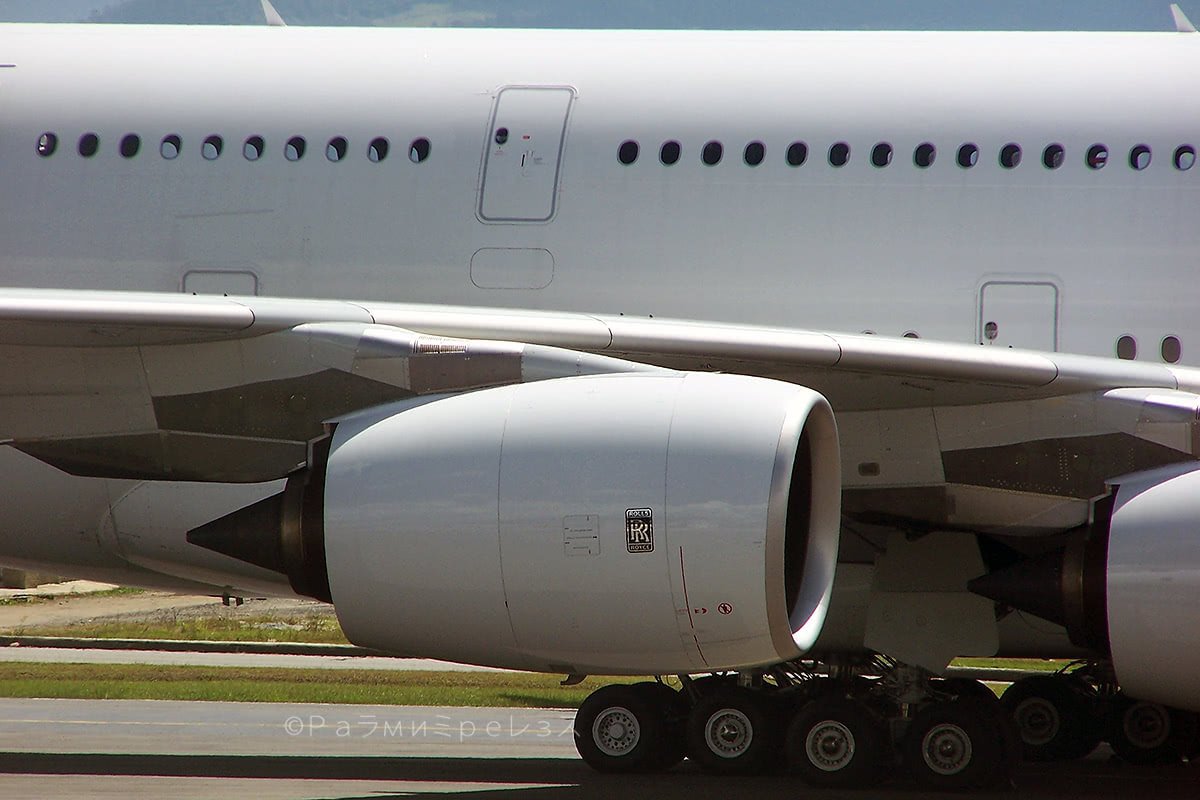
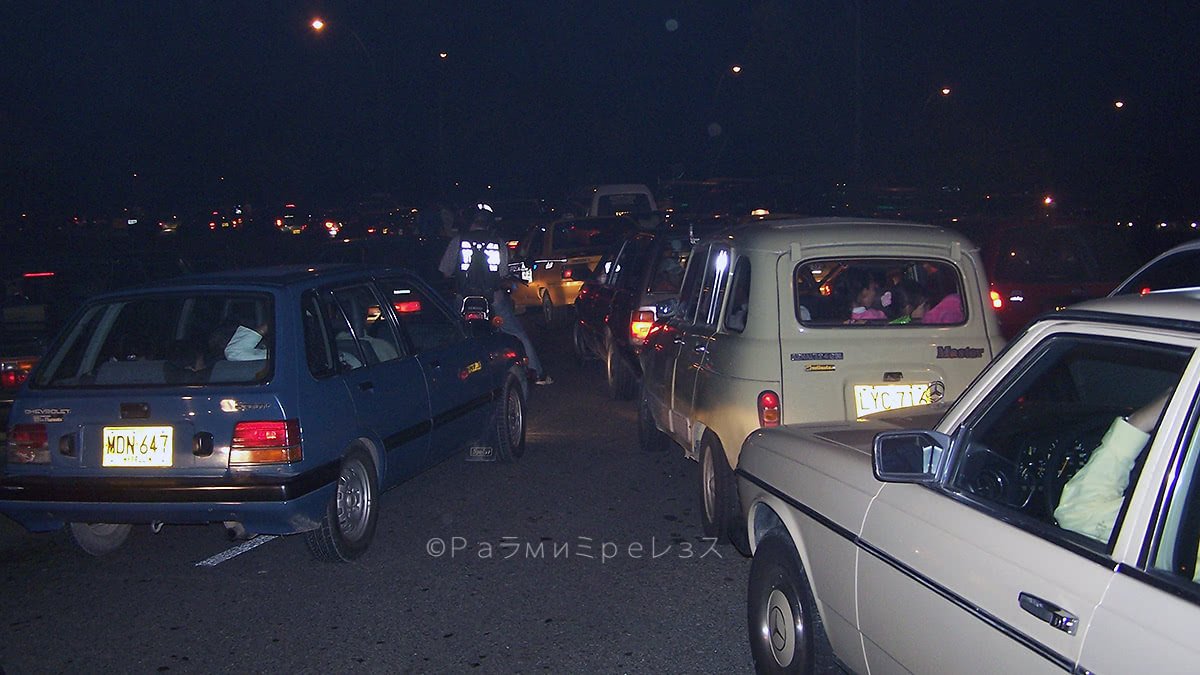
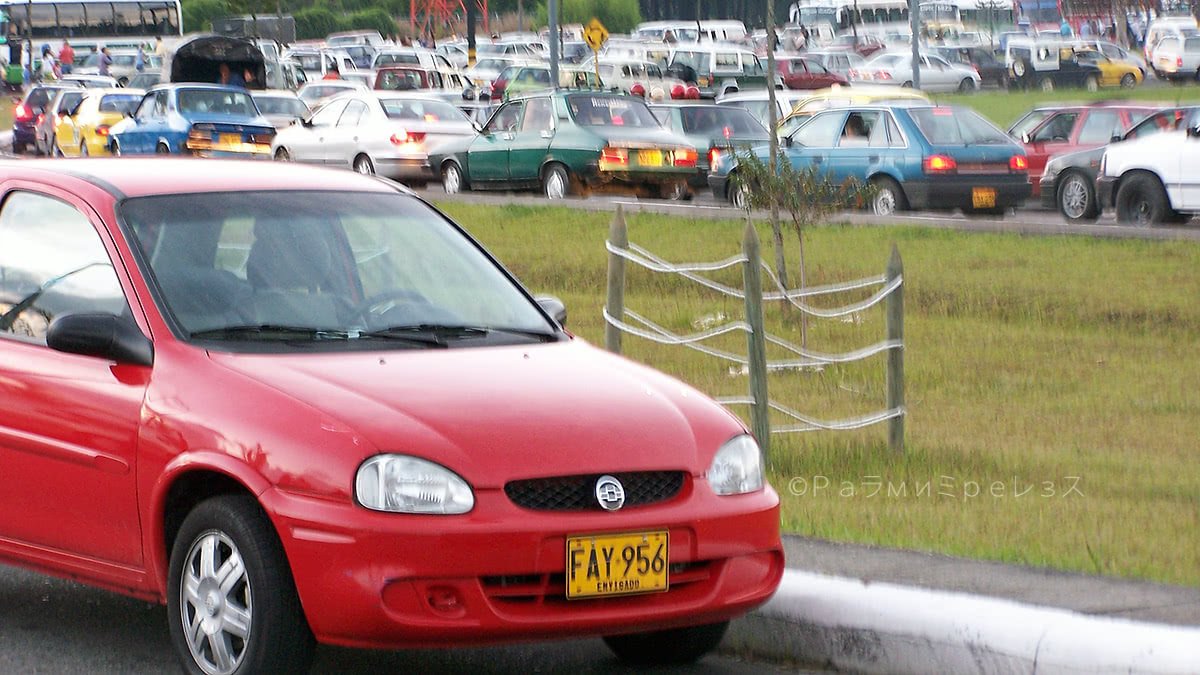
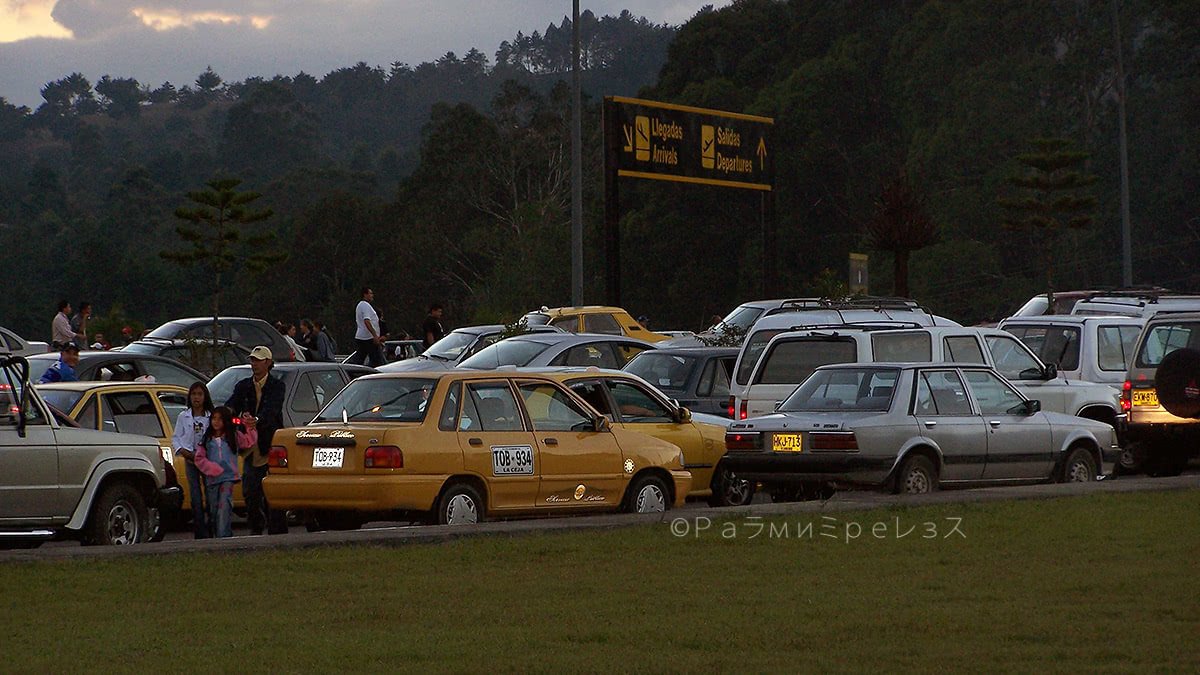
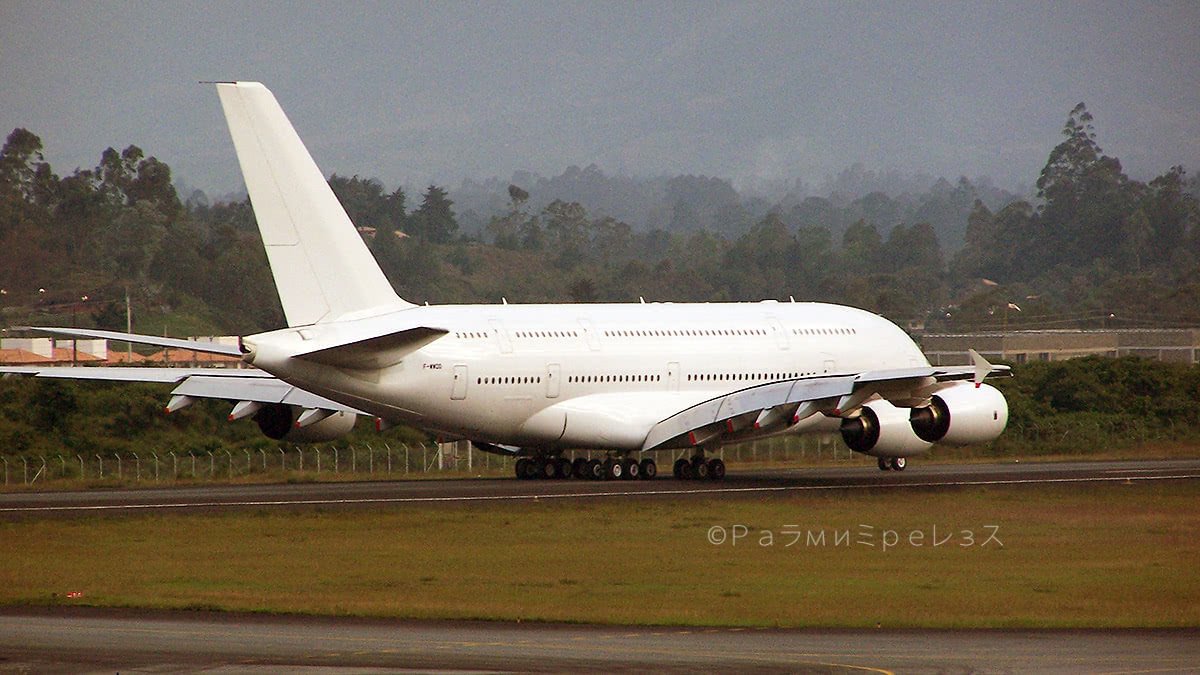
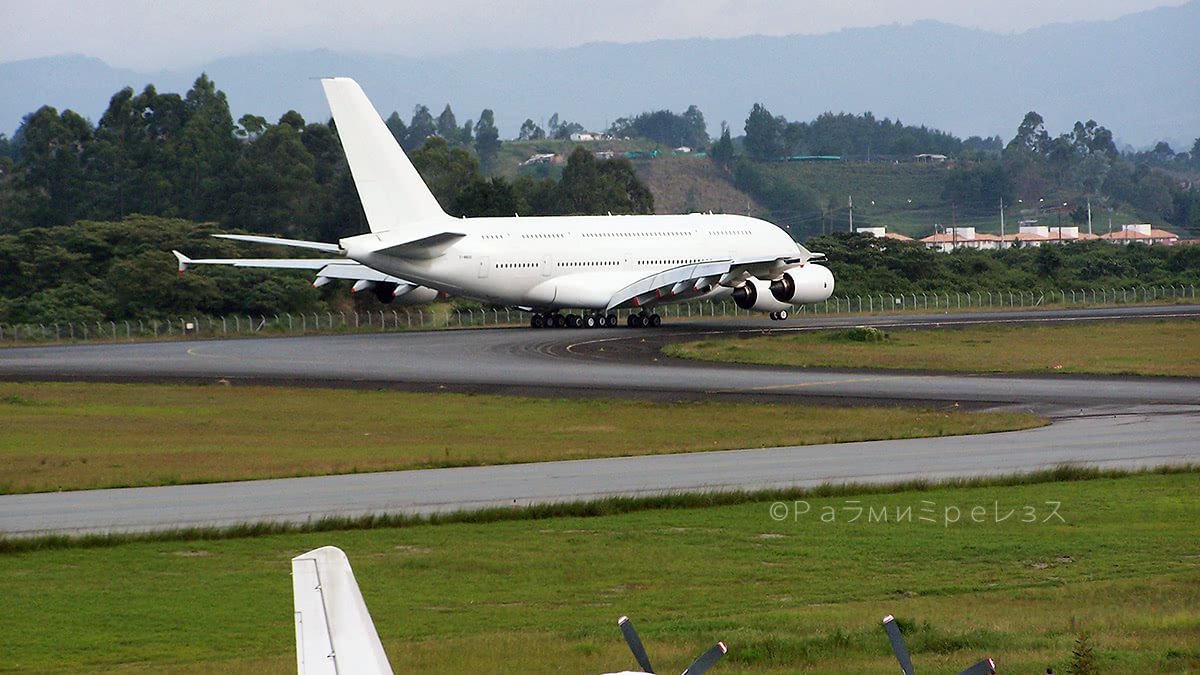
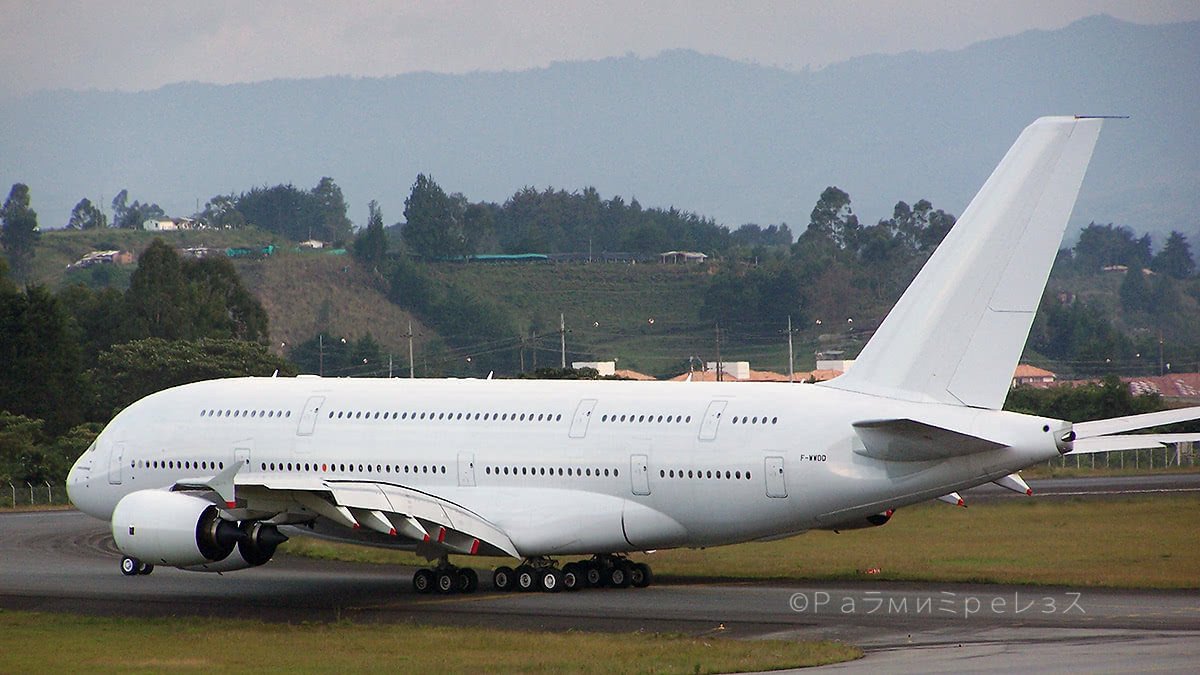
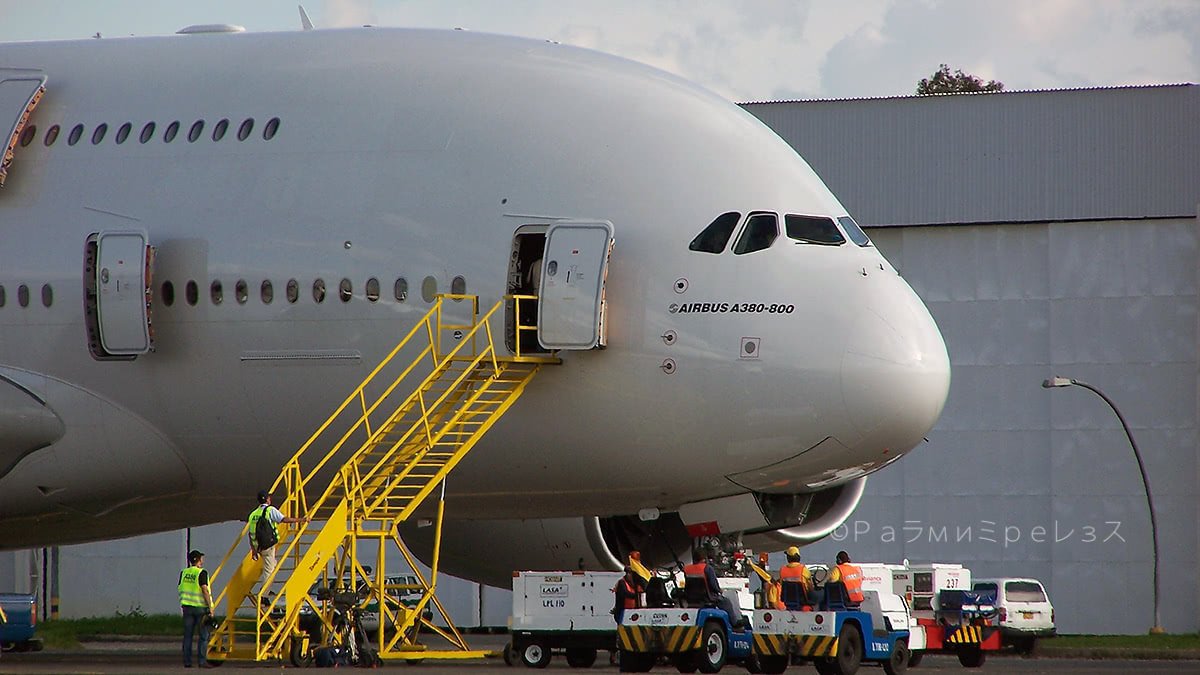

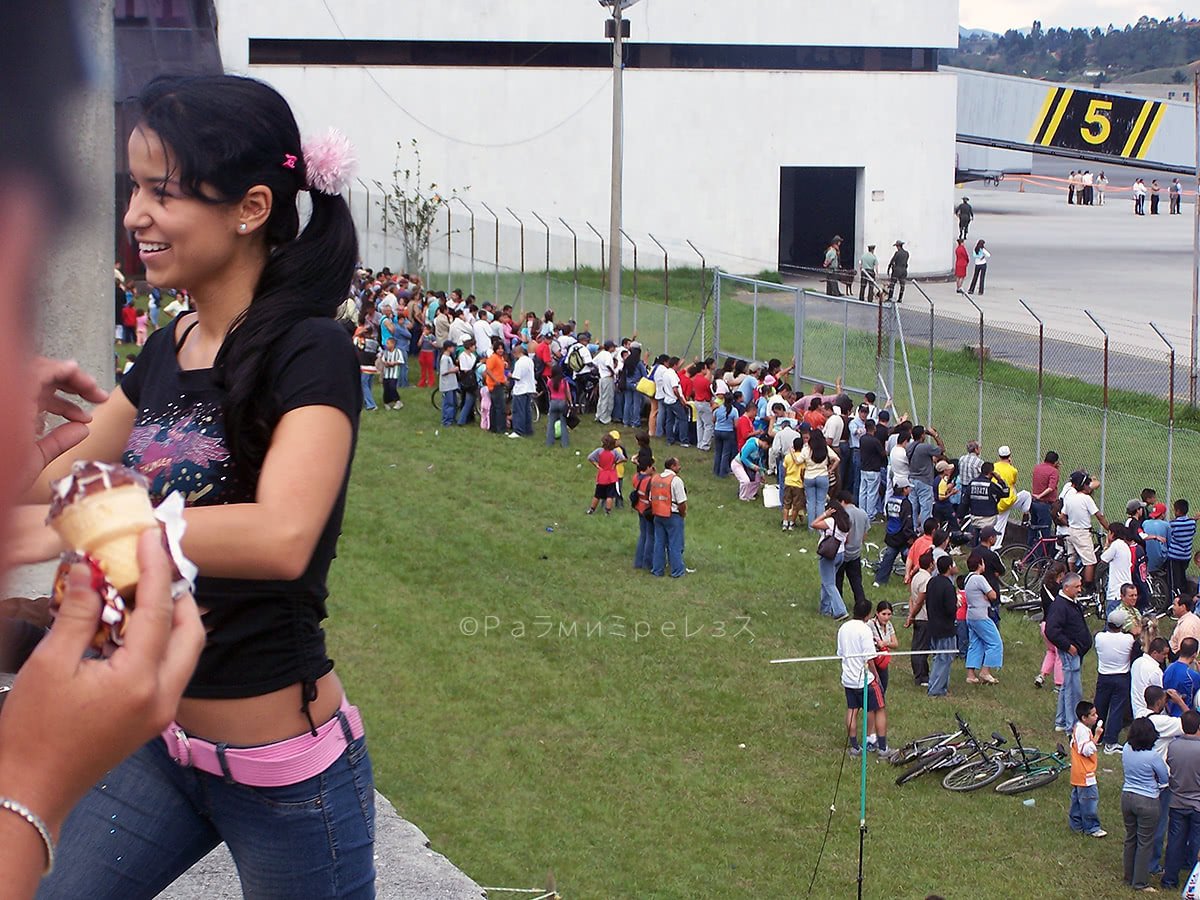
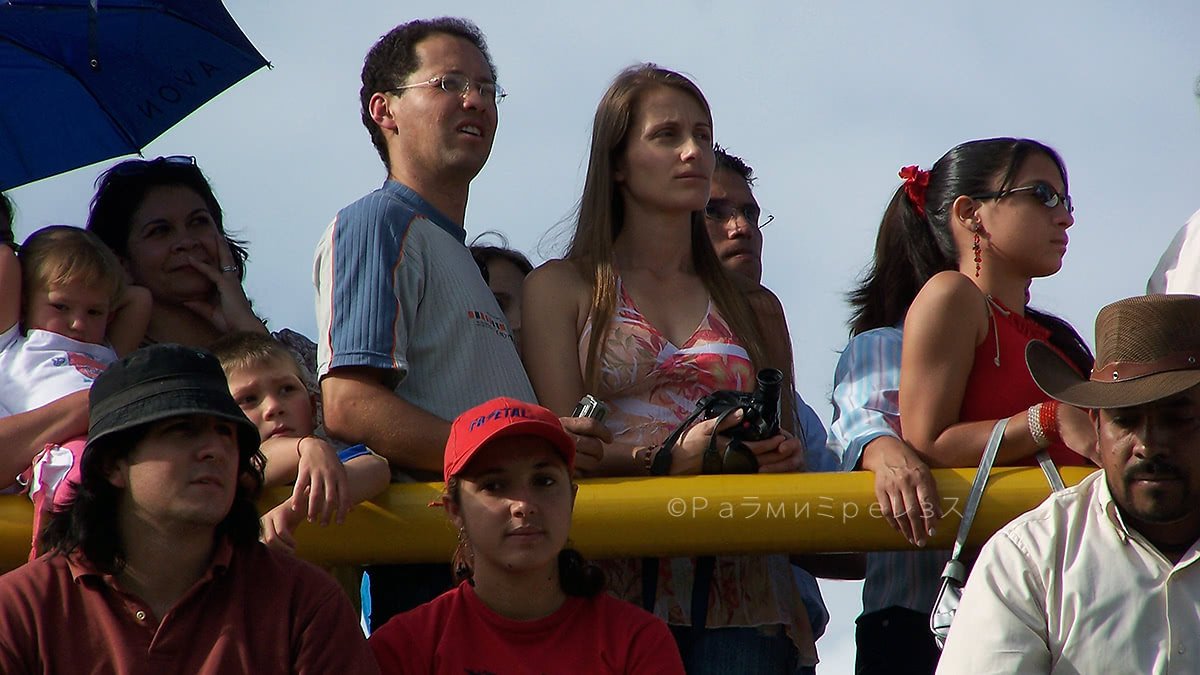
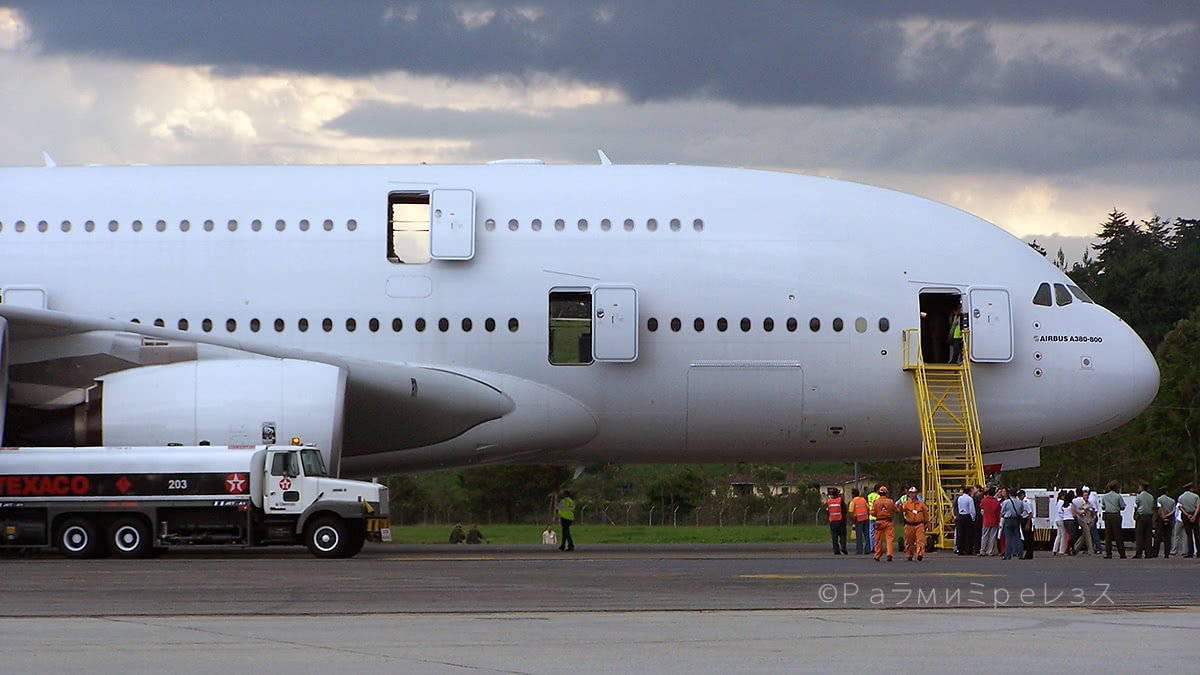
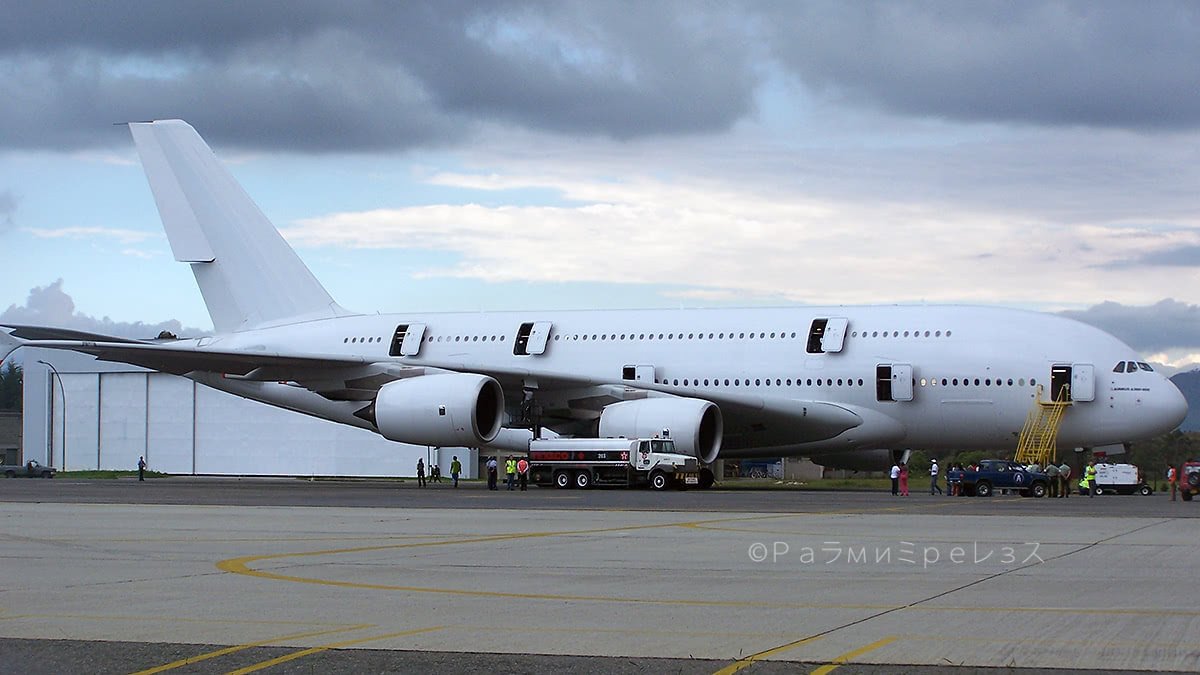
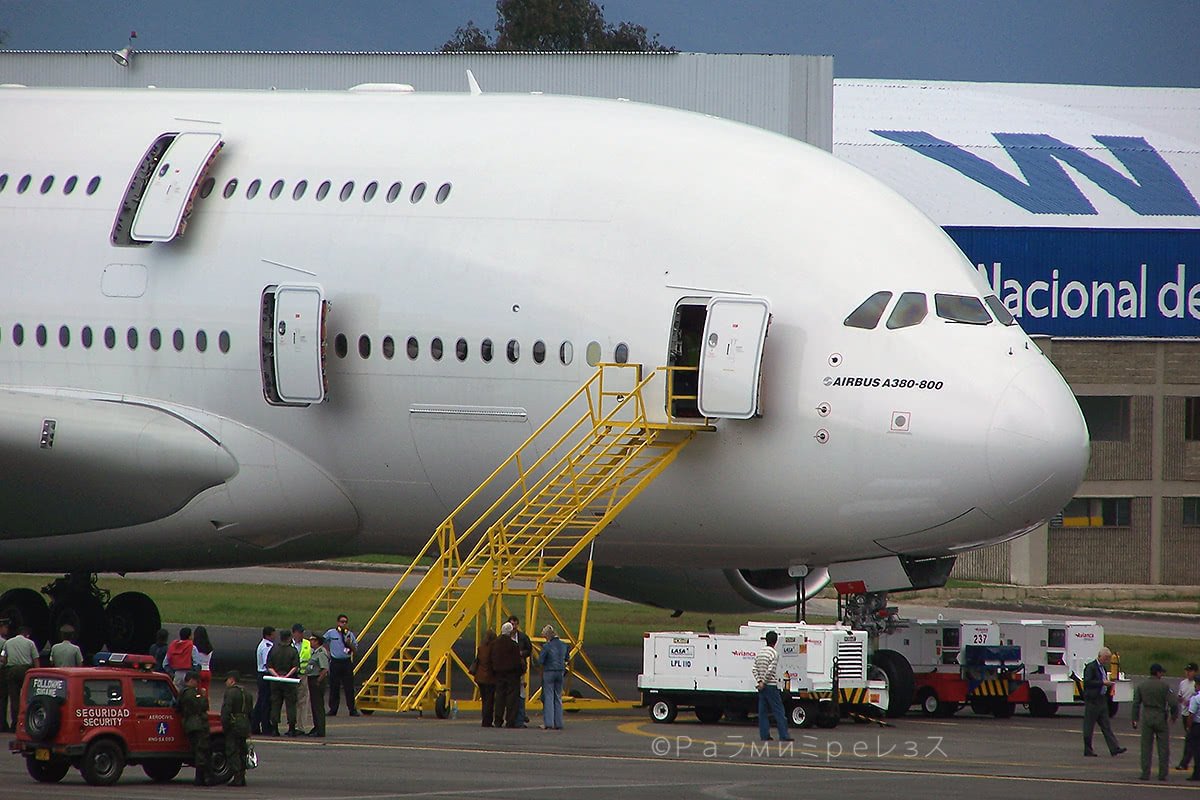
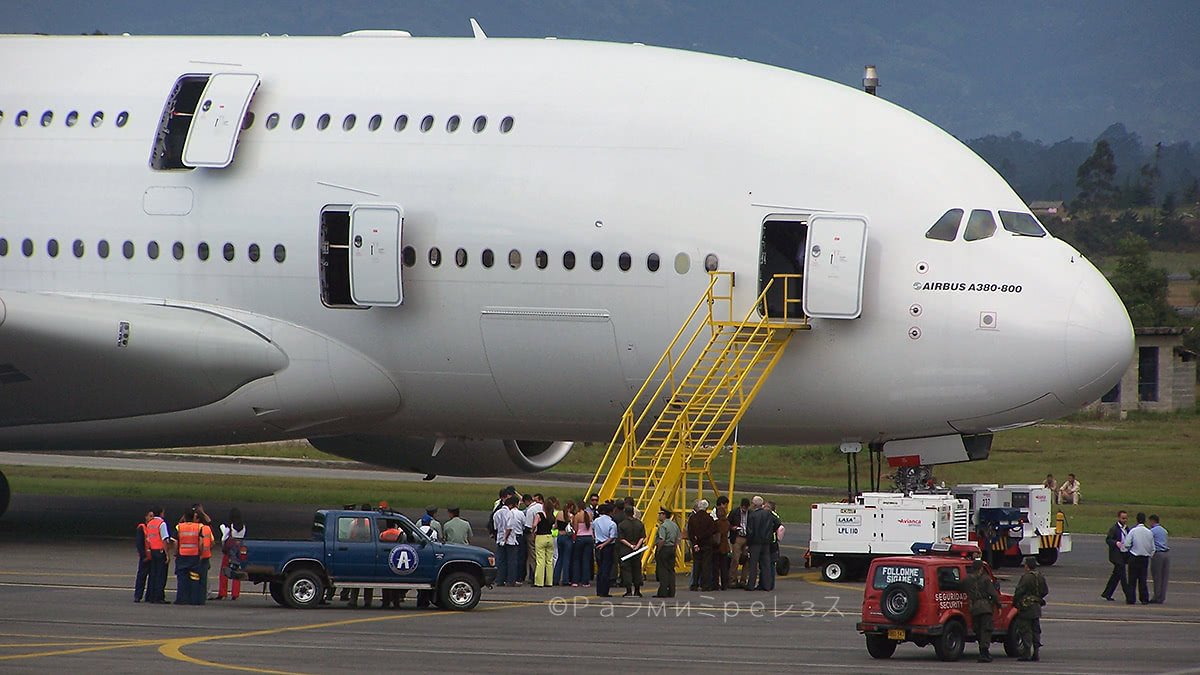
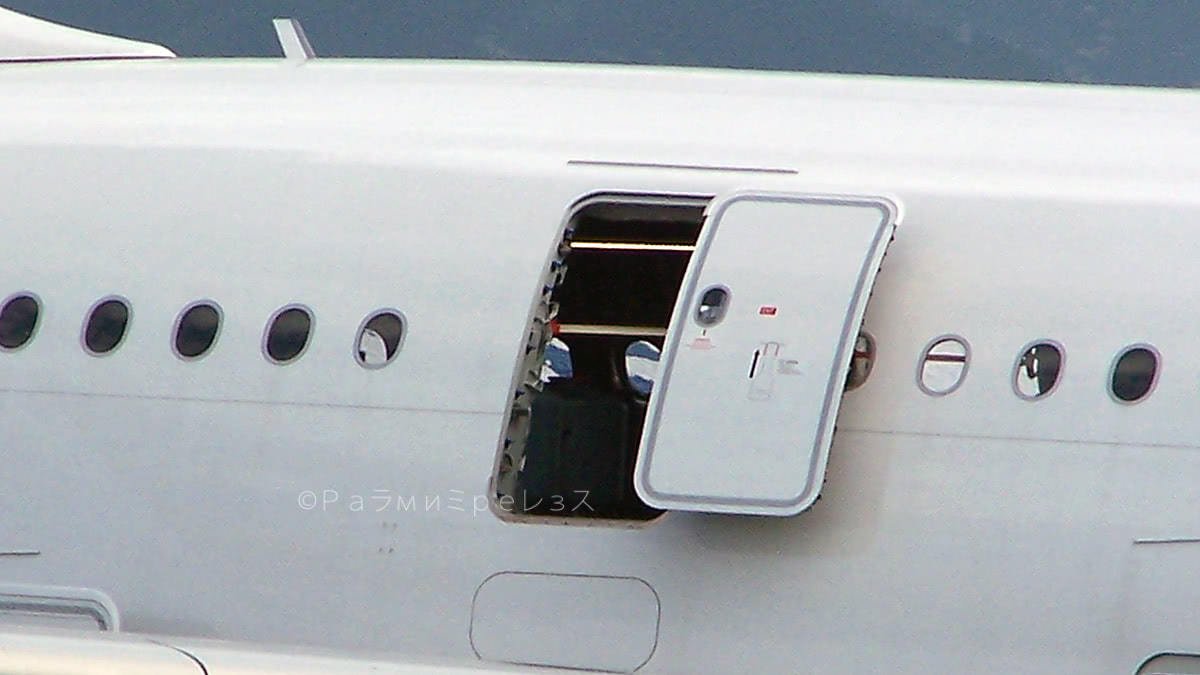
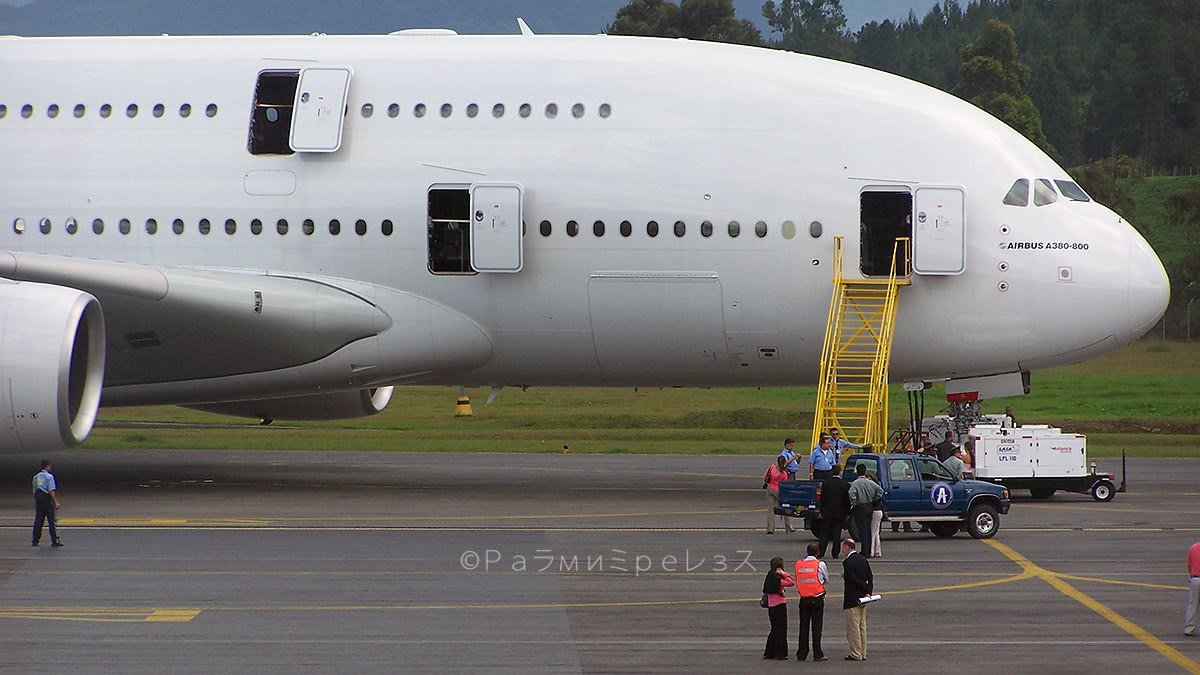
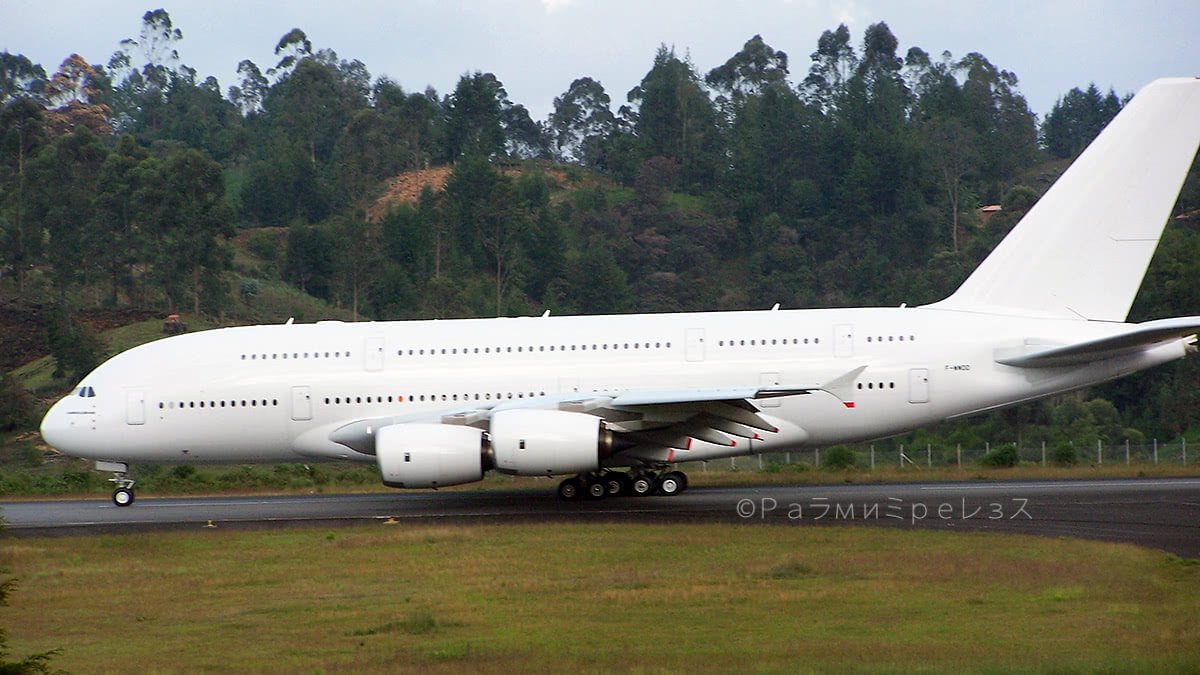
Other photos of the first time the Airbus A380 visited Colombia. January 2006.
My friend Eduardo, nonetheless, could go on January, 14th 2006. He made a video of what happened that day.
The Aeroplane would return two more times to Colombia, but this time to Bogota. It hasn’t returned ever since.
I saw it in Bogota in one of those two times.
Thanks to this event, I got in touch with a person. And time later, I ended up living in Thailand (one thing led to the other and the other). Kisses.